

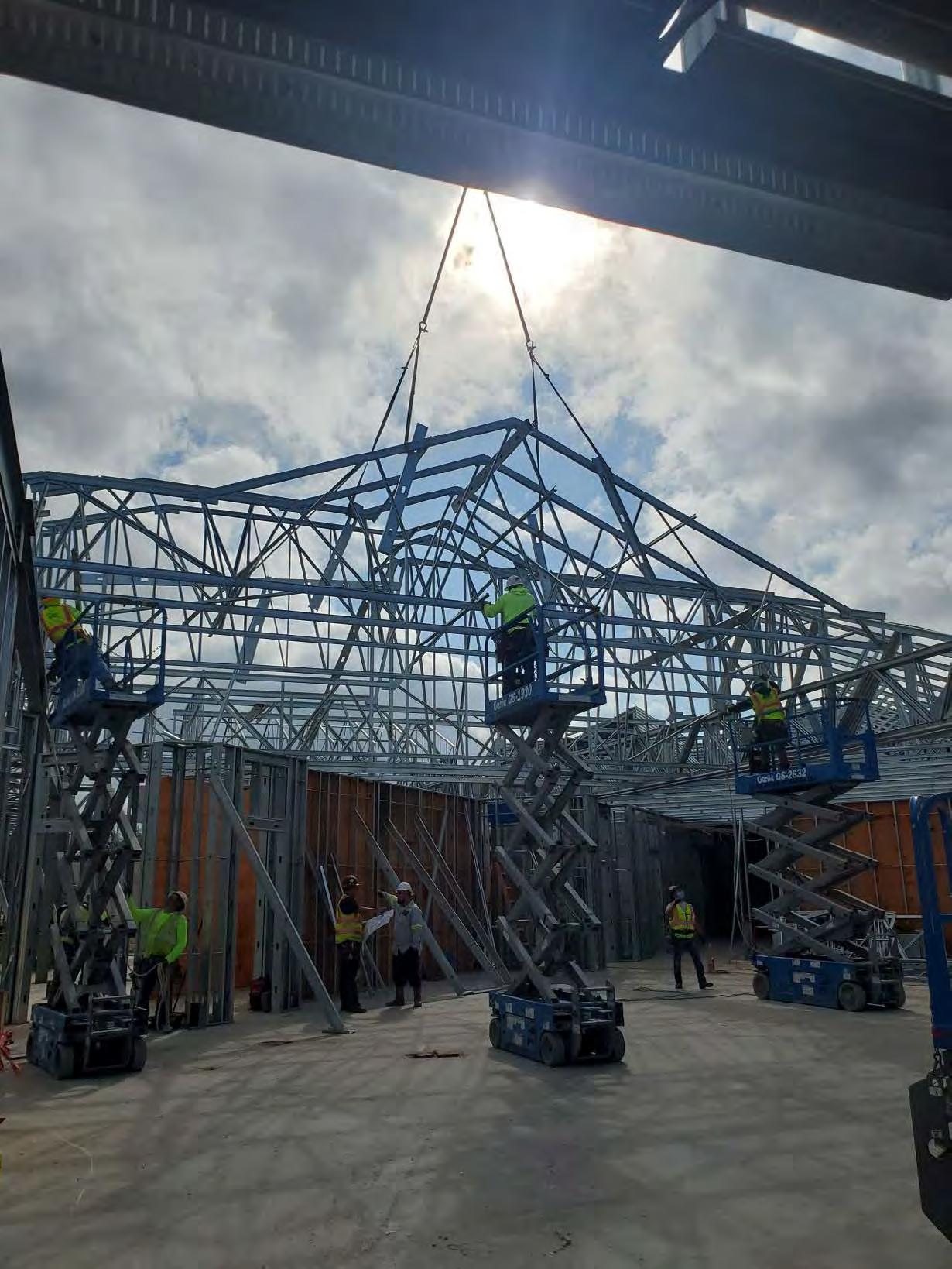


















Anna Stamm – Advertiser Forum: Learning Strategies From Football
Joe Kannapell: Home Building Technology, Part XII: Plate People Proliferate
Glenn Traylor: Do You Always Need the Shop Drawing or Engineering to Inspect a Truss?
Glenn Traylor: ¿Conoce Sus Números del Capítulo 3 de ANSI/TPI 1? (Do You Know Your ANSI/TPI 1 Chapter 3 Numbers?)
Wendy Boyd – Spida Machinery: Questions Every Truss Manufacturer Should Ask When Preparing for 2026
Ed Lim – LimTek Solutions: Do You Have CapEx Room for 2026?
Dario Schmidt – Stiles Machinery: It’s a Wrap: A Year of Transformation in Off-Site Construction
Triad/Merrick Machine Company: Refining End-of-Line Material Handling with Panel Lifts and Carts
John Holland – Paragon: What If Innovation Isn’t Just About Technology?
Todd Drummond Consulting, LLC: The Truth About AI, Plate Vendors, and the Future of Design Services
Carl Villella – Acceptance Leasing: Financing Growth in a Protectionist Era: A Strategic Playbook for Component Manufacturers
Thomas McAnally – TheJobLine: Relocation: The Game-Changer for Career Advancement
Geordie Secord – Design Connections: What Does Scope Creep Look Like in Truss Design?
Frank Woeste: Building Code Adoptions and Using AI for Ethical Feedback
Jay P. Jones – Truss Plate Institute: TPI Launches Two New ANSI Standards Projects: TPI 2 and TPI 3
MiTek Staff: Building Product and Component Test Lab Operations
Carolyn O’Hearn – Simpson Strong-Tie: Take Control with Truss Studio
Sean Shields – SBCA: New Education Symposium by SBCA for the Broader Industry
Joe Kannapell – The Last Word: Two Routes to a Great Career in Home Building





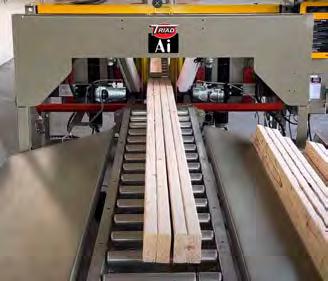






New & Used Equipment
Saws
Truss Equipment
Panel Equipment
Trucks & Trailers
Misc. Equipment
Door | Stair | Window Equipment
Calendar of Events
Safety First
TheJobLine - Jobs & Candidates
Industry News
Directory
Hiring-Zone - Jobs & Subcontractors
4Ward Solutions Group
Acceptance Leasing & Financing
Acer, Inc
All Points Technical
Alpine
BuyMetrics
Clark Industries, Inc.
CT Darnell
Eagle Metal Products
Eide Machinery Sales, Inc.
Element Equipment
Fitzgerald Group
Hiring-Z one
HOLTEC USA
Hundegger USA
LimTek Solutions
MiTek
Panels Plus
Paragon
Precision Equipment Truss Trailers
ROGworx Automation
Simpson Strong-Tie
Spida USA
Stiles Machinery
The Hain Company
TheJobLine
Timber Products Inspection
Todd Drummond Consulting, LLC
Triad | RUVO | Merrick Machine
Vekta Automation
Wasserman & Associates
West Fraser
Wolf X Machina
Wood Tech Systems
7,29,35,39,51,73,81,84,91,93,95,101,103,105, 112,113,121,123,137,138,139,151,155
27,39,41,47,49,51,57,59,61,62,63,68,69,70,71, 72,73,79,85,91,93,96,97,101,104,107,115,119, 129,131,133,137,141,156,159
Publisher
Thomas McAnally twm@componentadvertiser.org
Editor Anna L. Stamm 800-289-5627 x 3 anna@componentadvertiser.org
Distributed FREE Via e-mail subscription Download PDF or Read on line at www.componentadvertiser.com
News of Interest and Advertising inquiries can be submitted to: anna@componentadvertiser.org An Open Forum for many sources.
Deadline 20th of each month. Articles, Trade Names, and Logos are the property of their respective owner or creator unless otherwise noted
Disclaimer: We reserve the right to refuse any advertisement or material that we deem not in the interest of the industry or the Advertiser. Permission to use content is the responsibility of the contributor including permissions to use any likeness of persons.
The Advertiser is provided “As Is” including typographical errors, omissions, and mistakes both intentional and unintentional.
Believe it at your own risk! Copyright 2008-2025
Component Manufacturing Advertiser
The Advertiser 7586 Becks Grove Road Freetown, Indiana 47235 no reproduction in whole or in part without permission from the component manufacturing advertiser
Archive Copies Available On Line www.componentadvertiser.com

Anna L. Stamm Director of Communications and Marketing Component Manufacturing Advertiser.

On a warm November Sunday, after donating blood and platelets in the morning, I sat down to watch the Bucs at the Bills and relax. Just sitting and watching the action, as opposed to having the game on while doing something else, reminded me of the impressive strategies that can go into a game.
For me, watching football means our father is spending Christmas with me and my sister in Wisconsin. While browsing books and magazines, we would relax with a game (and red wine and cashews). Not knowing the rules then, I could appreciate great plays, but I couldn’t always see the strategies behind them. These days, however, I’m better versed in the sport. As the announcers become excited and we see sketches of well-executed plays, I can imagine the work involved in writing and learning the playbooks. Winning is not simply about the repetition of certain tasks – it’s about sizing up the conditions and deploying the correct strategies to gain competitive advantage while everyone executes the called plays.

Regardless of how much credit the coaches would like to take, they know their success is dependent on the players working under their direction. Like any successful business, workers and management have to collaborate. They literally have to be on the same team, and respect needs to flow both ways. Barking orders without appreciating what individuals bring to the table may win you a few games, but you’ll never have the success needed to reach the Super Bowl.
Typically, when people talk about “lessons” from sports, they focus on teamwork. But, we also need to remember that a team can only produce good work if it has a good plan to implement. If you think your team is underperforming, ask yourself this: does the team have good direction? Is the playbook up to date and has everyone been given an opportunity to learn it? Are the failures really the fault of the players?
In sports, we love the excitement of unexpected turnovers, and we don’t envy the player who fumbled the ball. We prefer to identify with winners and revel in our team’s successes. But, when your team fumbles, are you willing to take responsibility and dig deeper, to see if the underlying strategy needs to be fixed?



Monet DeSauw FWA 500 Floor Web Cutter
• Push Button Powered Blade Angulations
• Single Push Button Setting for 2 Blades per Side
• Electronic Digital Readouts
• Backup Mechanical Indicators
• Cuts 4 Angle Webs, Cantilever Webs (2 piece webs) & Square Blocks
• Magazine Lumber Feed for 3x2, 4x2 and 6x2 Lumber 12 1/2” to 48 1/2” Length Capacity (7” Minimum on Square Blocks)
• 60 Pieces per Minute
• (4) Internal 16” Blades & (1) External 16” Cut-Off Blade
• Pneumatic Blade Brake on External Blade
• Dust Hoods
• Belt Waste Conveyor (under saw)
• Add $4,300 for 12’ Incline Waste Conveyor (adjacent to saw)
• Add $2,100 for Extra Set of Blades
• 480 Volt / 3 Phase FOBMO Call For Pricing


• Automated (Truss Design Software Download) or SemiAutomated (Touch Screen Entry) Operation
• All Movements are Computer & PLC Controlled
• Comprehensive Setup Screens Display Each Piece with Setup Data
• 22” x 40 Tooth Blade on PAE Cut 1 or 2 Boards up to 20’ (2 Second Plunge Cut)
• Cut Chords, Webs, Rafters, Wedges & Stair Stringers
• Cut Long Scarfs by MultiPlunging
• Servo Positioning on Infeed, Angle & Outfeed Pusher
• Over Travel Protection
• Ink Jet Printer
• Lumber Optimization Program
• Belt Waste Conveyor
• 480 Volt / 3 Phase / 60 Amp
• Includes 5 Day Onsite Installation & Training
• Optional Monet DeSauw Live Deck, Bunk Feeder & Incline Belt Waste Conveyor FOB MO Call For Pricing
• Touch Screen User Interface with Backup Mechanical Controls
• 3 Operating Modes: Auto, SemiAuto & Manual
• All 20 Axes of Movements are Computer & PLC Controlled
• Comprehensive Setup Screens Display Each Piece with Setup Data
• Anti-Collision & Optimizing Programming
• Auto Calibration Productivity & Time Tracking
• Maintenance Diagnostics
• Variable Speed Conveyor (0-50 Flights per Minute)with Powered Hold Downs
• (1) 30” x 80 Tooth Blade (27 3/4” Scarf on PAE)
• (4) 16” x 40 Tooth Blades (13 1/2” Scarf on Centerline)
• Pneumatic Blade Brakes on all 5 Blades
• 16 1/2” to 20’ Length Capacity (11” Minimum on Square End Blocks)
• Vibrating Waste Conveyor Under Saw
• 480 Volt / 3 Phase
• Includes 4 Day Onsite Installation & Training
• Add $2,900 for Extra Set of Blades
• Optional Live Deck, Label Printer, Ink Jet Printer, Catcher Display & Incline Belt Waste Conveyor.

Automatic Truss Jigging System to drastically reduce setup times. Allows for 100% embedment on the table, with top & bottom chord pucks in the same slot. TopSider or standard configurations available for conventional kick-leg, walk-thru, or our new trackless 8' and 10' continuous table systems. Systems for other roller & hydraulic gantries are coming soon. Available in new machine installations or for retro-fitting your existing table. The TopSider is exclusively applicable for “kick or flip leg” style truss presses such as the Tri-Axis & Lumbermater®

• Capable of 100% On-Table Nail Plate Embedment
• Two Pucks Per Slot
• 24", 26", and/or 30" Spacing
• Compatible with all current major design software
• Multiple Simultaneous Layouts







Missed the show? Catch up by reviewing our recap materials and exploring what’s new through downloadable content.

Thank you to all the building partners who made this event possible!


By Joe Kannapell
Agreat American competitive struggle broke out in truss shops around Miami in 1957. The owners of these shops learned that two new plates had hit the market, and both worked without supplementary nailing. The Sanford GripPlate that they were using required hundreds of nails to be hammered into the joints of every truss they built. They now could choose between the Gang-Nail plate, which had long teeth that needed a press to be embedded, and the Ronel Barb-Grip plate, which had shorter teeth that could be hammered but didn’t need any extra nails. Would they remain loyal to the charismatic Sanford who ‘brought them to the ball’ or would they jump ship? Their decision rested on most of the factors that owners consider today, but one additional factor was at play that is no longer considered, namely, patent protection, which was a formidable midcentury barrier to entry.
With the rapid uptake of his Grip-Plate, Carol Sanford believed that by securing its patent, he would gain the same competitive advantages that accrued to his father, John Sanford, a successful inventor and holder of multiple patents. Carol was raised in Canton, Ohio during its industrial heyday, and he returned there in 1954 to engage the major patent law firm of Ely, Frye, and Hamilton (now Renner Kenner LLC). Aided by their counsel, Carol applied for a Grip-Plate patent and subsequently stamped “Patent Pending #2,827,676” on his cardboard plate boxes.
To early truss shop owners, this implicit warning on plate boxes may have deterred their defection, but to Sanford’s competitors, this would have carried lesser weight. Engineers Cal Jureit of Gang-Nail and Yilmaz (Jerry) Akdoruk of Ronel knew that their inventions performed better, but they also knew that they had to prove that in court. So they both sought legal opinions. Jureit went to Washington, D.C., the home of the U.S. Patent Office, and engaged the local patent law firm of Diggins LeBlanc (now LeBlanc Diggins), and Akdoruk followed suit. Based on the advice they were given, they both took the surest route to counter Sanford’s patent by filing their own applications, Jureit in 1955 and 1956, and Akdoruk in 1957. With these applications in hand, they could at least temporarily counter Sanford’s legal rationale against changing plates. However, Sanford still was able to avert some defections by promoting the value of his huge library of engineering designs, which he had amassed during his three-year-longer tenure in the plate business. However, Sanford recognized his vulnerability and immediately embarked his company on a search for an improved plate design, an arduous process that came at an inopportune time.
Sanford was already stretched to the limit ramping up his business and taking it world-wide. Nevertheless, his urgency to invent a new plate became acute because he knew that Jureit understood plate design even better than he did. Jureit had witnessed every one of Sanford’s multiple tests to perfect his Grip-Plate, and when Sanford saw Jureit’s Gang-Nail plate, his concerns were heightened. Fortunately, the peripatetic Sanford could delegate the drudgery of developing a new plate to his new hire, Bill McAlpine, while he expanded sales.

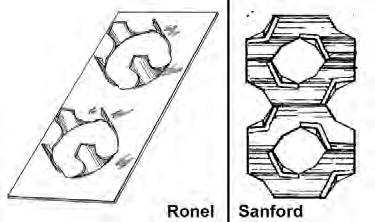
Bill McAlpine, a Notre Dame graduate and experienced professional engineer, took the rival plates to the testing lab. There he found out how difficult it was to embed Gang-Nail’s longer teeth, while he learned that the clusters of Ronel’s short teeth could be embedded with a single hammer blow. However, when he tested their gripping strength, he found that the greater density and length of Gang-Nail’s teeth provided significantly better results. So McAlpine took an approach that combined the best features of both plates. He opted for clusters of shorter teeth, but with a much-increased density. However, he could not avoid infringing Ronel’s patent by simply improving upon gripping strength. He had to provide features that did not duplicate the claims specified in the Ronel patent, and he did just that. McAlpine conceived a design that used rectangular and not circular clusters, he oriented the teeth diagonally on the plate, and he increased the density of the clusters to provide better gripping strength. After having sample tooling made, and conducting extensive and iterative testing, McAlpine settled on a final design. He was also able to view Jureit’s patent that was granted in early 1959 before he filed a patent application in late 1959. Ronel’s patent was granted in early 1961 and McAlpine’s in late 1963.
Several months after Sanford released his new plate, he met nine more potential competitors at the July 5, 1960 meeting in Miami that resulted in the creation of the Truss Plate Institute and its new design standard, TPI-60 (see “The Development of the Truss Plate, Part VI: An Industry Established”). Even though that standard gave no hint of the extensive work that was required to develop a competitive plate design, multiple attendees decided to try. Many could take direction from plates used in their local market, as Sanford demonstrated with the similarity of his new plate to Ronel’s, but at the risk of violating someone’s patent.
Carol Sanford had set a precedent for plate producers by seeking patent protection for his first plate and then replacing that plate with a better one a few years later. Jureit and Akdoruk confirmed that approach by countering with their own patents. And when Jureit subsequently observed both Akdoruk and Sanford using thinner steel, he redesigned his Gang-Nail plate and submitted a second patent application in early 1963. In the 1960s, nearly 30 patents were issued to plate suppliers, quickening the great American competitive struggle and leading to a battle in the courts.
Next Month: Truss Equipment Proliferates


Transform your truss operation with an integrated solution from Simpson Strong-Tie. The industry leader in truss plates now brings you a full suite of software, equipment, hardware and services to drive truss component manufacturing from idea to installation. Start with CS Director™, CS Truss Studio™, CS EWP Studio™ and CS Producer™ for design, layout, production and project management. Use our powerful Monet DeSauw industrial saws to cut webs, chords, stair stringers, rafters and wedges with speed and precision. Specify the optimal connectors, anchors and Strong-Drive® structural fasteners for every project. You can also complement your team with our professional truss design services at any time. Altogether, you have a smart solution made to increase productivity, ensure high quality and take your business to the next level.
To learn more, contact your representative at (800) 999-5099 or visit us online. go.strongtie.com/cm













The industry’s most powerful integrated component design, engineering, and management software for steel and wood-framed structures.
iCommand
Manage projects, customers, materials, pricing & inventory
iModel
Design truss layout & profiles
iDesign
Optimize material usage & engineer trusses
iPanel
Design wall layouts, panelize, bundle, break & stack
eShop
Maximize crew productivity & improve manufacturing efficiency



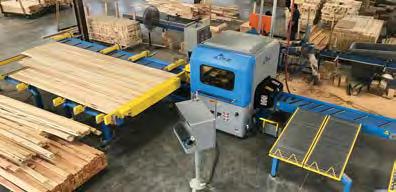


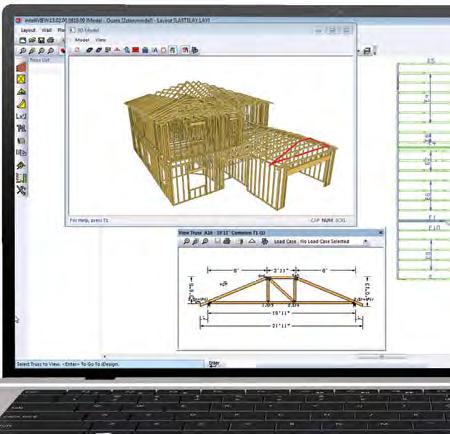
The IntelliVIEW Suite is a fully integrated software solution for the layout and design of a building’s rough framing elements—including roof and floor trusses, wall panels, solid sawn, EWP, sheathing and various ancillaries.
The IntelliVIEW Suite provides the industry’s most complete analysis of the design, cost information and bill of materials—promoting increased profits by reducing plate and lumber use.
Ask those who know. They’ll tell you about the people at Alpine who make a difference.



2016 Spida Vector Saw with Truss Automation
• Automated Stop and Automated Saw Angulation as directed by Truss Design Software
• Direct Drive 5.5 HP Motor with 18” Blade
• Minimum Angle of 9 Degrees with 24” Stroke for Long Scarf Cuts
• Automated 162 Degree Angular Movement
• Adjustable Stroke Limiter for Operator Safety
• Dust Extraction Outlet (Excludes Dust Collection System)
• 20’ of Steel Framed/Wood Top Table with Automated 20’ Length Stop
• 10’ Infeed Roller Conveyor
• Touch Screen Computer with Truss Cutting Operating Software
• Excludes Installation/Training and Spida Annual Tech Support Fee
$35,000 FOB KS
Wasserman & Associates 800-382-0329 www.wasserman-associates.com


Tired of Massive Job Boards Giving You Useless Candidates?
Post and Manage Multiple Jobs and Multiple Candidates
New Application Notices and Internal Candidate Messaging Keeps your search confidential Manage on Your Phone or Computer For Additional Information twm@Hiring-Zone.com Visit our Website: .Hiring-Zone.com



A truss plant isn’t just about square footage. It’s about
CT Darnell Construction’s design-build approach delivers:
• Facilities tailored to your operation and equipment
• Smarter layouts for safer load-ins and faster turns
• Integrated storage and optimized SKU management
With nearly 40 years of LBM experience and more than 4,500 completed projects, we build turnkey truss facilities designed to perform from day one. Visit sunbelt-rack.com/stories/ to see our latest truss project in action.


By Glenn Traylor
I’ve been asked: do you always need a shop drawing or the engineering to inspect a truss? The quick answer if you are conducting an ANSI/TPI 1 Chapter 3 audit is that you must have a design drawing that specifies plate sizes, placement, and lumber grade requirements in addition to overall heights and overall lengths of the truss. This information must be verified and recorded as inspected. Any deviations must be noted with the inspection paperwork. This can be done with paper or digital methods as long as the information is genuine non-preferential.
But, not all “inspections” have to be official, and your frequent visits to the assembly area can be productive even when you’re not carrying around design information.
Often, plants have projections of the design at the table or lasers are projecting critical information.
An effective system prints plate location and information directly on the lumber, making quick observations easy.
In fact, there is a category of inspections that can be made by anyone, which I call the “low hanging fruit.” Here are some examples.
The first photo shows excessively rotated connectors, which is a frequent noncompliance issue. Standards require no more than a 10-degree variation. Keep in mind that some designs have a 5-degree variation and rarely a zerodegree variation.


Large member-to-member gaps are easy to see, such as in the second photo. Your familiarity with 3-1/2” faces makes it fairly easy to see when a gap exceeds 1/8”. If it’s close, you might need a tape measure or better yet a 1/8” gauge.


The third photo is another example of excessive rotation. This should be easy to see unless it’s on the bottom side. Often this happens on the back side of the truss, so it may not be as apparent.
Wildly misplaced floor truss splices are also easy to see. The one in the fourth photo seems to be pretty obvious. This one effectively replaces your 3x10 with a 3x6 capacity connector. That is a 40% reduction in the designed connector, assuming the back plate is similar.


The problem in the final photo might not be as easy to recognize at first glance but, with experience, this situation should shine like a blinking light. Chord splices normally require a significant amount of plate covering the splice. Not always but most of the time, and this plate is placed too high. This is a common mistake by inexperienced builders. Also note the cut on a web, which is not against the vertical.

In addition to formal inspections when you need to have your documentation, many mistakes can be identified with simple observations. These photos have shown the most common examples, and you should consider posting them in the shop, so everyone can use them as prompts to ask questions.
Remember, the more you can educate the people working in your plant, the more they will be able to maintain the quality of your components. Anyone who sees a mistake ought to be able to recognize it, which is the first step in getting it fixed before it leaves the shop.
An ANSI/TPI 1 3rd Party Quality Assurance Authorized Agent covering the Southeastern United States, Glenn Traylor is an independent consultant with almost four decades of experience in the structural building components industry. Glenn serves as a trainer-evaluator-auditor covering sales, design, PM, QA, customer service, and production elements of the truss industry. He also provides project management specifically pertaining to structural building components, including onsite inspections and ANSI/TPI 1 compliance assessments. Glenn provides new plant and retrofit designs, equipment evaluations, ROI, capacity analysis, and CPM analysis.
Glenn Traylor Structural Building Components Industry Consultant
http://www.linkedin.com/in/glenntraylor
With the terrific response to Glenn’s October article, “Do You Know Your ANSI/TPI 1 Chapter 3 Numbers?” , we’re pleased to announce that Glenn has done a Spanish translation!
Now, you can distribute this vital reference as a handout with English on one side and Spanish on the other side.
On the next page in this December issue is the Spanish version, “¿Conoce Sus Números del Capítulo 3 de ANSI/ TPI 1?”
For your convenience, the English version is reprinted in this issue too.
Our thanks to Glenn for providing these articles!



By Glenn Traylor
nspirado por las frecuentes solicitudes de una referencia rápida, he creado una hoja única de la guía del Capítulo 3 de ANSI/TPI 1, similar a una versión de CliffsNotes del estándar. Tenga en cuenta que se omiten detalles importantes; para una comprensión completa, consulte el estándar completo, Norma Nacional de Diseño para la Construcción de Cerchas de Madera Conectadas con Placas Metálicas, disponible en el sitio web del Truss Plate Institute: https://www.tpinst.org/documents
3 se requieren inspecciones por semana por turno por estación (Sección 3.3.2)
3/4” variación de la longitud de diseño (Sección 3.5.1)
1/2” variación de la altura de diseño (Sección 3.5.1)
1/2” variación de la longitud de cercha a cercha (Sección 3.5.1)
1/4” variación de la altura de cercha a cercha (Sección 3.5.1)
No menos de 1 junta crítica por cercha seleccionada para inspección cada semana (Sección 3.7.1)
1/8” variación del punto medio de la placa crítica si no hay un polígono presente en la junta crítica (Sección 3.7.2.1d)
10% más o menos es la variación de rotación de la placa permitida a menos que se indique lo contrario (Sección 3.7.3)
1/32” es la holgura máxima de incrustación permitida de un conector instalado (Sección 3.7.5.1)
1/8” es la holgura máxima de miembro a miembro, excepto para los cordones del piso (Sección 3.7.6.1)
1/16” es la holgura máxima de miembro a miembro para los cordones del piso (Sección 3.7.6.1)
3/4” es el ancho mínimo de un metal de calce para corregir la holgura de miembro a miembro (Sección 3.7.6.3)
1/4 de la longitud del diente es la longitud máxima del diente visible para los dientes aplanados (Sección 3.7.7.1)
0% es el valor del área donde se retiró madera al retirar un conector (Sección 3.9.2)
50% es el valor del área donde se retiraron los dientes pero no se retiró madera (Sección 3.9.3)
Aunque una hoja de resumen puede ayudar a recordar cifras importantes, no debe sustituir a una comprensión completa del estándar. Animo a dedicar unos minutos a leer el estándar para garantizar una comprensión completa.
Glenn Traylor Consultor de la industria de componentes estructurales para la construcción http://www.linkedin.com/in/glenntraylor


By Glenn Traylor
nspired by frequent requests for a quick reference, I’ve created a single-sheet ANSI/TPI 1 Chapter 3 guide—similar to a CliffsNotes version of the standard. Please note that important details are omitted; for a complete understanding, consult the full standard, National Design Standard for Metal Plate Connected Wood Truss Construction, available from the Truss Plate Institute website: https://www.tpinst.org/documents.
3 inspections per week per shift per station are required (Section 3.3.2)
3/4” variation from design length (Section 3.5.1)
1/2” variation from design height (Section 3.5.1)
1/2” variation truss to truss length (Section 3.5.1)
1/4” variation truss to truss height (Section 3.5.1)
No less than 1 critical joint per truss selected for inspection each week (Section 3.7.1)
1/8” midpoint variation of critical plate if no polygon is present on critical joint (Section 3.7.2.1d)
10% plus or minus is the allowable plate rotation variation unless otherwise noted (Section 3.7.3)
1/32” is the maximum allowable embedment gap of an installed connector (Section 3.7.5.1)
1/8” is the maximum member to member gap except for floor chords (Section 3.7.6.1)
1/16” is the maximum member to member gap for floor chords (Section 3.7.6.1)
3/4” is the minimum width of a shimming metal to correct member to member gap (Section 3.7.6.3)
1/4 of tooth length is the maximum tooth length visible for flattened teeth (Section 3.7.7.1)
0% is the value of the area where wood was removed while removing a connector (Section 3.9.2)
50% is the value of the area where teeth were removed but no wood was removed (Section 3.9.3)
Although a summary sheet may assist in recalling important figures, it should not substitute for a thorough understanding of the standard. I encourage dedicating a few minutes to reading the standard to ensure complete comprehension.
Glenn Traylor Structural Building Components Industry Consultant
http://www.linkedin.com/in/glenntraylor

The truss industry relies on 3rd party quality assurance services to provide random visits to review the plants Quality Assurance program along with their operations. If your plant needs to comply with the IRC, IBC and to those who depend on solid, experienced QA expertise, we ask you to consider selecting Timber Products Inspection, Inc. (TP) as your choice for 3rd party inspections.
Proudly serving the forest products industry for over 50 years, TP brings the expertise you need to ensure your business is successful. As a responsible partner, TP delivers to clients, employees, and the industries we serve the confidence to drive value through the effective use of our diverse professional team.
TP would like to welcome the following authorized agents to our inspection team, each of whom have many years of experience in the truss industry!
• Al Coffman

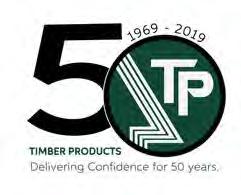
• Jean Hart • Curt Holler • Chuck Ray
Glenn Traylor • Elliot Wilson
If you have questions about how you can make this selection, please contact your authorized agent above or Glenn Traylor at 919-280-5905 or trusguy@gmail.com. https://www.tpinspection.com/ https://www.tpinspection.com/auditing-services/truss
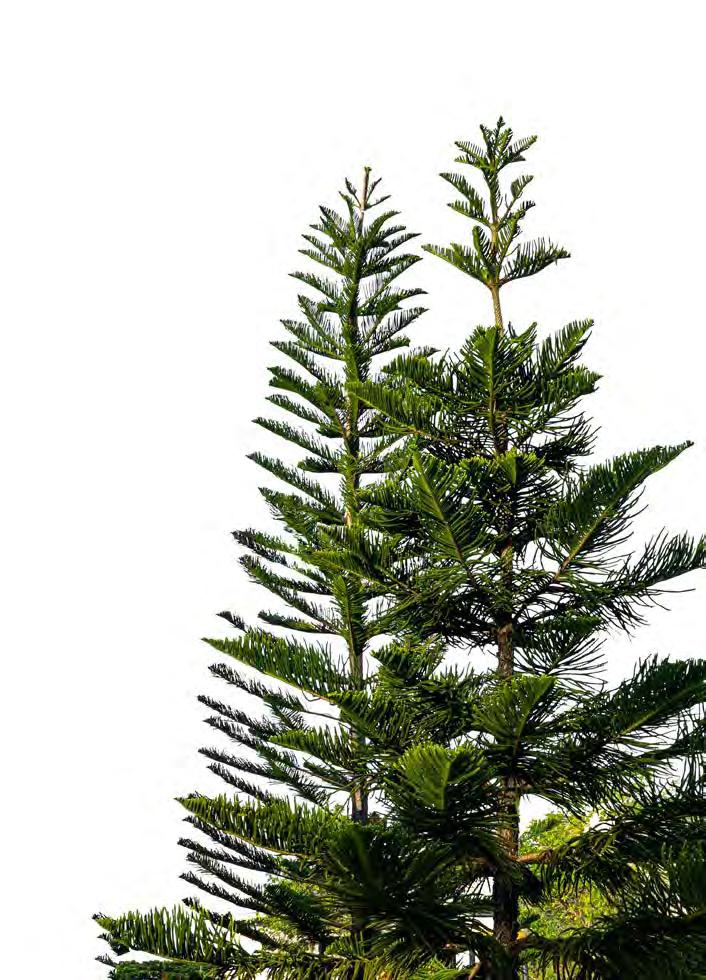
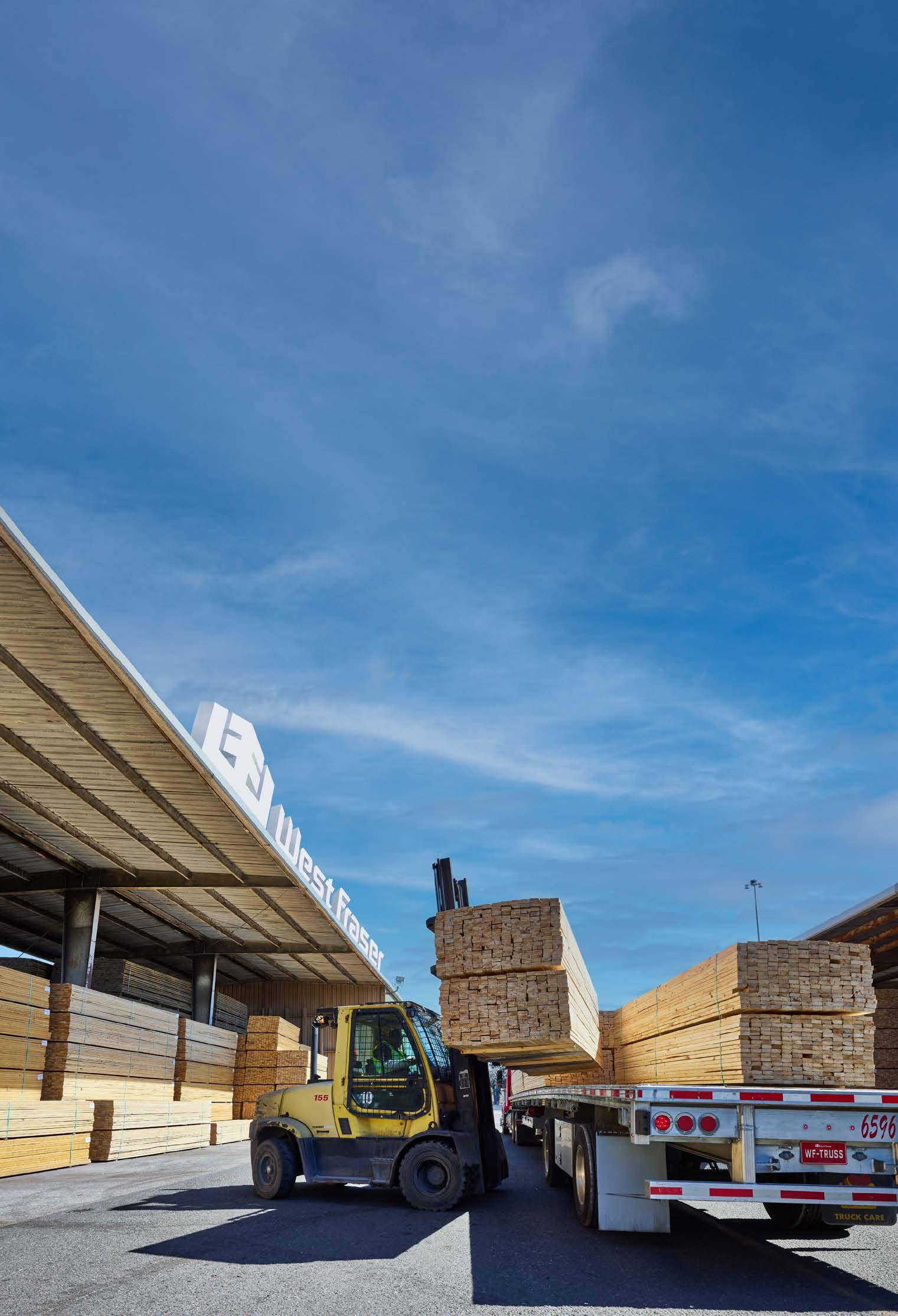




The ProCut™ UC Linear Saw Series delivers a full-scale approach to your cutting and material handling. Configure these systems to any assembly line and provide a safe, accurate way to cut your lumber, while keeping your materials moving on your line.

ProCut™
UC Linear Saw
For all Roof, Floor, & Wall Panel Components; up to 4-boards high!

Lumber Infeed
Provide a steady supply of lumber to your saw for processing.

Optimizes material flow & deliver cut parts directly to assembly stations.
Cut, deliver, and build with ProCut™ UC Linear Saw Series, designed to meet the demands of modern component manufacturing.

FOR TRADE STORES & FABRICATION PLANTS
Slowly gathering and organizing loose lumber manually is now a thing of the past. Stand-alone automated picking is here!
With a compact footprint and newly developed software, Vekta’s fully customizable PickFeeder system is built to fit your needs.
It intelligently scans, selects, and delivers lumber to the stack at lightning speed – eliminating downtime, fatigue, and costly errors.
You can even combine multiple PackFeeders into your PickFeeder system to increase volume or range of product.
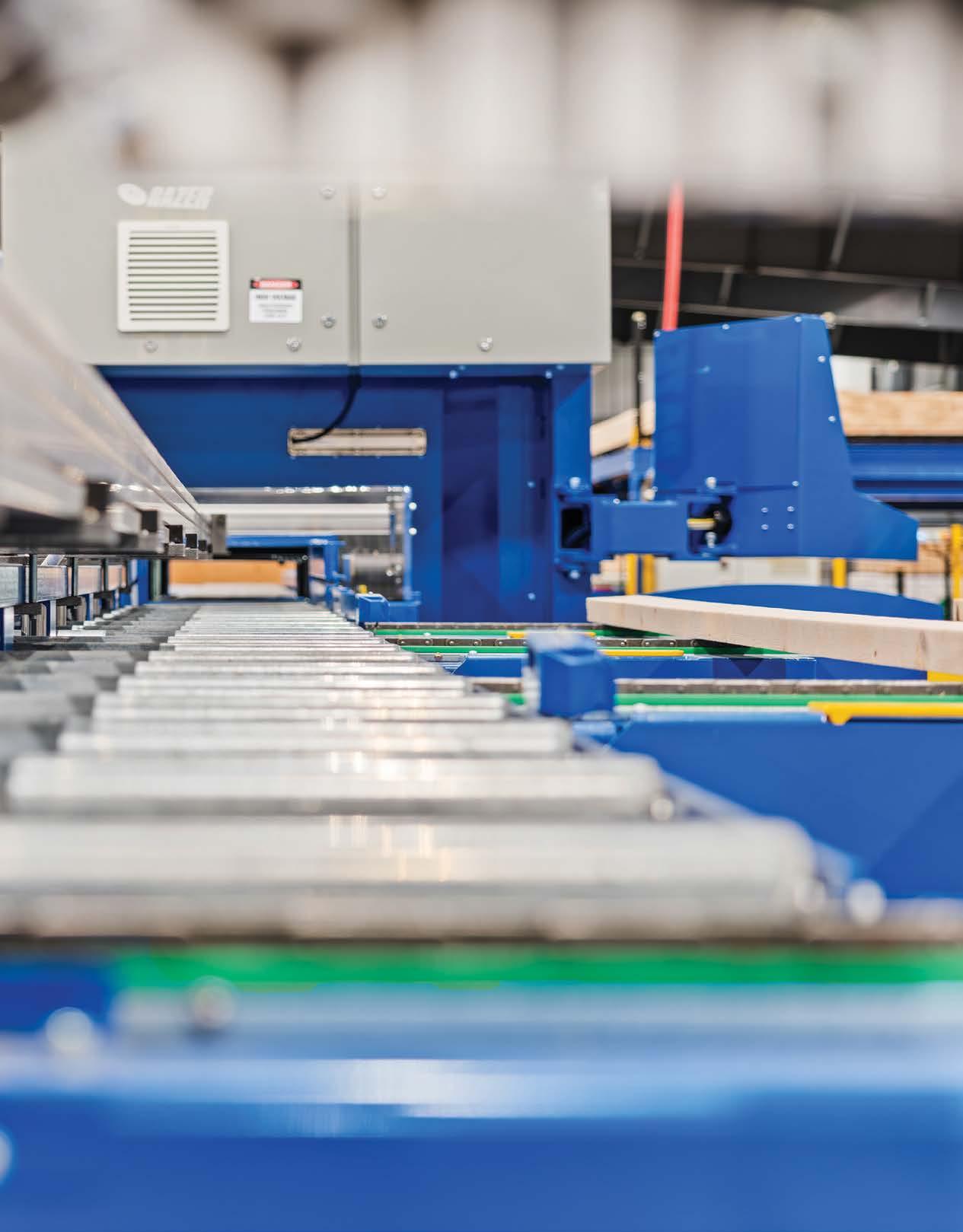



Lauderdale Hamilton 24" Up-Cut Saw with 16' TigerStop
• 10 HP (480 Volt/3 Phase) Lauderdale Hamilton Up-Cut Saw with 24” Blade
• 6” x 13 1/2” Capacity
• Foot Pedal Operation
• Dust Outlet
• TigerStop 16’ Programmable Stop
• Automatic Positioning of Stop via Simple and Intuitive Controls
• Infeed/Outfeed Plastic Top Tables with stands
• Excludes: Dust Collector and Adjacent Computer in Orange Cabinet
$13,500 FOB NE Wasserman & Associates 800-382-0329 www.wasserman-associates.com



PC controls, all available spare blades and shaker side-pans. 460 volt, 3 phase, 60 Amp electrical required. As-is, Where-is
$29,997 NOW $26,997 FOB MB Wood Tech Systems 765-751-9990 www.woodtechsystems.com



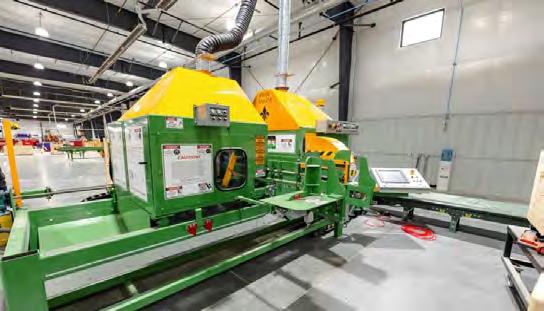



lnnovationen fur den Holzbau
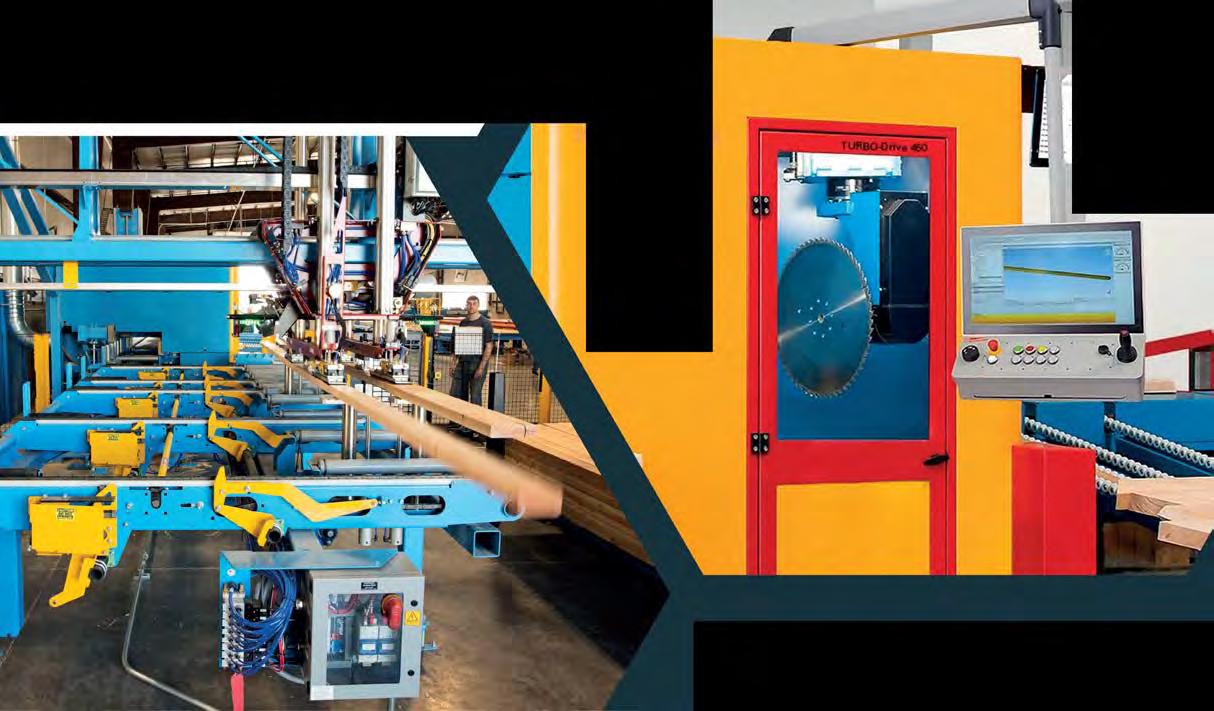
HUNDEGGER

Hundegger leads the way in automation innovation for the truss component industry. Our advanced CAMBIUM software offers cutting-edge automation and digitalization solutions, revolutionizing operations, boosting productivity, and driving sustainable growth for manufacturers like you.
We go beyond standard mechanization; we champion true Automation. The Hundegger TD-II isn't just a saw-it's a transformative, comprehensive solution designed to streamline your production process. From retrieving lumber to optimizing, nesting, stacking, destacking, sorting, buffering, and precise delivery, our system ensures peak efficiency and productivity, tailored specifically to truss component manufacturing.
Harness the power of data with Hundegger's advanced CAMBIUM TACTICAL software. It meticulously tracks and optimizes your production, ensuring more automated operations and significant productivity gains.
We provide state-of-the-art automation and control solutions that set the industry standard. Our focus on industrial automation and robotics positions Hundegger as the leader in enhancing performance and efficiency in truss component manufacturing and beyond.
Hundegger products are essential for future-proofing your business. Elevate your productivity and secure your competitive edge with our advanced technologies and automation solutions, meticulously designed to meet the unique demands of component manufacturers today and tomorrow.
Don't get left behind. Invest in the future with true automation from Hundegger and see your business thrive.






The Hain Systems Framer (HSF) will help you build square and accurate wall panels for residential or commercial construction applications. It will help you cut building costs by saving time and improving your quality. It’s a reliable, efficient and proven system that features a ruggedly simple design. The HSF is based on a proven design with over 20 years of actual production use and maintenance experience. It comes fully assembled and is designed for portable job site framing or in-plant permanent installation. The table has many optional attachments and will support Mylar Tape wall layout or any other type of layout. The optional gun rails can also be retro-fit to any table.
Details:
Table Construction: Thick-wall Structural Steel Tubing, Jig Welded for Accuracy
Height: 12 inches
(720”)
Air Supply: 90 psi (10 CFM Air Flow Recommended)
Depth: 12 inches
Electrical Supply: 120 VAC
Powder Coat: Industrial Gray
Dimensions: Height: 43”
Length: 16’ or 20’
Width: Adjustable 8’ to 10’ or 8’ to 12’
Shipping Weight: 3000 lbs
If you are looking for the fastest, most consistent way to measure and cut your product, then the Hain Measuring System (MEA) is your answer. The MEA changes from one length t any length instantly, up to 60’, without changing the operator’s position on the line. It is also highly accurate (+/- .010) and quickly moves from one length to the next in seconds. The MEA is designed for quick and easy setup and is simple to use. Even a first time user will be productive with little or no training required. It can adapt to any saw and can be mounted to any surface so that you can integrate the MEA with your existing setup. The MEA is versatile allowing “left” or “right” handed operation and measurement in “feet and inches” or “inches” depending on your preference. The MEA is also available in a “Skid Mounted” version.
2











We’ve got a number of products available now – saws, tables, wall assembly and roof truss assembly machines. Plus, we’ve got some of our popular Rolsplicer and Automated Apollo Saws, which can be delivered soon.*
*Subject to availability

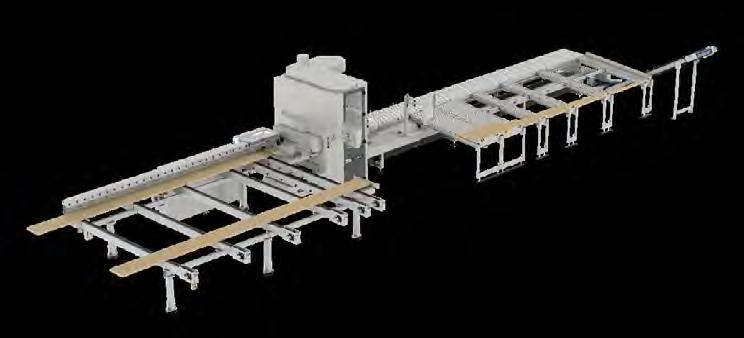









Wendy Boyd Chief Customer Officer Machinery Group Spida Machinery
As the North American truss market continues to evolve, fabricators are asking themselves how do we do more with the time, labor, and space we already have? How can we improve efficiency, reduce manual handling, and position our production lines to take advantage of the next wave of opportunity?
Labor availability, production volatility, and rising expectations for tighter lead times continue to shape daily operations in truss plants in North America. With another cycle ahead in 2026, now is the ideal moment to step back and examine whether your current workflow will support the level of output and consistency the market is likely to demand.
At Spida Machinery, we’ve seen firsthand that asking the right questions early can make a huge difference for manufacturers – not just in workflow, but in how a factory approaches growth, productivity, operational flexibility, and ultimately how they compete. But how do you know if your factory is ready to seize what’s coming next? Here are the key questions worth evaluating now.
Is your truss plant still heavily reliant on manual material handling? Do bottlenecks appear when an operator calls in sick? Does production slow down because your systems and machinery aren’t working together as smoothly as they could? Do you still rely on extra labor as opposed to smarter processes?
Across North America, some truss plants don’t just choose automation to reduce labor, but instead, because they can’t find enough skilled labor to support growth. Well-designed automation can reduce repetitive strain, improve cutting consistency, and free your best people to focus on higher-value tasks like QC or production planning.
When it comes to truss manufacturing, our PieceGiver, feeding one or more PieceMaker saws, could save your team time, reduce repetitive strain, and eliminate errors.


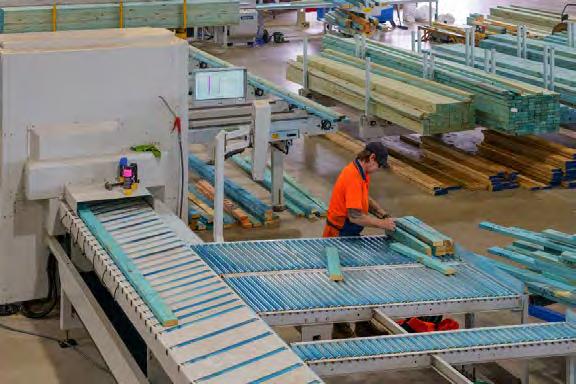
The PieceGiver and PieceMaker work together as a “power duo” to automate lumber loading and cutting processes while still allowing flexibility in your workflow. With a range of configurations and a variety of options, these machines can be adapted to suit different productions lines – but first you need to decide what setup fits your operation best, and this is something we can help you with.
Automation can reduce labor, but it also creates opportunities to increase throughput and consistency and connects your design, software, systems, machinery, and processes.
What bottlenecks could automation solve in your current process? Whether you automate with existing equipment or explore new options, the important part is evaluating your bottlenecks early. Thinking about these questions now gives you the opportunity to explore options without feeling rushed.
Many fabricators have inherited their current plant layout –machines added over time, workstations squeezed in where space allowed, flow patterns built on convenience rather than strategy. But even small layout adjustments can have a measurable impact on throughput.
Have you ever stopped to consider your own factory and whether your current layout is holding back productivity? Could rearranging machinery, adding space for automation, or redesigning manufacturing flow improve efficiency?
Our team can help assess your factory layout, suggest adjustments, and optimize flow to get the most out of your existing footprint. Even if your factory is small, slight changes can have a big impact on efficiency. A minor adjustment to the placement of your saws or material feeders, adding a buffer zone, or reducing cross-traffic can significantly improve flow
On the other hand, if your factory is larger, are you making full use of your available space? By thinking about layout now, you’re planting the seeds for smoother operations in 2026 – and perhaps even freeing up capacity for future expansion. Efficient factory layouts utilize your space, optimize workflow, provide smart material handling, improve worker safety, and can future-proof your operations.
Every truss manufacturer has unique needs, and there isn’t a one-size-fits-all solution. Every truss plant works differently – volume, labor availability, and types of jobs can all affect how production runs from day to day.

A good example comes from Fortruss in Australia – they started with a single PieceGiver feeding one PieceMaker, with the next evolution being one PieceGiver feeding two PieceMaker saws, dramatically increasing output without expanding their footprint by much. Could your operation benefit from a similar approach?
How many machines do you actually need to handle your projected production? Which configuration would maximize the efficiency of your floor space and staff? Considering these questions now helps you make informed decisions about which machines to add, what workflow adjustments to make, and how to set up your factory for success.
Exploring scenarios now allows you to test ideas before making long-term changes – could experimenting with layouts and configurations in small ways this year help you avoid costly mistakes next year?
Do you know what cutting volumes are realistic for your operation in 2026? How will you schedule production, allocate staff, and prioritize different projects? Planning early can give you more flexibility to select the right machines, configurations, and accessories for your workflow.
In essence, early planning gives you options, whereas late planning can give you headaches and can force you into compromises.
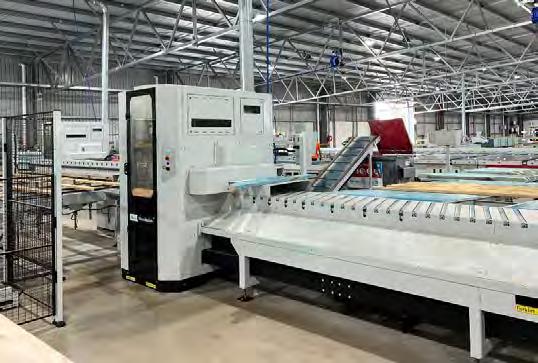
Preparing your factory for future growth doesn’t have to be overwhelming, nor does it require big changes right now. It starts with asking the right questions about automation, layout, and configuration, so you can plant the seeds for smarter, more efficient operations.
What opportunities could you unlock if you started planning for 2026 now? Are there small adjustments you could make this year, which might create a big impact later? The answers may not only improve your workflow but also position your factory for growth, flexibility, and success as the market evolves.
As the industry moves into its next cycle, the manufacturers who thrive will be the ones who step back and assess their operations with intention, now. Whether that means rethinking material flow, exploring smart automation, or simply tightening up the way people and machines interact on the floor, the value lies in preparing early. The start of 2026 is not too far away, so if you haven’t already, we recommend you ask yourself these questions now!












• Automated Cutting & Marking as directed by Design Software Output
• EasyCut Angle 24 Saw
• EasyFrame 20' In-Feed and 16' Out-Feed
• EasyFrame 12' Autoloader
• Touch Screen Computer with EasyFrame Operating Software
• Matthews Ink Jet Printer
• Used 4 Months
FOB IN



Lean Best Practices
Full/Non-Automated


Building Designs
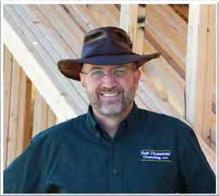


Across All Areas — Manufacturing, Sales, Design, and Administration
√ Productivity Improvement for every departments.
√ Reliable Proven Time Units R.E., S.U., Work Minutes.
√ Employee Optimization reduce costs, turnover, & vacancies.
√ Equipment & Facility Design Recommendations for maximum efficiency.
“This information allowed us to estimate our jobs with a dramatically increased level of accuracy on each project, regardless of its level of complexity. The time standards also gave us the information to measure our production and establish target output for each workstation in our shop.”
Gordon Tober, Leduc Truss Inc.


Sound advisement should be honest, direct, and completely unbiased delivered in just four days with a clear roadmap of actionable solutions, not after endless weeks of continued billings.
For more than 20 years, TDC has helped CMs cut costs, optimize automation that truly fits their needs, and boost profits through clear, independent expertise. TDC focuses on what matters most: your performance, your ROI, and your success.

“Your expertise in this industry will be greatly beneficial to us as a company as we continue to grow this relationship. We look forward to the future and are excited to have someone with your knowledge working with us."
John Hall, Mathew Hall Lumber
“There are no words to express how thankful we are that we chose to start changing our business with assistance from Todd Drummond. The moment he walked through our doors, he immediately began to gain our trust and open our eyes to the areas upon which we needed to focus our attention. ”
Ryan Lodermeier, Kamloops Truss Ltd.



2000 Alpine AutoMill Component Saw 2000 Alpine AutoMill model 343H, (5) blade component saw, cuts lumber from 2×3 through 2×12, from 18″ to 20′, 4-angle floor webs from 18″. Includes powered length and angulation, digital readouts, (1) 32″, (3) 18″ & (1) 20″ blade, shaker under-saw scrap conveyor, incline, PC with Windows 98 o/s, and outfeed conveyor. Decommissioned in 2018. Stored indoors. 480 volt ,3 phase electrical required.
$10,497 FOB ON Wood Tech Systems
765-751-9990
www.woodtechsystems.com

Striebig Optisaw, model
Optisaw Automatic (Type # 5164) vertical panel saw station, with angled frame supporting material being cut: Max. cutting height (vertical) 5′-4″, max. cutting length (horizontal) 15′-1″, max. cutting thickness 2.36″. Both vertical and horizontal analog measuring scales on frame. Cutting head manually rotates from vertically to horizontally for rip vs. cross-cutting, adjustable spacers for repetitive cuts, 5.25 HP saw motor, 9.84″ diameter blade, guide bearings for travel , push button controls, e-stop button and dust extraction hose (no vacuum included). Overall footprint of station 19′-1″ wide x 4′7″ deep x 7′-10″ height. Sold for $36,000 new. 208 volt, 3 phase electrical required.
$14,490 FOB AZ Wood Tech Systems 765-751-9990 www.woodtechsystems.com
Alpine AutoMill RS Parts
Alpine AutoMill RS Parts per Uploaded PDF
$23,500 NOW $19,500 FOB GA Wasserman & Associates 800-382-0329 www.wasserman-associates.com

NEW Hain 20' Powered Measuring System
Adapts to Any Saw. Left or Right Hand Operation. Feet & Inches System (Stops at 12” Centers) or Inches System (Stops at 10” Centers). Motor: 1/4 HP Linear Actuator (110 Volt). Stop Rail: 2 x 4 x 1/4” Aluminum Extrusion. Stops: Jig Bored Steel. Stop Blocks: Machine Billet Aluminum. Optional Lengths from 5’ to 60’. Optional Gang Stop. Add $890 per 10’ Section of Heavy Duty Roller Conveyor with Stands
$8,990
Wasserman & Associates
800-382-0329
www.wasserman-associates.com







Off-site construction solutions built around your business.

Build higher-quality components and modules more efficiently.
Stiles has been a trusted name in the U.S. woodworking industry for over six decades. Today, we continue to lead the way with a consultative approach to off-site construction, partnering with you to increase speed, precision, and productivity, while providing ongoing parts and service support when you need it.

Invest in equipment built to perform—and last.
Stiles is the exclusive North American provider of WEINMANN, the world’s leading machinery and equipment manufacturer for off-site construction. Whether it’s an individual machine or fully automated system, Germanengineered WEINMANN machines provide innovative solutions that revolutionize your production.
Make your good decisions work even better. Learn More



2018 Spida Plate Marker with DeWalt Saw
• 20' of Steel Framed Table with Plastic Top
• Spida Automated 20' Length Stop/ Plate Positioner
• Auto Plate Positioning with Manual Marking
• Control Cabinet Enclosure with Touch Screen Computer
• DeWalt Model DWS780 Miter Saw
• Support Table for DeWalt Saw
• 10' Infeed Roller Conveyor
• Excludes Dust Collector & Spida Annual Support Fee
$19,900 FOB ND
Wasserman & Associates
800-382-0329
www.wasserman-associates.com

1994 Timbermill Model MH5G-20 Component Saw
Five blades cut lumber from 2″ x 4″ through 2″ x 12″, 4″ x 2″ lengths from 12 inches to 20 feet, including four-angle floor webs from 18 inches. All powered movements. Saw includes (1) 30″, (2) 20″ and (2) 14″ blades, analog scales, chain-drag scrap conveyor with chain-drag scrap incline, and an extra set of blades. Additionally this saw includes an extensive spare parts inventory including: Contacts/Starters, fuses, push buttons, limit switches, crank handles, scales/rulers/dials, angulation, conveyor, and saw motors, universal joints, and arms for outfeeds. 480 volt, 3 phase electrical required.
$17-924 FOB NC Wood Tech Systems 765-751-9990 www.woodtechsystems.com



• Automated Truss Length and Angle Cutting as directed by Truss Design Software Output
• Di rect Drive 7.5 HP Motor with Automated 160 Degree Angulation & 18" Blade
• Minumum Angle of 10 Degrees with 36" Stroke for Long Scarf Cuts
• Braked Saw Motor , Safe Grip, Variable Stroke Limiter & Plexiglass Shield for Operator Safety
• 20' of Steel Framed/MDF Table with Automated 20' Length Stop & 10'
Conveyor
• Workstation,
Enclosure & 21"
Integration
• Kufo Dust Collector
• Spare Parts
• Truss Cutting Operating Software
• 480 Volt / 3 Phase
• Lighty Used
• Excludes: Installation/Training & Annual Technical Support Fee




$39,990 FOB OH
Cuts wall and truss parts from lumber depths 2×4 through 2×12, 60”+ scarf cuts, internally optimizes material (up to 11 7/8″ x 1.5″ EWP) Includes 20 foot OEM auto-infeed conveyor and 15 foot OEM outfeed conveyor, and under-saw scrap conveyor with belt-type incline. All servo controlled functions, Microsoft Windows XP OS, 7.5 hp motor with 20” carbide tipped blade. Includes spare infeed/outfeed belt and any available spare parts. No printer is included. The door latch needs to be repaired. 220v / 3 ph power, 125 PSI air required.




16 Truss Plate Hoppers per 8ft L x 6ft W Rack Up to 5 Racks for 80 Truss Plate SKUs
Plates Dispensed in Collated Layers by Truss (one truss per bin) or One Bin per Joint 4ft x 6ft Wide Control Rack with Bin Feeder, Touchscreen, Printer and Custom Outfeed Automated Plate Picking
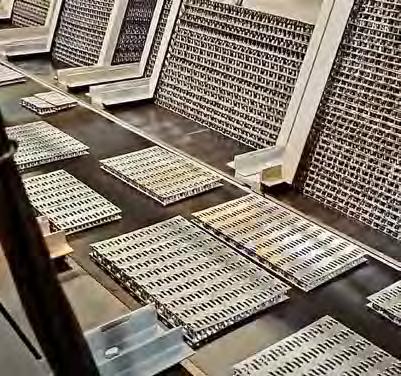
Minimum 1.5” x 3” plates
Maximum 12” x 18” plates
16, 18 and 20 gauge plates
Load 100 tooth-to-tooth
Plate Pairs per Hopper
Stock more SKUs And Eliminate Overplating








$118,997 FOB GA

(Non-servo) five-blade, automated component saw using a touch screen interface and Windows 10 OS for direct input. Operates in automated or manual input mode. (1) 10 h.p., 30″ diameter blade with PAE setup & (4) 5 h.p. 16″ diameter blades with center line setup. 16″ blades cut angles from 3º to 115º, 30″ blade from 3º to 100º . Minimum 90/90 cut is 10 inches and shortest 4-angle cut is 18 inches. Cuts 2×4 through 2×12 lumber up to 20 feet in length.


Edmond Lim, P.Eng. LimTek Solutions Inc.
As this year rapidly comes to a close, it’s time to prepare for 2026. In addition to our daily tasks, it’s important to step back and view the bigger picture too. My question for you today: Do you have CapEx room for 2026?
To answer my own question, I have to say: the best investment I know is purchasing the Enventek Lumber PickLine. This one upgrade for your plant provides a slam dunk ROI, or as I like to say, “An Accelerated ROI.” Many PickLine customers tend to say afterwards “it is a no-brainer, one of the best investments we should have done years earlier.”
Forget about agonizing over NPV, IRR, or cost-benefit ratios—a PickLine delivers overwhelming value with minimal risk, especially when utilizing an existing forklift path to feed an automated saw without any repositioning.
Here are some “Cheat Sheet Benefits” to help you win CapEx approval for the investment in a PickLine, as it accomplishes the following:
• Solve Legacy Sawing Issues – Fix material handling and in-feed bottlenecks (see “Optimize Your Saw with a Lumber PickLine”)
• Boost Output – Reclaim saw idle time for 10%–30% more cut pieces (see “Incremental CapEx and Accelerated ROI”)
• Slash Operating Costs – Eliminate dedicated forklift picking (see “ Debunking the ‘Automation Takes Too Much Space’ Myth”)
• Optimize Labor – Cross-train float labor; WiFi tablet picking is easy (see “Passive Lean Can Tame Lumber Chaos”)
• Streamline Workflow – “Cut-by-truss” build scheme for faster assembly (see “Batch Cutting vs. Cut By Truss”)
• Improve Quality Control – Cull outside; fewer recuts and downtime (see “To Cull or Not to Cull (at the Saw)”)
• Enhance Safety – Reduce forklift traffic, especially on night shifts (see “Giant Kanban!”).
But if words aren’t enough for you, here are some photos that show how easy it can be to integrate a new PickLine into your plant.

There is less wear and tear on sawyers as lumber is semi-automatically fed to the saw. Shown here is a PickLine breathing new life into a decades old ServoOmni Robotic component saw.


Automated saws are designed to setup fast and PickLine controls will stay ahead of the sawyer. Shown next is a PickLine control panel (the foot pedal lumber advance is beside the sawyer) feeding a Masik component saw.
A PickLine’s integration to an existing automated saw’s auto feed deck uses a simple light sensor to signal the PickLine to “drop a board.” No programming required. Shown here is a TCT auto feed live deck (blue).

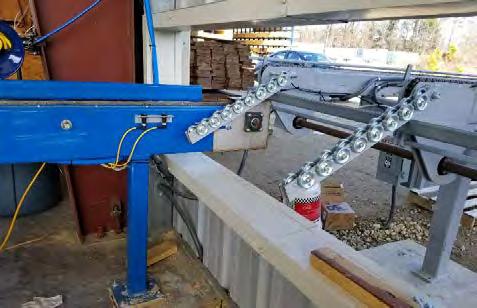
Very rarely do we need to modify existing saws to accommodate a PickLine. Shown next is an easy lumber stop cut away on an ALS 4.0.
A PickLine adds touch controls and visuals to the sawyer on upcoming lumber, and pickers use WiFi tablets to pick lumber and control the PickLine.
When you’re ready to Feed Your Beast and see our efficient and effective systems for yourself, let us know! Inside and out, LimTek Process Organization Technology will help you squeeze out more truss production and deliver quality trusses with shorter lead times to better service your customers by organizing your truss fabrication processes to maximize your investment in automation. https://limteksolutions.com/#solutions
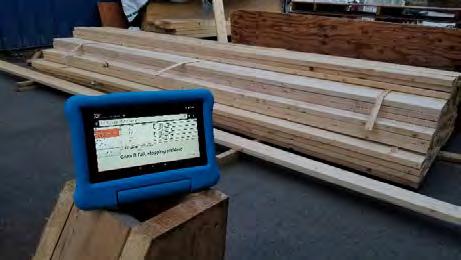










1999 Alpine SpeedCut
Centerline Pull-Arm Saw
1999 Alpine Metra Cut, model SSA-17, pull arm, centerline saw. 16″ blade, maximum cutting depth of 6″, maximum scarf length of 31″, 164 deg. cutting range and 5 HP motor. Includes push-button on/off controls and analog angle measure on turntable. Need re-assembly. 220/440 volt, 3 phase electrical required.
Call For Pricing, FOB OR Wood Tech Systems
765-751-9990
www.woodtechsystems.com

2023 Northfield Model 410 Upcut Saw NEW 2023 Northfield model 410 upcut saw available for immediate shipment. 90/90 degree cuts to 4″ x 10″ capacity (fence forward position) to 2″ x 14″ (fence rearward position). Saw is configured for material from left to right, with 3″ x 6″ air operated cylinder, filter, regulator, lubricator, 10 HP motor, enclosed steel base with cast iron table, magnetic starter and adjustable operating speed from 20 to 60 CPM. Includes optional two-palm controls, additional 4″ dust outlet, NEMA 12 electrics with fused disconnect and two 18″ diameter 60 tooth blades with 1″ diameter bore. 460 volt, 3 phase electrical required.
$18,630 FOB MN Wood Tech Systems
765-751-9990 www.woodtechsystems.com


2005 Alpine ALS 276C Linear Saw
2005 Alpine ALS 276C linear-feed saw (Refurbished in 2015). Cuts wall and truss parts from lumber depths 2×4 through 2×12, 60”+ scarf cuts, internally optimizes material (up to 11 7/8″ x 1.5″ EWP). Includes 15-foot idler roller infeed conveyor, 15-foot idler roller outfeed conveyor, and under-saw scrap conveyor with belt-type incline. All servo-controlled functions, Microsoft Windows 10 OS, 7.5 hp motor with 20” carbide tipped blade. Includes any available spare parts. No printer is included. 230v, 3 ph power, 70A electrical required. Includes step-down transformer. 125 PSI air required.
$39,991 FOB OR Wood Tech Systems
765-751-9990
www.woodtechsystems.com

1982 SpeedCut MetraCut Centerline Saw

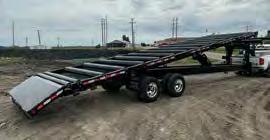




1982 Speed Cut Metra Cut, model SSA-11, centerline saw, 16″ blade, maximum cutting depth of 6″, maximum cut length of 31″, 164 deg. cutting range and 5 HP motor. Includes push-button on/off controls and analog angle measure on turntable with air stop, 20′ long infeed conveyor with OEM SpeedMeasure, 20′ long outfeed conveyor and one (1) spare blade. 208 volt, 3 phase electrical required (can be converted to 240v/440v).
$6,990 FOB WY Wood Tech Systems
765-751-9990
www.woodtechsystems.com

New Monet DeRobo Linear Saw
New, DeRobo linear saw by Monet organizes "fill" boards to increase optimization of each board, can produce unlimited scarf cuts, cuts 1 or 2 boards at a time and cuts webs, chords, wedges, rafters and open-stair stringers. Works with all major connector plate manufacturer's software. Features include 22 inch blade, left-to-right feed direction standard, lumber push and pull grippers for more accuracy, ink marking on the 1 1/2" face of the incoming boards and small piece capture and delivery to the front of the saw for easy access. Infeed deck and bunk feed are shown as options only. 480 volt, 3phase.
$257,000 FOB MO.

Alpine
Ask
“We’ve worked with Alpine in creating top quality products surpassing customer expectations since 1984. Over the years Alpine team members have become more like family and we couldn’t do this without them!”
— Tolga Adak Florida Quality Truss Inc.

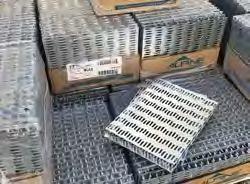



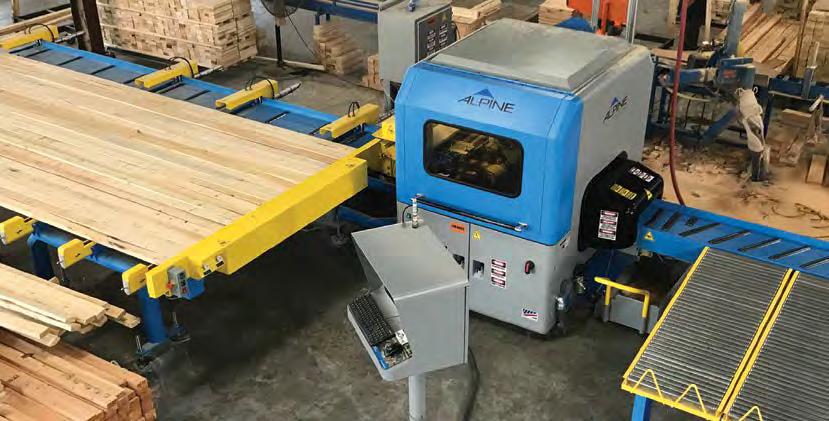
and





Price: $237,900
FOB: ND

The Terminailer all but shatters the stereotypical myth that sub-component equipment is essentially peripheral – unimportant. And it does so by quickly and accurately driving far more framing nails in your wall panel jobs than ever before. Whether in your shop or in the field, one operator sets the pace for production and quality, which reduces labor costs and other aspects of overhead.
The new Terminailer V.8 improves on the previous generation Terminailer in several key ways:
All new HMI/Software
• Siemens Pivoting HMI Touchscreen display to operate from either side
• On-screen tutorial for all menu items
• Operator now controls functions such as process speed, nail spacing, nail patterns, etc.
• Simplified input commands
Nail Feed Complete Redesign
• All new frame to allow for redesigned nail coil placement with direct feed path
• EverWin PN90-PAL industrial tools now standard equipment
• New nail guides with spring-loaded tensioners
• Nail coils move with vertical travel of the nail guns
Reengineered air system
• SMC “Soft–Start” Pneumatics
• Simplified air for control to all components: lift–cylinders, triggers, stop–gate, etc.
• Direct air supply to each nail gun for improved nailing performance
• All pneumatic elements are clearly labeled for EZ service and adjustment
Overall Features
• Pharmaceutical grade assembly, industrial grade durability
• “Block–wheel” redesign for 3X increased applied force
• Approximately 1,200# of applied clamping force resulting in straighter finished
• Subcomponents from even the poorest lumber
• Larger doors for easier access to interior elements including coil–nail spools
Terminailer is an event-driven, sub-component assembler that will quickly and accurately drive 30% to 70% of the framing nails in any wall panel job. In your shop or in the field, one operator sets the pace for production and quality. The Terminailer functions independent of design software, requires zero set-up time when switching between any configuration, and requires no special operator training.
The Terminailer is easy to move around the shop so its location can evolve as your shop evolves. With all of the nailing occurring in the closed main chamber, nail injuries and nail location misfires are eliminated, making your plant that much safer.
With nearly ten years of development from people that know machinery, it is assembled to exacting standards, well supported, and it is easily maintained with shelf-item parts. Terminailer: vetted, tested, and ready to drive maximum productivity for you. Be sure to check out our videos below for a quick review of this revolutionary machine!
208 volt, 3-phase, 21 (full load) Amps, 60 Hz electrical required. 50 SCFM @ 100 PSI air required. Net weight 7,000 lbs..
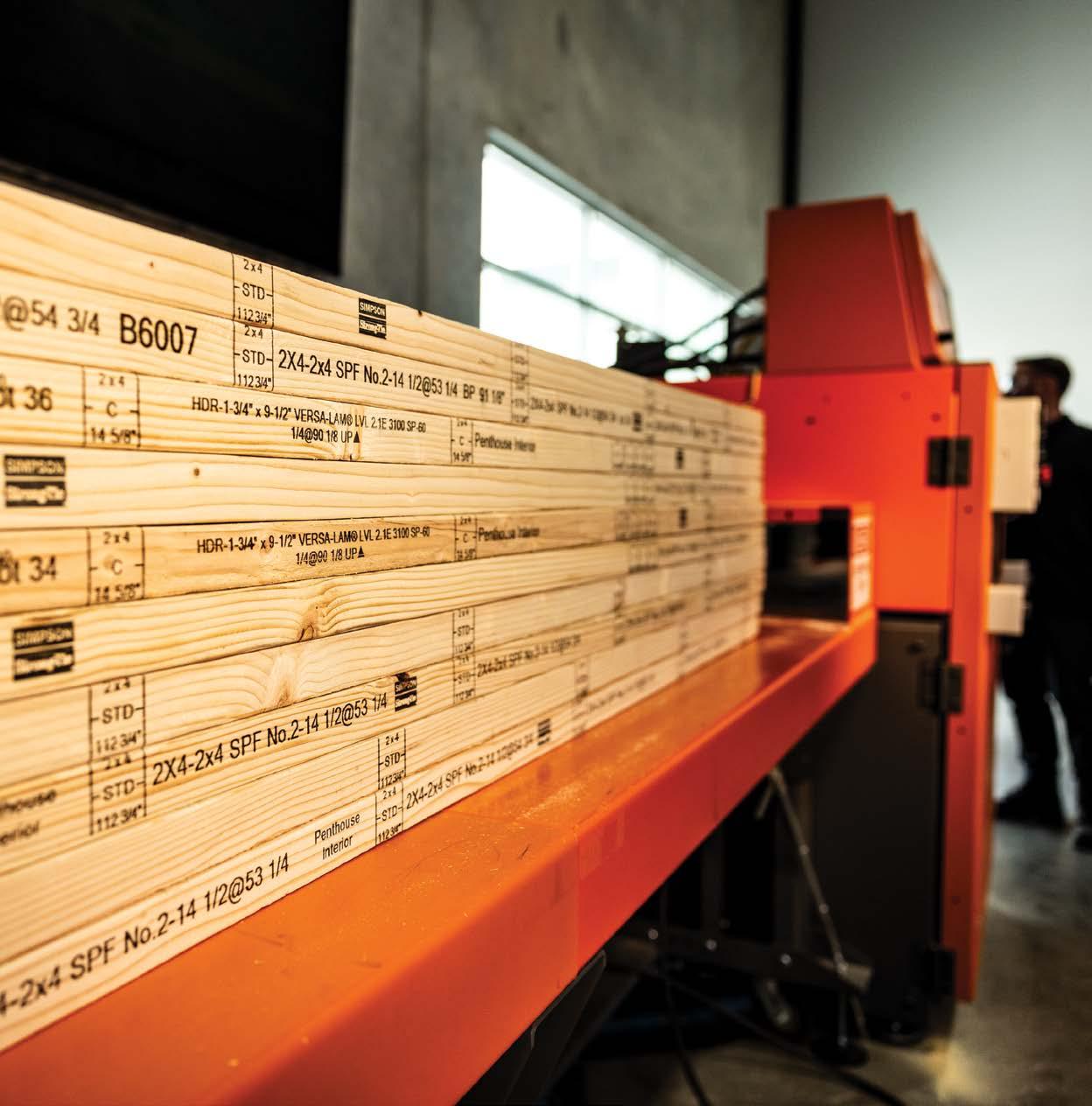
Introducing the Simpson Strong-Tie ® EasyFrame automated marking system. A combination saw and printer, EasyFrame cuts detailed wall panel framing members that are pre-marked for fast, accurate assembly. Designed for efficiency, EasyFrame prints framing plans directly onto lumber, including locations of boards, connectors, wiring and more. It can be paired with a manual or automated saw, and features a blade enclosure for safety. Powerful software also lets you ensure precision and optimize material use. EasyFrame is supported by our installation and onboarding services, training and technical expertise. It’s a smart way to equip customers for wall panel jobs while setting your business apart. Add EasyFrame to your lumber sales area. To learn more, visit easyframesaw.com or call ( 800 ) 999-5099.


2012 Vista "Angle Boss" Saw with 20' TigerStop
• 2012 Vista Model M-20 AutoSet Cut-Off Saw
• 0 to 75 Degree Left & Right Blade Rotation
• 10 HP/460 Volt Motor with 20" Blade
• 10' Infeed Roller Conveyor & 20' Outfeed Roller Conveyor
• 2012 TigerStop (250" Cut Length)
• TigerStop Software Version 5.30
• Excludes Dust Collector
• Video available upon request
• Price in US Dollars
$18,880 FOB MB Wasserman & Associates 800-382-0329 www.wasserman-associates.com


Safety Speed Manufacturing Model 7400 XL Panel Saw
Safety Speed Manufacturing, model 7400 XL*, vertical panel saw, 3 HP induction motor, 64 inch crosscut, 2 1/8" maximum thickness, accuracy within 0.005 inches, 13 foot long welded steel frame with integrated stand and linear V-guides, enclosed counterweight system, adjustable vertical and horizontal rules. Quick changes from vertical to horizontal cutting. Includes machined aluminum material rollers, hold down bar, wheels, quick stop gauges and material hold downs. Dust collection ready. Options available include digital readouts for vertical cuts, automated length measuring, laser guide, stop bar, vacuum and midway fence. 208-230/460 volt, 3 phase electrical (208-230 single phase, 2 HP power optional +$100.00).
$14,862 (Base) FOB MN. Wood Tech Systems 765-751-9990 www.woodtechsystems.com

Saws
• Automated Component & Linear Saws (2010 & Newer)
• Monet DeSauw or TimberMill Manual Component Saws
• Floor Web Saws
• Spida (Apollo) Saws with Truss Automation
• Bunk Cutters
Equipment
• Roller Gantry & Hydraulic Press Systems
• Finish Rollers
• Truss Stackers
• Floor Truss Machines
• Lumber Splicers
• Jack Tables
• C-Clamp Presses
Stretch Roll-Off Trailers • Go oseneck Roll-Off Trailers
Pacific Automation or MiTek Mobile Home Press



Safety Speed Manufacturing model 7000, vertical panel saw, 3 HP induction motor, 64 inch crosscut, 2 inch maximum thickness, accuracy within 1/64th of an inch, 10 foot welded steel frame with integrated stand and linear V-guides, enclosed counterweight system, adjustable vertical and horizontal rules. Quick changes from vertical to horizontal cutting. Includes machined aluminum material rollers, hold down bar, wheels, quick stop gauges and material hold downs. Dust collection ready. Options available include lower frame extensions, digital readouts, laser guide, stop bar, vacuum and midway fence. 208-230/460 volt, 3 phase electrical (208-230 single phase, 2 HP power optional +$100.00). $10,454 Base, FOB MN.



• Blade travel adjusts automatically depending on the saw angle
•
•
•
• Saw arbor type 5 HP motor with integrated mechanical brake
• (575 Volts – 3 phases)
• Angles from 10° to 110°
• Head overall travel length of 26in
• 18in saw blade
• 5.5in cutting height
• Complete « wrap-around » blade guard
• 4in dust collector connection


By Dario Schmidt Off-Site Construction & Mass Timber Solutions Engineer Stiles Machinery
As we close the books on 2025, it’s the perfect time to reflect on a year defined by innovation, adaptability, and forward momentum in the world of off-site construction and component manufacturing. Throughout the past twelve months, our editorial team has explored the trends, technologies, and mindsets shaping the future of building in North America. From the first steps in automation to the mindset shift required by off-site practices, these are valuable insights for manufacturers, builders, and industry leaders eager to stay ahead of the curve.
We kicked off the year with a look into how automation is transforming production lines, spotlighting the partnership between JL Schwieters Construction and Stiles Machinery. Their experience integrating WEINMANN equipment underscored the tangible benefits of advanced automation: reduced labor demands, increased output, improved quality, and heightened safety. The lesson was clear: automation is no longer a distant goal, but an accessible pathway to smarter, more competitive operations. For many, it all begins with a conversation to understand needs and goals, and we encouraged readers to reach out and consider how technology could elevate their own processes.

Next, we dove into the world of software, specifically MES, and its role in optimizing shop floor operations. MES emerged as a game-changer for manufacturers struggling with disorganization, uneven cycle times, manual planning, or material waste. We explored how platforms like granIT, integrated with WEINMANN equipment and HOMAG’s Cut Rite optimization, can automate everything from production scheduling to board yield. The result? Streamlined operations, improved accuracy, and substantial cost savings, proving that digital transformation is as critical as mechanical innovation.

In March, we got practical, breaking down five common pitfalls in wall panel production. From inconsistent labor and underutilized design software to non-value-adding steps and outdated machinery, we examined how small changes—like adopting MES, investing in multi-wall features, or upgrading to WEINMANN’s FRAMETEQ (top image) and WALLTEQ (bottom image)—can dramatically boost efficiency. The recurring theme was continuous improvement: analyzing metrics, optimizing processes, and leveraging training to ensure every line is ready for tomorrow’s demand.


Safety took center stage in April, as we highlighted the advantages of off-site framing. By moving construction tasks into controlled factory environments and deploying automated systems, companies can significantly reduce risks, from falls and material handling injuries to exposure to dust and noise. The article reinforced that a safer workspace isn’t just a moral imperative—it’s a business advantage, increasing employee well-being while improving quality and productivity
May’s article zoomed out to examine the automation revolution sweeping the industry. Robotics and multifunctional production cells, such as WEINMANN’s FEEDBOT W-500 and WALLTEQ, are redefining what’s possible in off-site construction. The synergy between robots and bridges results in higher throughput, consistent quality, and reduced manual labor. Automation was shown not only as a solution to labor shortages, but as the key to scalability, cost control, and future readiness.
As demand for diverse housing types soared, we explored how prefabrication offers scalable, efficient answers to industry challenges. The journey begins with understanding local market needs and offering value-added services such as pre-cut materials. The transition to in-house assembly and gradual automation, tailored to output targets and financial readiness, allows even small operations to compete and grow. Waiting too long means risking market share to more agile competitors.

In July, we tackled the divide in sheathing strategies: pre-cutting materials versus in-line routing Using examples of HOMAG SAWTEQ and CENTATEQ systems, we discussed how automation and data-driven optimization can maximize board yield, streamline labeling and kitting, and reduce material handling. The takeaway was not to choose sides, but to identify which strategy best supports each manufacturer’s business goals, and to embrace optimization wherever possible.
Flexibility is a defining trait of successful modern manufacturers. The need to do more with less— less labor, less waste—has propelled CNC saws and multi-function equipment, like the BEAMTEQ series, into the spotlight. These “Swiss Army Knife” machines let businesses diversify product offerings, adapt to shifting market trends, and integrate new value-added services. Futureproofing your business means investing in adaptable, modular technology today.
Our September feature drilled into the cultural changes required by off-site manufacturing. Moving from bespoke craftsmanship to standardized, repeatable systems is a challenge, but it unlocks speed, scalability, and consistent quality. Builders are learning to trust process over individual skill, optimize supply chains, collaborate across disciplines, and plan proactively. The result is a more resilient, predictable, and competitive industry, one where American ingenuity is expressed through system integration and manufacturing excellence.


October’s article provided a step-by-step look at how digital design flows into factory production, especially with WEINMANN’s .wup file process. Covering BIM modeling and automated machine instructions, we showed how the digital-first approach leads to greater accuracy, speed, and material efficiency. The right software and disciplined data management are the keys to turning ideas into tangible building elements, bridging the gap between design vision and real-world execution.
We closed out the year with a recap of BCMC 2025, the premier event for component manufacturers. Our booth showcased the latest WEINMANN and HOMAG advances, highlighting how modular upgrades can address bottlenecks and set the stage for future growth. The event reinforced our belief in hands-on partnerships, tailored solutions, and the value of collaborating to move the industry forward.
Throughout 2025, some themes have been unmistakable:
• Automation is essential. Whether through robots, MES software, or multifunctional machines, the drive for efficiency and quality is reshaping every aspect of construction.
• Safety and labor challenges persist. Off-site manufacturing, supported by automation, offers significant solutions for both.
• Scalability and flexibility are critical. From small shops to large component factories, the ability to adapt and grow is tied directly to technology choices.
• Mindset matters. Embracing systems, standardization, and collaboration is as vital as investing in new equipment.
• Digital transformation is the bridge. Software integration, data optimization, and digital modeling are no longer optional. Instead, they’re foundational for success.
As we look to 2026, the pace of innovation shows no signs of slowing. The economic outlook remains positive for off-site construction and component manufacturing, with further advances in automation, software, and collaboration on the horizon. Our hope is that you will be inspired to continue building on better, leveraging technology and partnerships to set new standards for quality, safety, and performance.
We welcome the opportunity to sit down and discuss which solutions are best as you look forward to the next year. You can contact us at (616) 698-7500 or visit StilesMachinery.com/OSC to learn more.



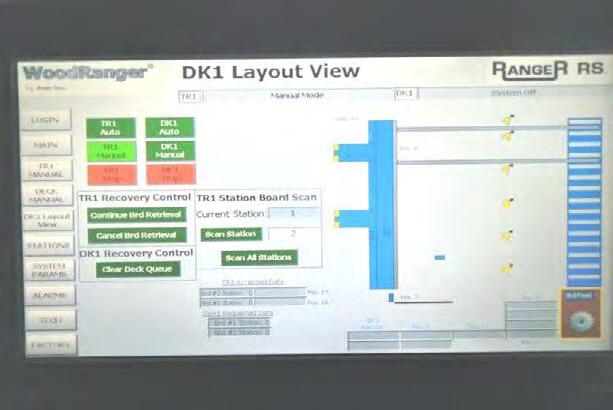


Used Hain Quick Rafter Cutter
• Reconditioned in December 2020
• Board Sizes: 2x4 and 2x6
• Motors: Two 1 HP / 220 Volt or 440 Volt / 3 Phase
• Saw Blades: 7 1/4" Carbide Tipped (set at 45 degrees)
• Angle Adjustment: Manual Rotation with Air Brake
• Air Supply: 90 PSI
• Carriage: Steel Rails with Steel Dual V Rollers
• Pedestal: 3/16" Formed Steel
• Saw Housing: 1/2" Billet Aluminum
• Covers: 10 Gauge (1/8" thick) Steel
• Fully Enclosed for Safety
$12,500 NOW $9,900 FOB AZ Wasserman & Associates 800-382-0329 www.wasserman-associates.com



not work)
• 230 Volt / 3 Phase
• Excludes: Outfeed Queue Rollers & Waste Conveyor
$29,900 NOW $14,900 FOB AZ Wasserman & Associates 800-382-0329 www.wasserman-associates.com

In answer to the demands of high-volume customers comes the Monet DeSauw FWA 500 CA (Automated Controls) floor web saw. The 500 CA is perfect for component manufacturers who routinely run floor trusses in high volumes with variable web geometry. Another primary feature is enhanced safety through automation which eliminates the need to open the saw motor cabinets other than for periodic service. The 500 CA includes automation for all blades, including the fixed cut-off blade for minimal waste. Lumber infeed speed is variable up to sixty (60) boards per minute, while the powered carriage utilizes rack and pinion drive with airlock for set accuracy throughout the production run. Your operator will easily download batches to the 500 CA saw from your design software via an ethernet connection to a MS Windows 10 industrial PC with a 17″ monitor housed in a stand-alone console. If you frequently batch floor web cutting, and if enhanced safety with increased productivity are a concern, then an automated Monet FWA 500 CA may be the right selection for you. More information click Here
Price based on configuration.
Work Smar ter 2Seconds
That'sallthetimeittakes todrillstudsforrunningRomexorotherelectricalwireinthewallpanels
Motor: HeavyDuty5HP-3phase-220vor440v(Pleasespecifywhenordering)
MotorcarriagebearingandspindleassemblymountedonBlanchardgroundsteelplate LinealmotionishardenedandgroundVbearingsandrails
BlockSizes: 2x4through2x12infiniteheightsettingtocenter
AirSupply: 100psi10CFM
Drills: 2wing3/4'”CarbideTippedcanaccommodatesmallerorlarger
Spindles: AlloySteelpolishedandgroundprecisionshafting
Frame: 2"SteelWithPowderCoatFinish
Covers: 10Gauge(1/8"Thick)Aluminumremovable
Dimensions: Height-60inches,Width-33inches,Depth-33inches
Shippingweight: 750lbs.-(Includingcrate)
MADEINAMERICABYAMERICANS


Together the PieceGiver and PieceMaker streamline production, boost efficiency and reduce manual labor – all with just ONE operator.

Is truss cutting your bottleneck? Get in touch to learn how the power duo can transform your workflow!
The PieceMaker
An automated linear saw that cuts, prints and optimizes.
The PieceGiver
A high speed, fully automatic lumber loading system.


• 5 Blade Automated Component Saw
•
• Computer, Enclosure & Stand
• Waste Conveyor (under saw)
• E xcludes Incline Waste Conveyor (adjacent to saw)
• Video available upon request
• Add $12,500 for 6 Chain Live Deck $16,500 FOB ND Wasserman & Associates 800-382-0329 www.wasserman-associates.com



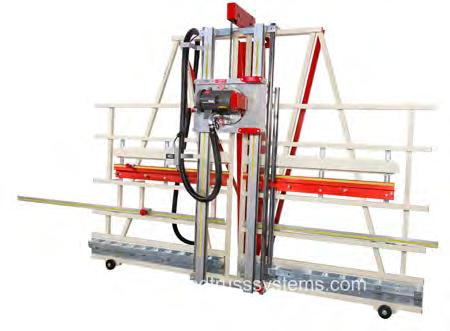
Safety Speed Manufacturing, model 7400 XL*, vertical panel saw, 3 HP induction motor, 64 inch crosscut, 2 1/8" maximum thickness, accuracy within 0.005 inches, 13 foot long welded steel frame with integrated stand and linear V-guides, enclosed counterweight system, adjustable vertical and horizontal rules. Quick changes from vertical to horizontal cutting. Includes machined aluminum material rollers, hold down bar, wheels, quick stop gauges and material hold downs. Dust collection ready. Options available include digital readouts for vertical cuts, automated length measuring, laser guide, stop bar, vacuum and midway fence. 208-230/460 volt, 3 phase electrical (208-230 single phase, 2 HP power optional +$100.00).




A complete wood processing system proven to profitably feed cut lumber to truss plants of all sizes.
Easy to use, simple robust automation that is scalable with less labor. A RetroC holds calibration.





Auto-Feeding, no upper hold-downs (just 15 automation axes) with electronic braking. Efficient material handling that will significantly increase cut piece production with reduced operating costs and improve truss build times with consistently accurate cut pieces.


Catching labor is eliminated with our optional SpeedCatch cart system. Sophisticated SpeedCatch software enhances the efficiency of truss production by effectively collating and organizing the lumber at the truss tables. SpeedCatch upgrades the RetroC to a comprehensive one-person (sawyer) wood processing system.




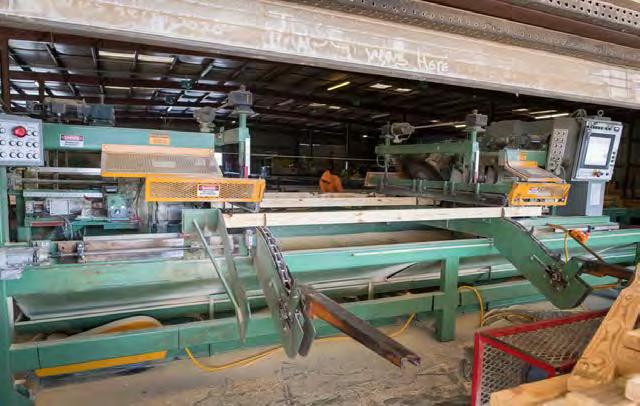

$355,000 Location: MO

New, Monet DeSawyer 2000, computerized, five-bladed component saw, sets up in 15 to 17 seconds, can run in manual mode, downloads projects from a network or manually using display screen controls. Features all powered movements, cuts from 15" 90/90 cuts to 20 foot length, 2 x 3" to 2 x 12" lumber depths and internal brakes are standard. Options include enhanced servo controls featuring autocalibration, catcher's display and either shaker or belt scrap conveyor and incline. 440 volt, 3 phase electrical.
Stacking wall panels at the end of your production line can be a real labor-intensive and safety-challenging task. But it doesn’t have to be now, thanks to ProStack . This innovative wall panel stacker literally stacks from the bottom up, reducing awkward overhead lifting & placement, and the risk of head injury. Plus, ProStack frees up at least one worker to return more productively to your core task—building wall panels. Enhanced worker safety and productivity is what ProStack is all about.

By: DAK Automation

Setup and installation is easy too, without the need for complex training or disruption to workflow. So, free up your team to do what they do best, and you need to do most, and let ProStack stack your wall panels instead. Contact us to learn more today. For a ProStack demonstration video, scan the QR code below.
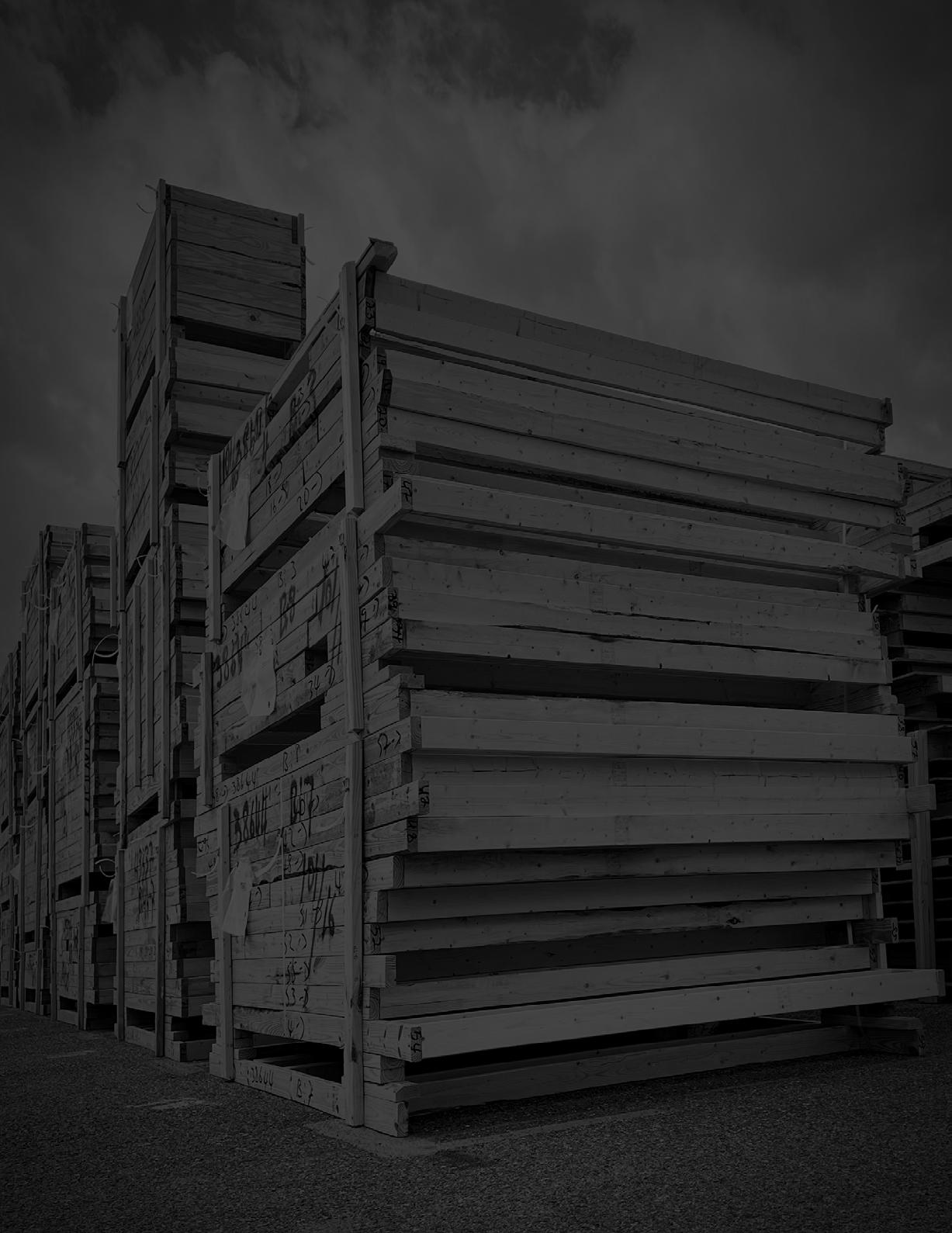





2002 Monet B500 five-blade component saw – Single Sided Setup includes digital readouts, push-button movement controls for angles, manual movement for length, mechanical backup counters, (1) 30″ diameter blade, (2) 18″ diameter blades, (2) 16″ diameter blades, powered chain infeed with upper hold-downs and shaker pan waste conveyor. Cuts angles from 8 to 115 degree angles. Minimum 90/90 cut is 10 inches and shortest angle cut is 18 inches. Cuts 2×4 through 2×12 lumber up to 20 feet in length. Includes horizontal shaker-pan waste conveyor, spare set of blades, any available spare parts. 480 V, 3 Ph, 100 Amp electrical.
a blending of excellent services and products, with answers that work...!© Not producing the results you need or want – getting conflicting info about what to do and the equipment and the systems you may need?
Before you Buy - Ask yourself –do I need a salesman or a guide?
If you want an Independent Guide that has your bottom-line results as the #1 priority, Call Me. If the salesman will do - we'll talk later...
Also, don't let Financing Deals influence your best solution. FitzGroup can arrange – Zero down & No payments for 90 Days!
Please be assured that your investment with any of our selected partners will not cost one penny more with the Fitzgerald Group as your purchasing contact. In addition, you will receive the full advantage of our Partner Relationships and Services NOT offered elsewhere.






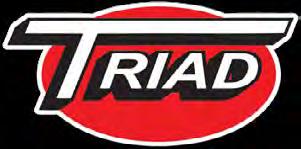
By the Triad | Merrick Machine Company Team
In modular and off-site construction, productivity gains rarely come from dramatic changes in framing or sheathing techniques. Instead, the biggest improvements often occur at transition points and especially end-of-the-line material handling. Moving completed wall panels safely, efficiently, and with minimal labor is a universal challenge for both wood and steel builders.
Triad’s Panel Lifts and Panel Cart systems have become an industry standard in this final, crucial phase of wall panel production. Their value isn’t rooted in flashy technology or complicated automation—it’s in rugged engineering, ergonomic simplicity, adjustability for a variety of wall sizes, and reliable performance. For shops experiencing labor shortages, bottlenecks at the end of their production line, or (the ever present) safety concerns, Triad’s systems represent one of the highest-ROI upgrades available today. And you can mix and match lifts and carts, based upon your particular production line’s needs.
Producing a wall panel is only half the job. After fastening and inspection, the panel must be:
1. Lifted from the production table,
2. Moved to a stacking area,
3. Added precisely to a growing bundle, and
4. Ultimately staged for loading onto a truck.

Historically, this required a two- or three-person team—one guiding the panel, one operating the hoist, and sometimes a third ensuring the stack remained square. As many shops know, this end-of-line flow often becomes a bottleneck even when upstream machinery is state-of-the-art.
Panel Lifts and Mod Mover Carts address exactly this problem, providing an efficient and predictable system for removing, stacking, and transporting panels using one operator, an overhead crane, and simple, durable mechanical design.

Triad’s XPL family of Panel Lifts is designed to attach directly to a shop’s existing overhead power hoist or forkliftmounted lift chain. Their defining feature is the constant-sizing mechanism, which holds the lift’s geometry steady as the operator positions it. This eliminates the pushing, pulling, and re-adjusting common with improvised slings or self-closing grabbers, and makes accurate engagement with the panel’s center of gravity quick and intuitive.
The key advantages include:

• True one-person operation: Operators can lift a panel off the line, rotate it, position it, and place it onto a stack without assistance. The lift maintains its set size when empty, remaining ready for the next panel.
• Fast adjustment for different wall heights: With clevis-and-cotter pin adjustment, the XPL lifts accommodate a range of wall heights—typically from 7’ to 12’ wide, depending on the model.
• Durability for industrial environments: Bronze bushings, replaceable grippers, and heavyduty steel construction ensure long service life even in high-throughput shops.
Most shops handling wood panels rely on the XPL-1000, with its 1000-lb capacity and support for up to a 4” sheathing overhang. For larger modular manufacturers or multi-story wall systems, higher-capacity options such as the XPL-1500 and XLPL-1750 extend the range and lifting capabilities.
For steel framing producers, Triad offers the XPL-S Steel Panel Lift, engineered for panels from 4” to 12” thick—an unusually large envelope given the weight and bulk of steelstud assemblies. This model retains the same ergonomic and mechanical simplicity while addressing the specific challenges of lifting heavy, dense steel walls.

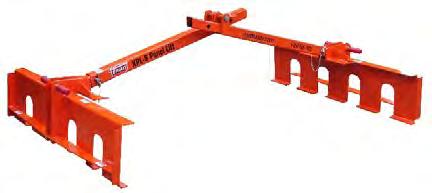

Once panels are lifted and stacked, they need to be moved—often across large facilities or staging yards. Triad’s Panel Stack Carts and Mod Mover Carts function as paired rolling supports that allow an entire bundle of panels to be repositioned manually or with forklift assistance. These carts are not just simple dollies; they are engineered to support concentrated loads, maintain panel stack alignment, and keep massive panel stacks mobile with far less strain and risk.
Panel Stack Carts are the everyday workhorses of the end-of-production-line movement. Used in pairs, they support and mobilize completed wall bundles from the end of the production line to staging or loading zones. Their compact profile, rigid steel construction, and smooth-rolling wheel sets make them ideal for high-throughput shops that need dependable, no-maintenance mobility solutions without the extra capacity of the Heavy Duty Mod Movers.
The key features of Triad’s Panel Stack Carts include:
• Rigid welded steel I-beam construction engineered for durability and daily industrial use.
• Smooth-rolling 8” caster arrangements that allow one operator to maneuver large wall bundles with surprising ease.
• Side-clamp mechanisms that align and secure the load to the cart, preventing drift as the bundle is moved.
• Designed to operate in pairs, providing balanced support across long wall panels without tipping or flexing.
• A stable platform for bundling, strapping, and forklift pickup as panels are staged for transport.
The Heavy Duty Mod Mover Cart offers a weight capacity of 6,700 lbs per cart, meaning three carts can reliably support up to 20,000 lbs. This makes them suitable not only for wall bundles, but also for very long or atypical loads found in modular construction.
Other performance-oriented features include:
• 12” mar-resistant phenolic wheels for smooth rolling under extreme loads, and rough surfaces (like expansion cracks in the concrete),
• A 14’ uninterrupted flat rail surface for supporting long walls,
• Four swivel casters plus two fixed center casters for optimal maneuverability, and
• A self-locking infinite-adjustment clamp for keeping the load secure and aligned.

Used in pairs or triplets, these carts enable a single crew member (or a forklift operator) to move an entire stack of panels effortlessly to a staging area for bundling and truck loading. Either cart system offers you a choice: complete freedom of movement in any direction or optional movement constraint to one direction by a floor track system.
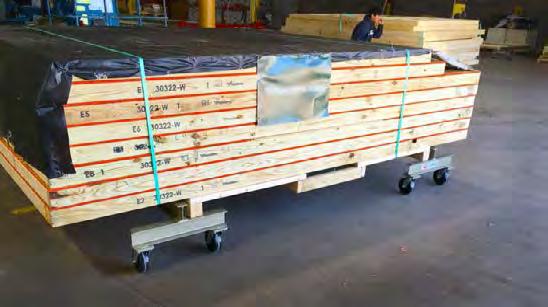
The true value of this system becomes clear in three areas:
1. Labor Efficiency: With the labor market increasingly strained, equipment that enables one operator to perform what used to require two or three people translates directly to reduced staffing pressure and lower operating cost.
2. Predictable Material Flow: Panel lifts and carts create a repeatable, controlled workflow where panels always move the same way, at the same stations, with the same ergonomics. Predictability reduces errors, damage, and downtime.
3. Improved Safety: Manual manhandling of large wall panels is one of the highest-risk activities in wall panel shops. Controlled lifting, secure gripping mechanisms, and stable rolling carts significantly lower the likelihood of injuries or drops.

In an industry where production speeds continue to increase and skilled labor remains hard to find, simple mechanical tools that save time and reduce manpower have become vital. Panel Lifts and Panel Carts don’t rely on electronics, software, or complex calibration—they just work.
And because they are used every time a wall is finished, their ROI is realized daily, not monthly or quarterly. For modular builders, off-site construction firms, panelization shops, and stair manufacturers, these systems are not luxury upgrades. They’re essential workflow stabilizers.
See more information and videos online on Triad's intelligent material handling and staging, or call the factory at 1-800-568-7423 ext. 133.
To see meaningful labor savings, quality improvement and production gains, SL Lasers with their easy-to-see green light are nothing short of illuminating. They enhance worker accuracy and productivity, regardless of experience or primary language. They can reduce tedious setup time by up to 70%. No complex training or costly service agreements are required. And SL Lasers integrate seamlessly with any component design software and are quickly installed over existing equipment.


We’ve been trailblazers in wood component laser projection since its very beginning, and we’re still delivering more rapid ROI for roof truss, wall and floor panel producers every day. Contact our enlightening team at Wood Tech Systems to see how SL Laser can deliver for you.





$224,997 FOB
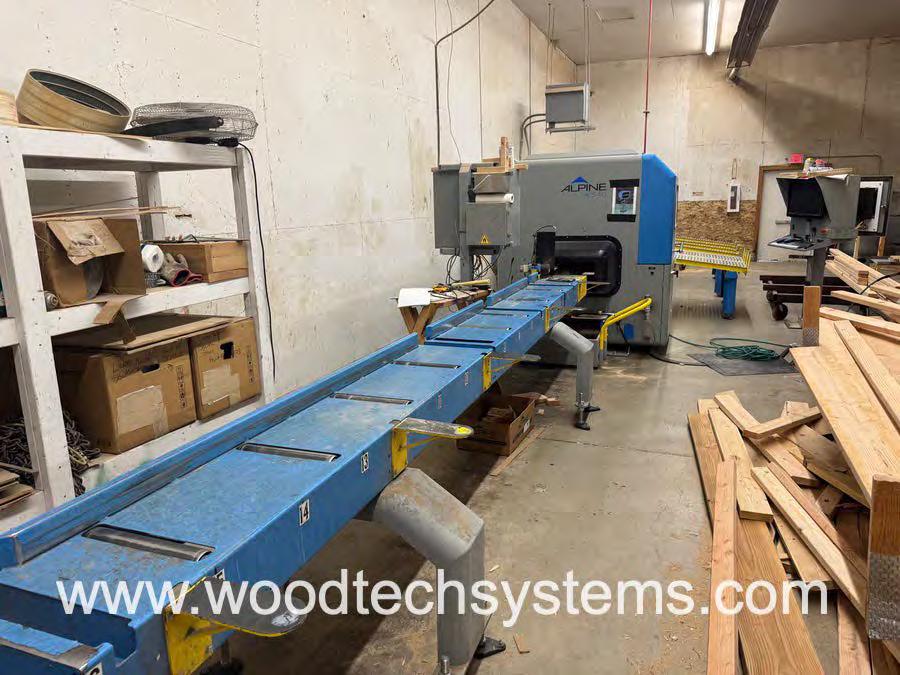
2020 Alpine ALS 4.0 linear feed saw. Cuts wall and truss parts from lumber depths 2×4″ through 14″ deep, thicknesses from 1.38″ to 1.77″ and board lengths from 36″ to 24 feet. Cuts bevels from 90 to 25 degrees, 60”+ scarf cuts and optimizes material. Includes 24-foot-long infeed conveyor and 15-foot outfeed conveyor, touchscreen monitor, Matthews Inkjet printer (one 3 ½” face), dust port and under-saw scrap conveyor. All servo-controlled functions, 7.5 hp motor with 20” carbide tipped blade.
Includes spare blade, operator’s manual and available standard spare parts kit from OEM. 230v, 3 phase, 100 Amp electrical required. Includes step-down transformer. 100 PSI at 25 CFM air required. Weight of saw cabinet is 3,500 lbs. OEM installation available at an additional charge.



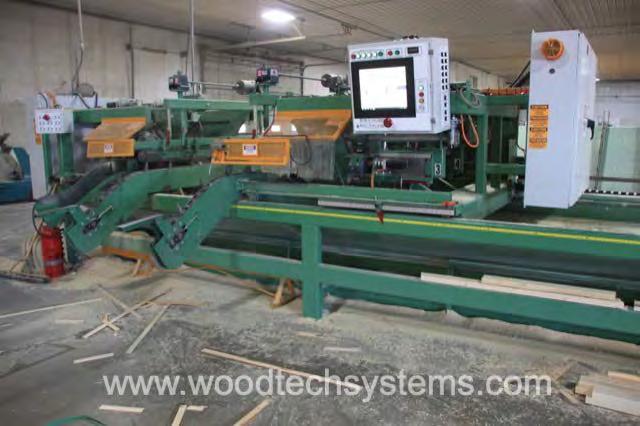
Monet DeSauw model Desawyer ESC enhanced servo-controlled ( ESC) component saw with touch screen user interface with backup mechanical controls. Includes three operating modes: Auto (download setups from LAN or USB), Semi-auto (touch screen setup entry), and Manual (backup push-button switches for powering all movements). Includes over-travel protection, comprehensive setup screens, auto sequencing, auto-calibration and pneumatic brakes on all five () blades. One (1) 30” blade and four (4) 16” blades. Manual cut limits are 18” min., 11” min. square edge blocks, 20’ max cut. Belt under-saw waste conveyor. Voltage: 480 volt/3 phase/60 Amp. Air: 50 PSI at 5 CFM. One-year warranty included. Can be paired with a model PD-6 lumber feed system at an additional cost. Heavy duty 80 RIV chain feed system. 16’ wide x 20’ long x 36” deck height. Transfers 3’ to 20’ lumber. Includes auto-feed control, foot pedal override, forward & reverse, variable speed control with HD double-bearing construction. Other additional-cost options include, inkjet marking, label printing, backside screen display, spare blades and incline scrap conveyor.
$386,000 FOB MO


2006 Alpine Speed Rafter Cutter
• Simplified compound cutting for hip, valley and jack rafters (double & single compound cuts)
• Two Worm-Drive Circular Saws (110 Volt / 30 Amps)
• Saw Turntable (for angle cutting)
• Saw Carriage (for up to 45 degree bevel cutting)
• Infeed & Outfeed Roller Conveyor with Stands
$4,900 NOW $4,250 FOB CA Wasserman & Associates 800-382-0329 www.wasserman-associates.com

Used - Metra Cut Radial Arm Saw (2x) Parts Machine
$500 – Make Offer
Eide Machinery Sales, Inc. 612-521-9193 www.eidemachinery.com

Used - 2005 Model 305 Infeed Conveyor Designed for use with all component saws. To include: Soft Start ~ Soft Stop Inverter System. Programmable load sensing; Overload / Jamb sensing shut down feature. Gear motor providing conveyor speed of 36' per minute. Forward and reversing controls for location at both ends of conveyor unit. Material capacity range - 4' through 24' lumber. Chain deck pedestals 20' long with cross bracing. Staging area at the saw independent of the live deck system. 30,000lb. Deck capacity. Call for pricing
Eide Machinery Sales, Inc. 612-521-9193
www.eidemachinery.com

Safety Speed Manufacturing
Gypsum Cutter
Lose the dust and noise with the Safety Speed model VGC 515 cartridge cutting system for processing material such as DensGlass®, or other gypsum products. Easily process full sheets of gypsum wall panel sheathing of material in widths up to 64″. Fully portable, and with NO power or air required the VGC 515 is dust and noise free to easily score gypsum material that rolls effortlessly to an integral edge used for breaking of scored material.
$6,399 FOB MN Wood Tech Systems 765-751-9990 www.woodtechsystems.com

019 Holz-Her Sector 1260 Vertical Panel Saw
• 4.0 kW Motor with 10” Blade (2.36 cutting depth)
• 230 Volt / 3 Phase
• Cutting Length: 14’ / Cutting Height:
• Automatic Mode: Plunge, Saw & Return with Variable Speed Control
• Top & Bottom Sawing Beams with Pneumatic Arrest
• Digital Horizontal Cutting with Motor-Driven Precision Adjustment
• Digital Longitudinal Stop with Fine Adjustment
• Pneumatic Support Grid
• Dust Extraction Port
• Like New Condition
• A 2016 COIMA FI6000 Dust Collector is available at additonal expense FOB CA Wasserman & Associates 800-382-0329 www.wasserman-associates.com


New SpeedWorx Automated Sheathing Station by Safety Speed Manufacturing- Reduce labor and operator fatigue by taking advantage of the SpeedWorx automated vertical panel saw. This one-person station cuts wood sheathing sheets up to 50-inches x 10-feet, and up to 2-inch thickness, using a fast 1-button cutting setup with CNC accuracy to 1/32 of an inch (0.03125″). The photos of raw materials illustrate the drastic reduction of scrap material thanks to implementing the Rogworx saw station.
Visual user interface makes choosing the job and sheet cutting order easy to determine. Files are downloadable allowing for minimum waste. Saw station reads WBX file format (Alpine) or EHX file format (MiTek) or CSV files with manipulation.
Automated sequencing of sheets provides optimum usage of each sheet. The cutting chamber changes from ri to cross-cutting automatically. All this in a very small machine footprint, so it can fit easily into your existing building.
Visual user interface with standard ‘Auto Fill’ feature makes choosing the job and sheet cutting order easy to determine. System offers full optimization and sequence panel parts looking ahead through the job based on your specification. The cutting chamber changes from rip to cross-cutting automatically. All this in a 100 square foot footprint, approximately 25′ long x 4′ deep, so it can fit within existing facilities.
Includes advanced dust collection. Integrated Printing for labeling parts is available as an option. 208-230V volts, 3-Phase, 25 Amp electrical required, 5 CFM at 100 PSI air required.
$143,000 (Base)



Alpine AutoMill HP, model 349C component saw. Servo controlled computerized saw sets up in 2 to 19 seconds and downloads from a network, or by using a touch screen for ease of operation. Five-head automated component saw works in both automated (downloading files), semi-automated control (via touch-screen input) or manual mode. It has (23) axes of automated movement, enhanced diagnostics, and auto management reporting.
The HP cuts from 2′-6″ to 20′-0″ long material in size range from 2×3″ through 2×12″, and 4-angle floor webs from 2′-0″. Includes [3] 18″, [1] 20″ and [1] 30″ blades with air brakes, Windows 7 o/s and under-saw scrap conveyor. The Windows 7 o/s can be upgraded to a version of Windows 10 that will be supported until 2032, at an additional expense.
Also includes over $8,000 in spare parts. 480 volt, 3 phase, 100 Amp electrical required. 90 PSI @ 69 SCFM air required.
$129,997 NOW $119,990 - FOB OR


B500 Monet Desauw
5 blade Component Saw
New in 2022. Still in operation but will be available by the end of March 2026. Live deck and skate wheels not included.
$149,000 FOB WI Call 563-235-7449



Saw 2015 Monet DeSawyer 2000, (non-servo) fiveblade, automated component saw using a touch screen interface and Windows 10 O/S for direct input. The DeSawyer 2K Can operate in automated or manual input mode. (1) 10 h.p., 30″ diameter blade with PAE setup & (4) 5 h.p. 16″ diameter blades with center line setup. Mechanical backup counters and scales, powered chain infeed with upper hold-downs, and shaker pan waste conveyor (no scrape incline). 16″ blades cut angles from 3º to 115º, 30″ blade from 3º to 100º . Minimum 90/90 cut is 10 inches and shortest 4-angle cut is 18 inches. Cuts 2×4 through 2×12 lumber up to 20 feet in length. 480 volt, 3 phase, 60 Amp electrical 90 psi air required. (Seller reserves the right to decline sale based on buyer’s regional trade area).
$119,000 FOB GA



New Monet FWA 500 Floor Web Saw
New Monet 5-head, floor truss web saw, cuts 4-angle, 4×2 floor truss webs from 13 inches and 90-90 blocks from 7 inches, to 4 foot long maximum length. Features 10-board magazine feed, powered, fixedquadrant angulation, manual carriage standard, scrap conveyor and cut-off blade. Options available for longer carriage length, incline scrap conveyor, and choice of shaker or belt scrap conveyor. 440 volt, 3 phase, 60 Amp electrical. 50 PSI air at 5 CFM required. $83,000 FOB MO
www.woodtechsystems.com


• 10 Each - Standard 20 Ton Track Mounted Heads with 10" x 10" Platens (refurbished in 2011)
• 6 Each - 2011 Double 40 Ton Track Mounted Heads with 10" x 15" Platens
• 2 Each - 2021 Double 40 Ton Track Mounted Heads with 10" x 15" Platens
• 2 Each - 10 HP Two Stage Hydraulic Systems with Controls (230 Volt / 3 Phase)
• Track System for 55' Scissor & Flat Bottom Trusses
• 1 Each - Peak Head Track (perpendicular to base line)
• 2 Each - Movable Bottom Chord Tracks (to adjust for pitch)
• 8 Each - Floating Tracks for Top Chord Head
• Clamping Package: Peak, End Stop, Camber Stops & Air Clamps
• Air & Hydraulic Manifolds with Quick Connectors for Heads
• Pn eumatic Pop-Up Skatewheel Ejectors (for truss removal)
• 56' Powered Transfer Roller with Stands
• 26 Each - 14' Powered & Idle Exiting Rollers with Stands $89,900 NOW $75,900 FOB AR 765-751-9990
Vekta’s innovative Real-Time Optimization software leverages decades of technology advancements and intelligent algorithm development to provide unparalleled flexibility and control of your cutting and production planning.
RTO is designed specifically to make considerable improvements to operational and material efficiencies in plants with a direct delivery system, but can also benefit smaller setups as well.
KEY FEATURES:
• SIMULTANEOUS OPTIMIZATION – instantly optimize multiple jobs across assembly stations, minimizing waste.
• REAL-TIME ADJUSTMENTS – adapt cutting volumes and flow to meet dynamic point-of-use demand.
• DECENTRALIZED INTERFACE – empower your operators with the ability to schedule zero-disruption recuts directly from the point-of-use. Load, adjust, reorder and reroute in real-time from any network device.
• MULTI-SAW MANAGEMENT – efficient single operator control of multiple saws, reducing labor requirements and costs.
• CONTINUOUS CUTTING LISTS – eliminate end-of-file waste through seamless job transitions, optimizing material usage.
Simply put, RTO is a comprehensive solution to provide significant improvements in productivity and waste reduction.


Tables with WizardPDS® Automation

Handling Upgrades
Scale production without the cost or downtime of a full overhaul. EIS Line Expansions extends operations of any existing setup.



Equip your system with WizardPDS® Retrofits, EIS Universal™ Tables, material handling upgrades, and New-Legacy gantries — all designed to fit any line. Our modular solutions grow with your business, helping you get ahead with the proven systems you have.


By John Holland President/CEO at Paragon
nnovation begins with a question: “What If.” What if lumber became stronger when arranged in triangles and joined with steel plates? What if geometry could live inside a computer instead of on paper? What if building trusses offsite proved better than framing rafters onsite? Every innovation begins with the imagination to ask “what if,” and then the courage to follow through on that idea.
Over the past year, many have questioned whether independent component software can thrive apart from hardware. It’s a fair question, but perhaps it’s worth reframing. What if we focused more on improvements than on protecting the status quo? Can we look at the pain points facing component manufacturers and ask how to make their work and businesses better? What breakthroughs could we build once independent software removes the old constraints on imagination?
At Paragon, imagination isn’t wishful thinking. We think of it as disciplined curiosity. It is the willingness to question limitations while recognizing which ones are self-imposed. As manufacturers, it’s easy to focus on physical constraints, but what if the lack of collective imagination is the quiet force that hampers innovation?
We owe a debt to the early innovators who paved the way for the tools we rely on today. Some are no longer in business, and others were acquired, but each played an essential role in the progress that brought us here.
Independent endeavors of the past look very different from the technology companies of today. Independence now lives in a connected world powered by cloud computing, open APIs, and LLMs. Twenty years ago, it would have been hard to imagine a fully remote company whose biggest asset is digital in the form of millions of lines of code. Yet that is how Paragon provides value to its customers today.



Imagination alone cannot build components or software companies; both require craftsmanship and hard work. After the housing crash of 2008, my father, Dan Holland, imagined a world of independence, not out of defiance but out of disciplined curiosity. He knew the work ahead would be difficult, but that’s where true innovation happens: deep in the details and hidden from the spotlight.
Every improvement in the component industry has required a blend of patience and persistence. Imagination without discipline will give up on what’s hard, and discipline without imagination will give in to the status quo. The deep work done each day compounds into something great over time.
We often equate innovation with technology, but what if we reimagined how value itself is created? Netflix pivoted from DVDs to streaming. The founder of Salesforce left Oracle to create a standalone cloud-based CRM. In the same way, our industry can rethink the standard business model, especially in a digital age.
No one company will do everything well. The tight pairing of hardware and software may have made sense for decades, but today we believe digital products can be powerful enough to stand on their own. What if integrating replaced bundling, and collaboration replaced silos? What if companies had the freedom to chart their own path to success?
Over the past several years, we’ve spoken with many component manufacturers. Some are content with the traditional model, but many others are eager for change.
The future of component manufacturing should be built on openness, collaboration, and connection. We can get there by moving past silos and working together on the challenges that affect us all.
Paragon’s core value is dignity. We strive to show it by crafting tools that make each user’s work more fulfilling. We innovate not to disrupt but to give craftsmen more control, efficiency, and pride in what they build.
From the first manufactured component to today’s AI tools, every breakthrough began with someone asking “what if.” The future of the component industry probably will not be built by one company or individual, but rather by the collective imagination of those willing to ask how it could be better, and then build it.


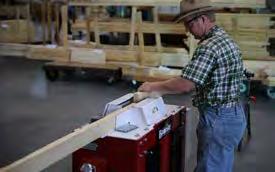
Baumeister Lumber Splicer
• Vertical Hydraulic Press with 3"x 12" Platen Size
• 2x3 and 2x4 Lumber Material (3" x 10" maximum plate size)
• Magnetic Platens to hold plates in the correct position
• Working Pressure: 1600 PSI
• Dual press cycle activation for safety
• 208, 240 or 480 Volt / 3 Phase (10 HP)
• Video available upon request
• Excludes: Infeed/O utfeed Roller Conveyor
• Optional 2x6 Capacity (up to 16" long plate) Splicer is available
$29,500 NOW $26,500 FOB PA Wasserman & Associates
800-382-0329
www.wasserman-associates.com

Four Eagle Production Presses with Jig Table
• (4) Eagle Production Presses (1 new in 2023, 2 with new pumps within the last 3 years, 1 with older Simplex motor)
• (2) TP300 C-Clamps (Roof & Floor Trusses)
• (2) TP600 C-Clamps (Extra Throat Depth for 2x8 & 2x10 Roof Trusses)
• 25 Ton Cylinder
• 5 1/4" x 6 1/4" Platen
• 220 Volt / 1 Phase
• Jig Table
• (2) 40' Steel Beams
• (4) Beam Trolleys
$37,500 FOB CO
Wasserman & Associates
800-382-0329
www.wasserman-associates.com

Commercial Machinery Fabricators 12' Finish Roller
• 12’ Long x 18” Diameter Rollers
• Front and Rear Safety Bars
• Adjustable Roller Height (1 1/2” and 3 1/2”)
$14,900 FOB IA Wasserman & Associates 800-382-0329
www.wasserman-associates.com

EMSI Field Repair Press
EMSI 10 Ton Field Repair Truss Press
System. Complete with: 1/2 HP, 115 Volt, 50/60 Cycle Universal Motor – Operates at voltage as low as 60 volts. 10,000 PSI Portable Power Pack with Two Speed Operation – 200 cu in/min @ 0–200 psi, 20 cu in/min @ 200–10,000 psi and Externally Adjustable Relief Valve (unit weight 55 lbs.). C-Clamp Assembly with 8" Maximum Reach, 4" x 5" Pressing Platen (optional platen available for 4” x 2”). Independent 10 Ton Hydraulic Cylinder. 10’ Hydraulic Hose Assembly with Quick Disconnect Coupling. Handle with 24 Volt Remote Electrical Pendant.
Call for Price Eide Machinery Sales, Inc. 612-521-9193 www.eidemachinery.com

1977 Joos Stand-alone Hydraulic Press
1977 Joos stand-alone hydraulic press, model HP-150, platen is 10-ft wide x 5-ft deep x 2-ft high. Used by seller to press RV trusses. 240 volt, 3 phase, 80 Amp electrical required.
$9,995 FOB OR Wood Tech Systems 765-751-9990
www.woodtechsystems.com



End-eject floor machine with floor finish roller press, 40-ft working length, builds 12″ to 24″ deep 4×2 floor trusses. Clamping is ontable air cylinders with toggle controls. Includes idler roll leading to floor finish press. Gantry press head has a 7 HP drive motor. Includes electrical panel and inverter installed in 2024. Needs safety bar repairs. Model RF2300. Made in the Czech Republic. Floor finish press, 12″ diameter rolls, 5 HP motor.
$51,997 FOB NH

Klaisler finish roller press, model #: TR21424, 14-ft final roller with 24″ diameter rolls, heavy-duty steel frame, continuous shaft supported by (4) baffles. Twin 5 HP drive systems (10 HP total), with single-safety bar, and chain / sprocket guards. 460v, 3 phase electrical required. Please review this video: $39,997 FOB KY Wood Tech Systems 765-751-9990
www.woodtechsystems.com

New Wescana floor finish roller press with push button controls, e-stop, (2) 24″ diameter rolls, continuous 4″ diameter shaft with baffles, 5 HP gear motor with brakes, 3.5″ diameter bearings, taper-lock sprockets, sealed flanged roller bearings, reversing magnetic starters, safety barrier and electric eye. Available in 3-ft, 4-ft and 6-ft throat widths. Speed 2-ft per second. Height to bottom roller 35″. 230/460/575 volt, 3 phase electrical choices.
$46,620 FOB Alberta Wood Tech Systems 765-751-9990
www.woodtechsystems.com







• 14’ x 24” Diameter Gantry Roller (Model 14RT)
• 7 1/2 HP Motor (208 Volt / 3 Phase)
• 14’ x 64’ Steel Slotted Top Table with End Eject Rollers (Raised Track)
• Park Section and Uplift Ramp Section
• Wizard (GEN 1) Automated Jigging (32 Rails)
• Add $40,000 2005 Pacific Automation 14’ Finish Roller
• Prices are in US Dollars
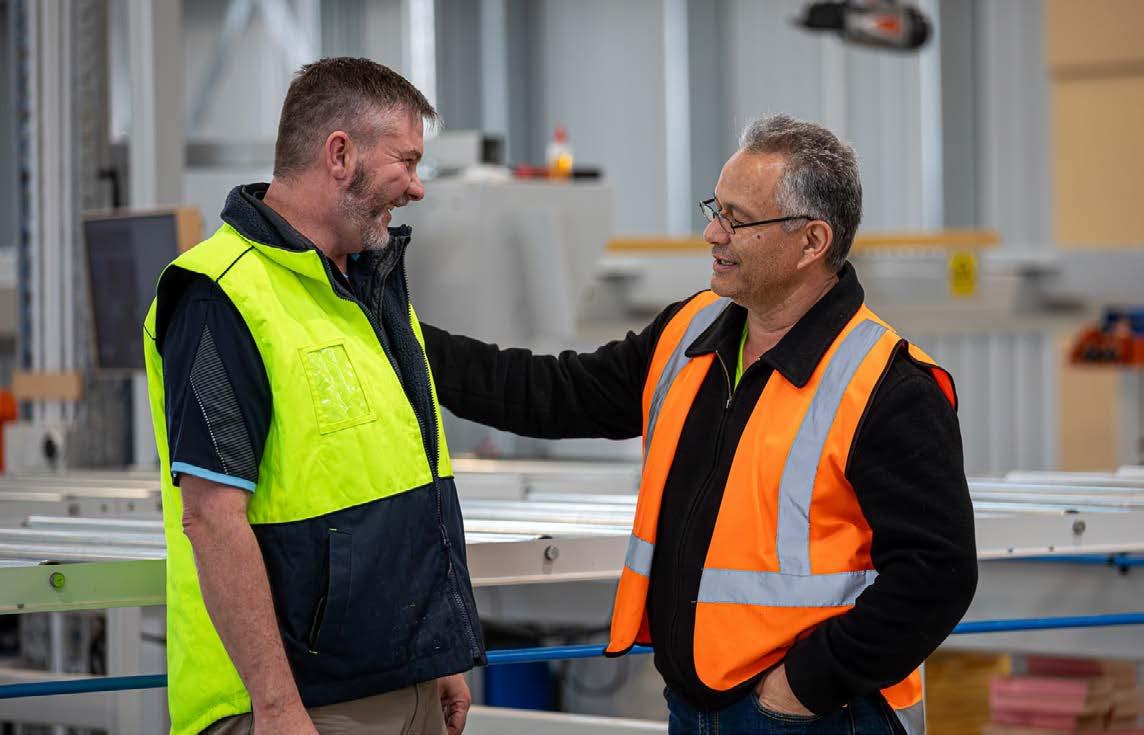
















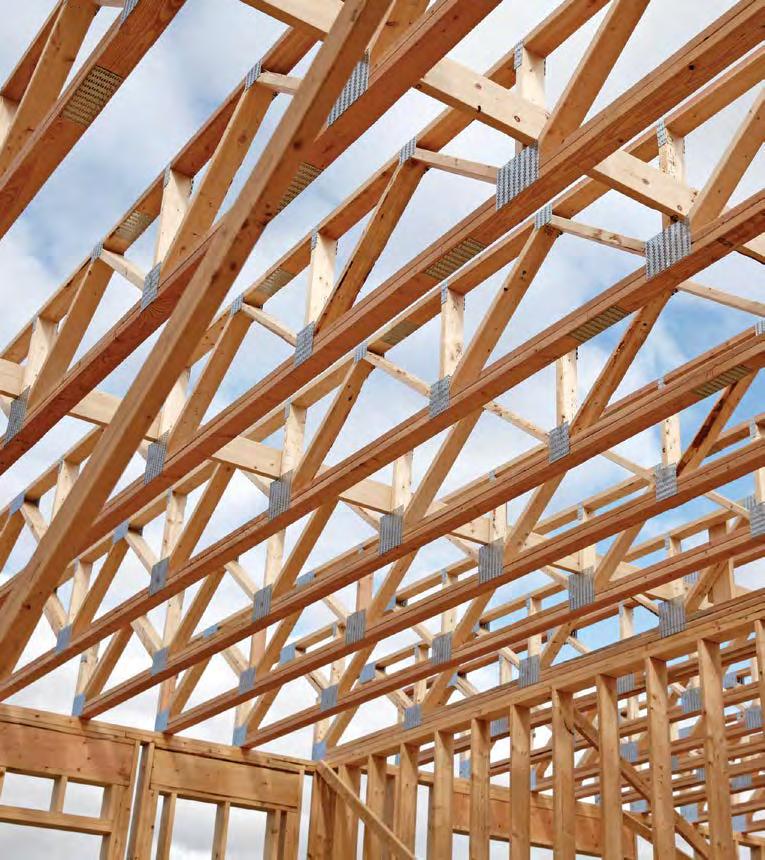
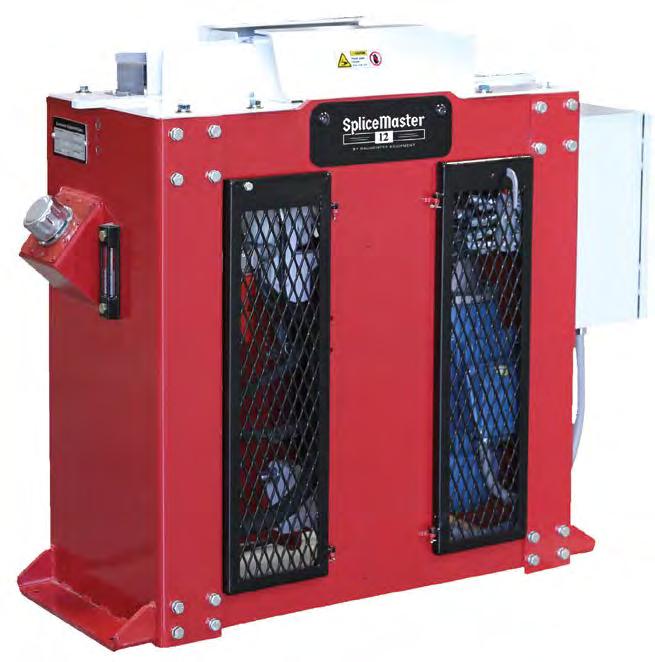




The TruStance Pedestal Jig System was developed to solve the problems associated with pedestal jig systems, while retaining and enhancing all the advantages. The system features track mounted pedestals with a track and lockdown design, movable pedestals, and a roller lift assembly. The pedestal tops are 30″ above the floor, creating a comfortable working height. The ability to configure the system in a very small footprint makes it ideal for any size truss plant. It is designed to use with a ‘C-clamp’ type press.
With the ability to install the interchangeable crossmembers and angle iron stops on both track mounted and movable pedestals, the system can be configured to meet the needs of even the most complicated truss designs.
Movable pedestals can be moved and locked down efficiently; the 4″ thick steel base provides the weight needed to keep them in position.
Bottom chord pedestals are installed on the steel track mounted to the floor. Pedestals are easy to move and rigidly lock into place with threaded rod locks.
The optional air activated roller lift assembly raises the truss above the jig to be easily ejected. Its versatile design allows it to be configured for any set-up.
TruStance recommends a (16) pedestal system for roof trusses to 60-ft in span. 120 volt, 1 phase, 20 Amp electrical required. 50 PSI air required.


Todd Drummond
According to Elon Musk, “Grok 4 is already at the intelligence of a PhD in every profession.” Anyone paying attention to the rapid developments in AI understands that this statement is not exaggeration—it is a warning. Within a very short period of time, AI systems will be able to match, and in many cases surpass, the technical reasoning of highly trained professionals across multiple fields. And yes, this absolutely includes the entire wood truss, wall panel, and structural component design industry.
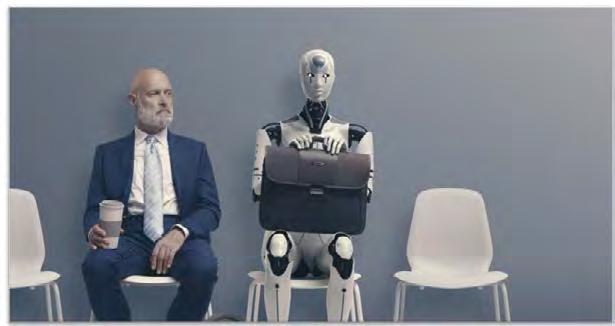
But here is the uncomfortable truth: very few companies are prepared for what is coming.
Just as lean principles require trust, communication, and healthy management–employee relations to achieve real results, this new wave of AI requires leaders who are willing to rethink long-held assumptions about work, training, and the role of designers. Those who resist will struggle. Those who embrace the change—and manage their teams with clarity and purpose—will gain a tremendous competitive advantage.
“The secret of change is to focus all of your energy not on fighting the old, but on building the new.” — Socrates
Are you approaching AI as an idea to be understood—or as a threat to be feared? When you think about your design department, your training process, or your internal expectations, are you discussing ideas or defending habits?
If you believe things will stay as they are, or that AI will simply be “another tool,” you may be blind to the scale of the shift already underway. To begin this conversation honestly, here are three major red flags that reveal whether a company is unprepared for the coming AI-driven design era.

1. You assume design experience will always require years of training.
Imagine telling a new designer today: “You will not be fully productive until two to five years from now.” That has been traditional wisdom for decades. And for good reason—the software is complex, the building codes are involved, and the judgment required to produce accurate structural components only comes from repetition. But this belief is about to collapse under the weight of what AI can actually do.
A quick example: a structural engineer designing a bridge. A traditionally trained structural engineer may spend hundreds of hours designing a new bridge:
• Running load calculations
• Modeling stress distribution
• Iterating beam placement
• Evaluating failure points
• Checking code compliance
• Simulating wind, vibration, and traffic load
• Producing a final stamped design

Even with modern software, it is a multi-week, or months, process requiring deep expertise. Now imagine the same engineer working with an AI system trained on millions of structural examples—every past bridge design, every engineering textbook, every known failure scenario. With AI assisting:
• Inputs are entered: span, soil, codes, traffic
• AI instantly generates multiple load-optimized concepts
• Stress models and load paths are computed in seconds
• Code compliance adjustments are automated
• The engineer finalizes and approves
A process that once took 3–6 weeks can now be completed in a single day. Now ask yourself the real question: If one AI-assisted engineer can perform weeks of design work in a single day, what will happen to staffing levels in that engineering office? They will not need the same number of engineers. They will not need the same layers of review. They will not need years-long training cycles. This is not speculation. It is simple math.

Now bring that reality back to our industry: When AI can learn 30 years of truss and wall panel design experience in minutes—and perform most tasks instantly—the traditional training pipeline collapses. What happens when AI can:
• Optimize loads
• Suggest corrections
• Produce preliminary layouts
• Detect bracing or plate errors
• Size members and material optimization
• Apply every local code flawlessly
• And remember every builder preference forever

Still think new designers will need years? Clinging to a slow, outdated training model is a clear sign your company is not preparing for the new reality.
2. The Profound Impact on Truss and Wall Panel Design
When AI enhancement becomes a reality—not “if,” but when—the impact on component manufacturing design will be profound. Design times will collapse. Training cycles will shrink. Errors will drop. Productivity will skyrocket. Staffing requirements will fall. And here is the truth many in the industry whisper privately but won’t say publicly: The rollout of AI-assisted design is inevitable—but complex. Plate vendors who control the design software spend millions annually on development. They now face a harsh dilemma: They must innovate with AI to remain relevant. But rapid innovation risks obliterating the very revenue streams that fund them—especially overseas design services.
AI does not merely improve productivity—it destroys the economic justification for outsourcing thousands of design hours offshore. Why pay for slow, error-prone human labor when AI generates 80–90% of the work instantly? This is the plate vendors’ paradox: Move too slowly, and outside competitors surpass them. Move too quickly, and they cannibalize their own profits. So yes—AI is coming. But the rollout will be careful, monetized, and slower than the market demands.
3. You underestimate how much AI will reduce staffing, shift wage pressure, and reshape who survives in the design department.
Many designers are comforting themselves with false assumptions: “AI will help me, not replace me.” “There will always be the same number of design roles.” “Companies will still hire lots of new designers.” This is dangerously naive. When design time drops from weeks to hours, staffing needs fall. When training shrinks from years to months, wage pressure falls. When competitors adopt AI, every company must adapt to maintain profit margins. There will be no choice in the matter.

The greatest threat is NOT to senior designers—it is to new designers. AI eliminates the long learning curve that once justified hiring junior staff. Entry-level roles will be the first to disappear. The same challenge will hit new structural engineering graduates. A four-year engineering graduate traditionally learns through hands-on experience: calculations, modeling, trial-and-error, iteration, and code interpretation.

But if AI performs 80–90% of that work instantly, the traditional apprenticeship path evaporates. New graduates—both structural engineers and component designers—will face fewer job openings because AI now performs the “junior-level” work they were once hired to learn.
Meanwhile, experienced designers become essential during the transition. They will guide AI workflows. They will validate complex cases. They will ensure AI outputs match real-world construction practices.
Their judgment still matters—but primarily during the transition to full AI integration. The pipeline beneath them? New designers and young engineers? They will struggle more than any previous generation to enter the field.
AI will not just accelerate design—it will redefine it. Less rework. Fewer errors. Shorter training cycles. Faster turnaround. More predictable output. Higher profits are not guaranteed. (The easier the process becomes, the more commoditized the industry will grow—and the greater the competition, with fewer opportunities to meaningfully differentiate your company.)
If you want to strengthen your competitive position and prepare for the future, begin by prepping your workflow systems now for the coming AI-driven processes—not after your competitors pull ahead. Those who have relied solely on plate vendor management systems to run their operations will be the most vulnerable. But that vulnerability deserves its own full article.
There is no better value than TDC for guiding your company through this transition. TDC combines: lean-manufacturing best practices, industrial engineering principles, and proven and practical processes and strategies to match your needs…to keep your company competitive in a rapidly evolving marketplace. Read public testimonials from industry leaders here: https://www.todd-drummond.com/testimonials/. The future is coming faster than most people realize. With the right preparation, your company can be ready—and can lead.
Website: www.todd-drummond.com • Phone (USA): 603-748-1051
E-mail: todd@todd-drummond.com • Copyrights © 2025



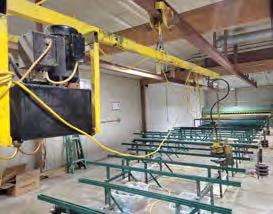
C-Clamp Presses & Unistrut Jig Table
• (2) Truss Component Systems C-Clamp Presses with Beam Trolley
• 10 Ton Cylinder with 6” x 7” Platen
• 2 HP / 1 Phase Motor
• (2) Overhead Steel Beams
• 54’ Unistrut Jig Table
• Pop-Up Rollers (2 at 12’, 2 at 6’)
• Excludes Finish Roller
$29,500 FOB OH
Wasserman & Associates
800-382-0329 www.wasserman-associates.com
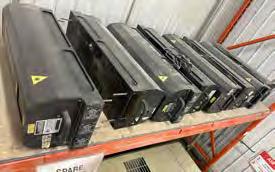
• Excludes: Computer, Virtek Software License & Service Agreement
$2,000 Each or $11,000 for all 6 Heads Price in US Dollars
Wasserman & Associates 800-382-0329 www.wasserman-associates.com



• 15’-6” x 24” Diameter Rollers
• 10 HP Motor (480 Volt / 3 Phase)
• Emergency Shut-Off Bars
• Checked, Repaired &Painted in September 2025 $39,500 FOB AZ


Wescana floor truss machine, available in side-eject or end-eject models. Builds floor truss depths from 12 inches to 26 inches, to 40-ft long. Features under-table cylinders powering the clamping system, built-in camber, truss flip arms, truss pop-ups, control valves for clamps, flip arms and pop-ups, with parking stations at each end of the table, and emergency shut-off bars on each side of the press head.



• 14' Long x 4" or 5" (Inside Diameter) Schedule 40 Pipe
• Tube Steel Stands (7" Height Adjustment - Height to be Specified)
• 4 Bolt Flange Bearings
• Idle and Motorized Rollers
• 1/4 HP Motors (240/480 Volt-3 Phase) with Controls
• 1" and 1 1/4" Cold Rolled 24" Shafts Baffled
• 6 to 8 Week Delivery






Elevate Your Wall Panel, Floor Truss or Roof Truss
Manufacturing with 4Ward Design Solutions’ Precision Component Design Services!
When you work with us, you get:
Speed and Scalability
Hours

Extend your existing capabilities with 4Ward's design expertise. Without the hassle and expense of training your own designers, partnering with us guarantees that each wall panel, floor truss or roof truss will be designed for structural integrity and production and field efficiency.
Achieve cost efficiency without compromising on excellence. Our costsensitive approach ensures maximum value for your investment.
Leverage our expertise, ensuring every component is attentively designed for optimal performance and durability.
We understand that every component project is unique. At 4Ward, we create custom designs, tailored to your exact specifications. Contact us today for a complimentary consultation.





2023 2-Head 30 mW LAP Laser System Condition: As-Is, Where-Is Set of (2) 30 mW green Cad-Pro LAP Lasers. Includes mounting brackets, distribution box, projector cables, remote control, and all available system hardware and instructions. 30 mW lasers are better suited to Canadian facilities, but could work in a US location with some additional steps due to regulations.
$39,890 FOB BC Wood Tech Systems 765-751-9990 www.woodtechsystems.com

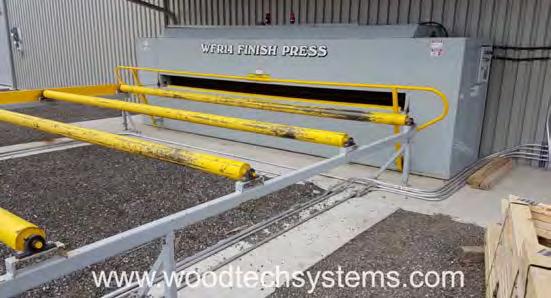
New Wescana roof finish roller presses, available in either a 14ft or 16-ft throat models. Travel speed of 2-ft per second. Both models feature 24″ diameter steel rolls with 3 1/2″ diameter shafts with baffles, (2) 5-horsepower drive gear motors with controlled motor drive systems for starting and stopping, along with taperlock sprockets, sealed flange roller bearings and reversing magnetic starters.. Includes safety shutoff bars, electric eyes, amber running light, red reversing light with buzzer, and e-stop module. 240 / 480 /575 volt, 3 phase electrical required.




With the new BCSI-2025, all B Series Documents have been updated
There are four different Jobsite Packages available:
• Jobsite Package
• Floor Truss Jobsite Package
• Long Span Jobsite Package
• Wall Panel Jobsite Package
Includes the Component Warning Notice Sheet for installers.
Also available as part of SBCA’s Electronic Jobsite Package subscription!



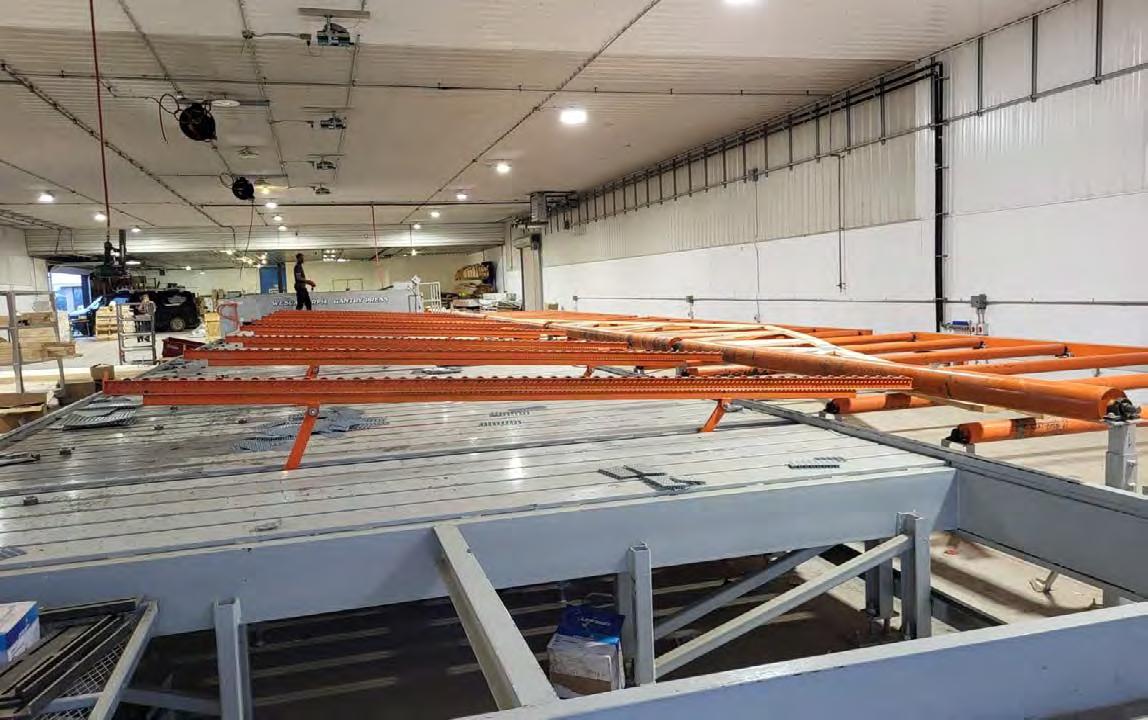
• Trackless Gantry Roller Press Head
• 14’ x 84’ Steel Slotted Top Tables with Skatewheel Ejectors
• Two 5’ Park Sections
• Transfer Conveyor
• 480 Volt / 3 Phase
• Excludes: Inside Powered Conveyor, 14’ Finish Roller, 60’ Outside Non-Powered Conveyor & SL Laser Projection System
• Price in US Dollars $289,000
To see meaningful labor savings, quality improvement and production gains, SL Lasers with their easy-to-see green light are nothing short of illuminating. They enhance worker accuracy and productivity, regardless of experience or primary language. They can reduce tedious setup time by up to 70%. No complex training or costly service agreements are required. And SL Lasers integrate seamlessly with any component design software and are quickly installed over existing equipment.


We’ve been trailblazers in wood component laser projection since its very beginning, and we’re still delivering more rapid ROI for roof truss, wall and floor panel producers every day. Contact our enlightening team at Wood Tech Systems to see how SL Laser can deliver for you.





$489,997FOB OR

2005 Alpine RAM Easy-Rider roof gantry model 703E, side-eject, 14-ft x 117-ft working length table, (16) tables with slotted steel building surface with (15) ejectors, (2) 6-ft long parking station, electrical supply cord in trough, and all available jigging hardware. Table includes (62) 2022 Wizard PDS Gen. 3 automated jigging channels with control display, (14) tables with four Wizard channels each, & (2) tables with three Wizard channels each. Gantry head with 24″ diameter gantry roller, 7.5 HP drive motor with gearbox, operator riding platform with joy-stick control, and (2) safety bars. (15) stand-alone receivers, (11) powered interior conveyors, and (10) interior idler conveyors included. Alpine finish-roller model 725F, 24″ diameter x 15′-9″ throat, and (20) exterior idler conveyors also included. 240/480v, 3 phase, electrical required. 480v, 3 phase electrical required.


Carl Villella, CLFP President, Acceptance Leasing & Financing Service
or Structural Building Component (SBC) manufacturers, 2025 presents a paradox. Demand for housing and commercial structures remains resilient, yet the cost of doing business is climbing. The resurgence of aggressive tariff policies—specifically on steel, aluminum, and Canadian softwood lumber—has created a “cost-push” inflation environment.
When raw material prices for truss plates, steel connectors, and lumber rise, your working capital becomes your most precious resource. In this climate, paying cash for capital equipment is no longer just a conservative choice; it may be a strategic error.
Here is why financing equipment is the most effective hedge against the current tariff climate for SBC manufacturers.
In a high-tariff environment, material prices are volatile. A 25% tariff on steel or aluminum doesn’t just mean more expensive connector plates; it means your cash flow must be robust enough to absorb sudden price spikes from suppliers.
• The Trap: Tying up $250,000 or $500,000 of liquidity in a new automated saw or laser projection system leaves you vulnerable when you need to bulk-buy lumber to beat a price hike.
• The Financing Solution: Financing allows you to acquire the asset while keeping your cash reserves liquid. This liquidity allows you to act like a banker for your own inventory—buying materials in bulk when dips occur, rather than living hand-to-mouth at peak tariff pricing.
The most effective way to neutralize higher material costs is to reduce waste and labor per unit. This is where the argument for high-end automation (e.g., linear saws with optimization software, automated truss tables) becomes undeniable.
• The Efficiency Math: If tariffs increase your lumber costs by 15%, you need to extract 15% more yield to maintain margins. Old equipment can’t do that; modern optimization software and precision cutting can.
• Financing Logic: Financing allows you to procure production-class automation immediately rather than settling for entry-level machinery you can “afford” with cash. You are essentially using the bank’s money to buy the efficiency required to survive the tariff hikes.
As 2025 progresses, we are seeing a “pull-forward” effect. Manufacturers across all sectors are rushing to buy machinery before potential new duties on imported industrial machinery (often coming from Europe or Asia) take effect. This surge in demand drives up equipment prices.


• The Benefit: Financing now locks in both the equipment price and the interest rate. Even if interest rates are higher than they were in 2021, they are fixed. Material inflation is variable and unpredictable. Trading a variable risk (material costs) for a fixed cost (a monthly equipment payment) stabilizes your P&L.
Perhaps the most compelling argument for financing in 2025 is the tax environment. Recent legislative updates for the 2025 tax year have created a “super-cycle” for manufacturing investment.
• Section 179 Limit Increased to $2.5 Million: The limit for immediate expensing has historically hovered around $1 million. For 2025, this has been raised significantly to $2.5 million (phasing out only after $4 million in spend). This means you can buy a $2 million automated assembly line and likely write off the entire purchase price in year one.
• Return of 100% Bonus Depreciation: After phasing down in previous years, 100% bonus depreciation has been reinstated for qualified property acquired after January 19, 2025.
• The “Profit” on Financing: If you finance a machine and write off 100% of the cost in year one, the tax savings often exceed the cash payments made in that first year. You effectively create positive cash flow in Year 1 from buying the machine.
SBC manufacturing technology is moving faster than ever. Laser projection and automated jigging are becoming standard.
• Leasing Strategy: In a tariff environment where you need to stay lean, leasing equipment (specifically FMV leases) transfers the risk of obsolescence to the lessor. At the end of the term, you aren’t stuck with a piece of iron that can no longer compete; you simply upgrade to the next generation of efficiency.
In 2025, the manufacturers who win won’t just be the ones who build the best trusses; they will be the ones who manage their capital the best.
By financing, you:
1. Hoard Cash to navigate volatile material tariff,
2. Acquire Automation to reduce waste and offset material hikes, and
3. Leverage Tax Breaks (Section 179 & Bonus Depreciation) to lower your effective cost of ownership significantly. Don’t let the sticker price of modernization scare you. In a tariff economy, the cost of not modernizing is far higher.
We are Acceptance Leasing and Financing Service, Inc. We were established in 1992, which puts us in our 33rd year of business. We pride ourselves on our Certified Leasing and Financing Professional designation. We are a member of SBCA and a frequent attendee of the BCMC tradeshows. We can provide financing for any new and, regardless of age, used equipment. We invite you to contact us at 412 262-3225 to discuss your particular situation.
lnnovationen fur den Holzbau

HUNDEGGER

Hundegger leads the way in automation innovation for the truss component industry. Our advanced CAMBIUM software offers cutting-edge automation and digitalization solutions, revolutionizing operations, boosting productivity, and driving sustainable growth for manufacturers like you.
We go beyond standard mechanization; we champion true Automation. The Hundegger TD-II isn't just a saw-it's a transformative, comprehensive solution designed to streamline your production process. From retrieving lumber to optimizing, nesting, stacking, destacking, sorting, buffering, and precise delivery, our system ensures peak efficiency and productivity, tailored specifically to truss component manufacturing.
Harness the power of data with Hundegger's advanced CAMBIUM TACTICAL software. It meticulously tracks and optimizes your production, ensuring more automated operations and significant productivity gains.
We provide state-of-the-art automation and control solutions that set the industry standard. Our focus on industrial automation and robotics positions Hundegger as the leader in enhancing performance and efficiency in truss component manufacturing and beyond.
Hundegger products are essential for future-proofing your business. Elevate your productivity and secure your competitive edge with our advanced technologies and automation solutions, meticulously designed to meet the unique demands of component manufacturers today and tomorrow.
Don't get left behind. Invest in the future with true automation from Hundegger and see your business thrive.




This is the first, self-contained, truly portable repair unit used to press metal truss plates into dimensional lumber at virtually any location. Wood component (roof and floor truss) manufacturers, as well as builders, frequently require a tool to repair metal plate connected, wood truss components. The complete unit is mounted to a wagon built from square tubular steel. Extremely compact at only 28” wide and about 32” long the wagon features four wheels on soft-rubber solid tires, and a steering axle on the front with a handle that makes the unit easily maneuverable. The wagon contains the hydraulic power unit and an area for a portable gas generator. A rack in the back securely stores the C clamp, a standard 25′ hydraulic hose, and an electric power-supply cable.
The clamp is manufactured from T1 steel, cut into a C-shape with a steel tube welded to the front that securely holds the hydraulic cylinder. Pressing is easily performed with a 4×4 magnetized steel platen that holds and presses the truss connecter plates. The C-clamp that weighs less than 30 pounds, features a throat that opens to 4-1/2” inches to accept either 4 x 2 or 2 x 4 lumber. It has a push on and release off switch to cycle the unit. A 10,000-psi electric-overhydraulic power unit pumps hydraulic fluid through a 10,000-psi hose to activate a 10-ton hydraulic cylinder with a 3.9 inch stroke. The unit can be powered by 120v electric power or an optional 120v, 2200-amp (output), gasoline powered Honda generator, which can also act as a portable power supply out in the field for other singlephase equipment.
• Pressing Capability: 4.5” throat opening presses 2×4 through 4×2, includes a standard 25-foot, HD 10,000 PSI hose, with a 10 TON, 4”x4” magnetized pressing platen.
• Electric/Hydraulic: SPX Hydraulic Technologies – Rockford, IL USA 10,000 PSI / 700 BAR. 10 ton pressing capability
• Power Source: The unit is powered by a standard 120v/15 amp electric power or an optional 120v, gasoline powered Honda generator with 2200-watt output capability, which can also act as a portable power supply for other single-phase equipment.
• Warranty: One year from date of purchase on manufactured unit, OEM warranties on hydraulic and optional gas motor


• Automated Component & Linear Saws (2010 & Newer)
• Monet DeSauw or TimberMill Manual Component Saws
• Floor Web Saws
• Spida (Apollo) Saws with Truss Automation
• Bunk Cutters
• Roller Gantry & Hydraulic Press Systems
• Finish Rollers
• Truss Stackers
• Floor Truss Machines
• Lumber Splicers
• Jack Tables
• C-Clamp Presses
Go oseneck Roll-Off Trailers
Pacific Automation or MiTek Mobile Home Press
Wasserman &
Why do so many manufacturers rely on West Fraser for mechanically graded lumber? With over 30 North American mills, 14 of which produce MSR, we run a highly dependable supply chain in both SYP and SPF.

Our ability to identify higher grade lumber imparts predictable strength and consistency to high-performing trusses and other products. Why not let our high production standards support yours?
Truss us – we won’t let you down.









• Klaisler Model GR1424 Gantry Roller
• Re cessed Floor Mounted Rail
• (5) 6' x 14' WEG-IT Tables with Ejectors
• 460 Volt / 3 Phase
• Excludes: Inside Exiting Conveyor, Finish Roller & Outside Conveyor
• Price in US Dollars





$382,997 FOB ND

2006 MiTek RoofTracker, side-eject, 122-ft working length, consisting of (16) slotted steel top tables each 6’-4” x 13′-10″ with skatewheel ejectors. Plate pressing capability includes (1) 2006 24” Roof Tracker roller-gantry with (1,514) hrs., (1) 2012 MiTek AutoPress 14TL beam press head with (042) hrs. With (2) 8-ft parking stations, the system includes bus bar electrical feed, any available jigging hardware or available spare parts. Available in January 2026. 480 volt, 3 phase electrical required. (No exit conveyor or final roller included.)



• Track Mounted 24” Diameter Gantry Roller with Dual Safety Bars
• 6’ x 38’ Table with Air Cylinder Clamping & Built-In Camber
• Floor Truss Depths from 12” to 24”
• 230/460 Volt - 3 Phase $34,900 FOB OK Wasserman & Associates 800-382-0329
www.wasserman-associates.com








Increase fastening speed by up to 40% with the WALLTEQ sheathing station’s parallel fastening guns. No more trade-offs between speed and performance.
• Easy, automated execution with one operator
• Achieve unparalleled accuracy and squareness with NC-controlled precision
• All-in-one nailing, stapling, screwing, routing, and sawing capabilities

Build on better with Stiles Machinery.
Stiles has been a trusted name in US manufacturing for over 60 years and is the exclusive North American provider of WEINMANN, the world’s leading manufacturer of off-site construction machinery.
Contact us today to discover automated solutions that take your business to the next level.

Inspired by ten years of intensive field experience and the ample and detailed feedback of numerous customers, we’re pleased to introduce the most advanced, most enhanced and high-performance Terminailer yet - Terminailer V.8. Drawing on invaluable time in the trenches closely evaluating Terminailer’s performance under varying conditions, our engineers have incorporated critical learning and insight to enhance simplicity, performance and operator control. Just part of what V.8 offers includes:
•Vastly enhanced operator control for even greater productivity
•A redesigned nail-feed supplying EverWin PN90-PAL industrial nail guns
•Simplified pneumatics featuring direct air-supply to all six nail guns
•Even more sub-component profiles for wall design flexibility
•Rugged durability with pharmaceutical grade assembly
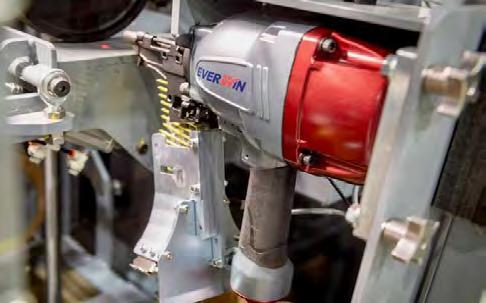

Developed by people who know well the mechanics, safety considerations and business aspects of wall panel production, Terminailer V.8 combines more enhancements & operator-friendly features than ever to take your productivity to the next level and beyond. Contact us to learn even more and to put the V.8 performance in motion at your facility.






or many professionals, career growth stalls not because of a lack of talent, but because of geography. Dead-end companies with no advancement paths don’t have to fight to keep people when employees limit their search to commuting distance. The truth is simple: if you want to break out of a stagnant career, relocation can be the most powerful tool you have.
I know firsthand. I’ve relocated more times than most would consider, often to advance my career or stay in the profession where I was most valuable. Each move came with challenges, but each one opened doors that staying put never could. That willingness to say yes became one of the biggest factors in my success.
Many of my relocations happened because a company leader asked, “Would you move here and fix this problem?” My answer was almost always yes. These weren’t just moves; they were promotions in disguise. They came with trust, responsibility, and the chance to prove myself. Saying yes didn’t just advance my career; it accelerated it.
Companies in lower-opportunity regions know many employees won’t leave, so they rarely create strong advancement paths or competitive pay. But once you’re willing to relocate, you’re no longer limited to what one city offers. The entire industry becomes your playing field.
Relocation takes resilience and adaptability. Employers notice when you’re willing to go where you’re needed. It signals that you’re serious about growth and confident in your ability to succeed anywhere.
Many candidates hesitate to relocate, often due to comfort zones, family ties, or insecurity about starting fresh. That fear is understandable, but it limits growth. Real experience comes from being where opportunities actually exist.

Don’t consider relocation without reward. It’s a strategic investment. It puts you in markets where your skills are valued and advancement is real. Often, it can even improve your quality of life.


If your career has plateaued, ask whether staying put is part of the problem. The best opportunities rarely come to you; you go to them. Relocation isn’t easy, but it is often the difference between rising and staying stuck.
If relocation might be in your future, let’s talk. I’ve moved for advancement and for survival, and I know how transformational it can be. I can help you understand how it could change your career and your life.






: September 14-18, 2026
Columbus, OH
February 24-26, 2026 June 9-11, 2026 December 8-10, 2026





2007 VIKING 16' X 12' SQUARING TABLE WITH SHEATHING BRIDGE
• 16' x 12' Squaring Table with Powered Width Adjustment & Powered Chain Conveyor
• Wall Panel Lengths up to 16', Wall Panel Heights from 4'-0" to 12'-2"
• Swing Gates at Both Ends of Squaring Table
• Automated Field & Edge Nailing Driving by Panel Pro Event Software & Your Programmed Nailing Patterns
• Simple Touchscreen Controls
• 2 Tool Carriages for Sheathing Nailing with Tilt Function for Seams
• 2 Paslode Nail Guns with High Load Coil Tray
• Auto Sheathing Bridge Return
• Includes 4 Pallets of Magnum Coil Nails (2 3/8 x .113)
• 480 Volt / 3 Phase
$29,900 FOB KS. Wasserman & Associates 800-382-0329
www.wasserman-associates.com

2022 Prairie Mechatronics 12' Portable Sheathing Bridge
• Programmable Fastener Spacing with PLC Touch Pad Entry
• One Touch Selection for Field or Seam Pattern
• Gun Tilt at Sheathing Seams
• Laser Pointer for Stud Location
• Sensors to Detect Sheathing
• Nail/Staple 8' Wall in 6 to 8 Seconds
• Quick Tool Changeout
• Weight: 150 Lbs
• Extra Gun Mounts & Spare Parts
• Excludes Nail or Staple Guns
• 120 Volt / 1 Phase
• Includes Custom Pneumatic Supports (adjustable from 35" to 47" above floor)
• 1 Available at $18,500 NOW $14,500 Each
& Associates








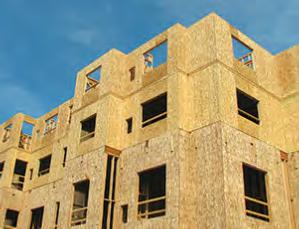
Pointer
Auto Return -Bridge Tilt at Sheathing Seams -Programmable Fastener Patterns -Pop-Up Skatewheel Conveyors
to 12’-5” Wall Heights
Squaring Stops
Floor Rails






• Wall Lengths to 20' / 6' to 12' Wall Heights
• Length Stops Position the Top & Bottom Plates for Nailing (as directed by Wall Panel Design Software output)
• Touch Screen Computer/Enclosure
• 4 Everwin PN80PAL Coil Feed Nail Guns
• Transfers Wall Panels from the Wall Extruder to the Squaring Table STUD EXTRUDER
• Nail C, L, U Sub-Assemblies and Double/Triple Studs
• Touch Screen Computer/Enclosure
• 2 Everwin PN80PAL Coil Feed Nail Guns

• Transfer Sub-Assemblies & Studs to the Wall Extruder Operator
• Squaring the Wall Panel before attaching Sheathing
Fidelity Leasing

The truss industry relies on 3rd party quality assurance services to provide random visits to review the plants Quality Assurance program along with their operations. If your plant needs to comply with the IRC, IBC and to those who depend on solid, experienced QA expertise, we ask you to consider selecting Timber Products Inspection, Inc. (TP) as your choice for 3rd party inspections.
Proudly serving the forest products industry for over 50 years, TP brings the expertise you need to ensure your business is successful. As a responsible partner, TP delivers to clients, employees, and the industries we serve the confidence to drive value through the effective use of our diverse professional team.
TP would like to welcome the following authorized agents to our inspection team, each of whom have many years of experience in the truss industry!
• Al Coffman


• Jean Hart • Curt Holler • Chuck Ray
Glenn Traylor • Elliot Wilson
If you have questions about how you can make this selection, please contact your authorized agent above or Glenn Traylor at 919-280-5905 or trusguy@gmail.com. https://www.tpinspection.com/ https://www.tpinspection.com/auditing-services/truss





Featuring precision Gen. 2 controls, this system squares and sheathes wall panels ranging up to 16′ in length and up to 12′ -3″ wall height with dimensional material from 2×4 through 2×10. This late-model system includes a servodriven bridge with joy-stick controlled motion on the operator’s riding platform. The single, large-coil capacity tool carriage travels across the wall frame inserting sheathing fasteners at the spacing set by the operator. The stitchers will automatically insert fasteners through the sheathing into the top and bottom plates at your chosen spacing during the auto-return process. The bridge has 9 programmable presets for fastener spacing. Other features include: Single Beam Bridge, top and bottom plate stitchers, Operator Platform with Windows industrial touchscreen, and joystick control. Squaring table features a squaring edge, footswitch & push-button controls for telescoping side and horizontal outfeed rollers. 120 PSI at 60 CFM air.120 volt AC electrical required. Utilizes large-coil 15º wire-collated nails. (No nail tools included).





Unlike software or construction projects where scope creep is often tied to timelines, in component manufacturing it usually shows up as added deliverables without added compensation. Here are some common examples:
• Extra trusses not on the original plans
Maybe the framer calls and says, “Can you throw in extra trusses to cover for the mechanical units that were just added?” It sounds simple, but those extras take time to design, produce, and deliver.
• Including parapets or other details in trusses when not specified
Parapets can add complexity to design and fabrication. If they weren’t in the original scope, you’re absorbing extra work without extra pay.
• Providing bracing material
Bracing material is usually assumed to be part of the loose lumber or framer’s responsibility, but some shops include it “to be helpful.” Helpful for them, costly for you.
• Offering engineering services beyond your role
If the building engineer should be handling certain calculations or certifications, don’t let that responsibility slide onto your desk without proper compensation.
Each of these examples might feel like a small concession, but they add up—especially when multiplied across dozens or hundreds of jobs.
From my experience, scope creep usually comes from good intentions. We want to keep customers happy. We want to be seen as helpful and responsive. Sometimes, we’re afraid that saying “no” will cost us future business. We’re afraid that if we say no to the customer our competitor might say yes and land the current project while gaining an inside track on future work.

Other times, it’s a communication issue. The salesperson promises something without checking with design. Or the designer assumes, “This is probably included,” without confirming.
And let’s be honest—sometimes it’s cultural. If your company has a history of “just throwing it in,” customers learn to expect it. Before long, those extras aren’t favors—they’re obligations.
The obvious cost is time. Every extra truss, every added calculation, every piece of bracing takes hours that weren’t budgeted. But the hidden costs are even bigger:
• Margin erosion: You’re giving away product and labor for free.
• Scheduling delays: Extra work pushes other jobs back.
• Designer burnout: Constant “little extras” create stress and frustration.

• Customer expectations: Once you start, it’s hard to stop. What was once a favor soon becomes the expected norm.
• De-valuing your products and services: If you are giving something away for free, why do you think your customer will attach any value to it?
In a future article, I will discuss my thoughts about how to prevent scope creep or at least get value for your willingness to go above and beyond.
If this touches a nerve with you, I’d love to hear your thoughts about the problem, or how you have dealt with scope creep.
If you want help finding that next perfect component designer or design job in Canada, please contact me. If your work is in the mass timber world anywhere in North America, I’d love to talk to you about connecting you to that next great job or candidate. You can reach me at secord@ thejobline.com, or 800-289-5627 ext. 2. I’m also happy to engage at: LinkedIn.com/in/geordiesecord www.thejobline.com







The Industry-Leading Manufacturer of Panelized Wall Panel & Floor Cassette Equipment.


The Framing Station with Locators is designed to hold the plates, subcomponents, and studs squarely in place for fastening to ensure quality panels every time. This model is ideal for companies that manufacture wood wall panels, such as off-site building manufacturers, manufactured home builders, and modular builders.
The Panels Plus panelized wall panel systems are more ergonomic than traditional construction methods and are developed at an ergonomic working height. This eliminates the need to continually kneel or hunch over to build wall panels – improving employee health and safety.



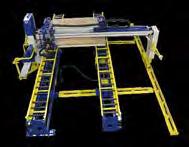


Stacking wall panels at the end of your production line can be a real labor-intensive and safety-challenging task. But it doesn’t have to be now, thanks to ProStack . This innovative wall panel stacker literally stacks from the bottom up, reducing awkward overhead lifting & placement, and the risk of head injury. Plus, ProStack frees up at least one worker to return more productively to your core task—building wall panels. Enhanced worker safety and productivity is what ProStack is all about.

By: DAK Automation

Setup and installation is easy too, without the need for complex training or disruption to workflow. So, free up your team to do what they do best, and you need to do most, and let ProStack stack your wall panels instead. Contact us to learn more today. For a ProStack demonstration video, scan the QR code below.

Island House
Hotel – a DoubleTree by Hilton
26650 Perdido Beach Blvd
Orange Beach, AL 36561
Hotel Deadline: April 6


Wednesday, 4/29
Golf Outing or Fishing Charter
Social Hour
Independent Dinner
Thursday, 4/30
Educational Sessions
Tour: Canfor (Axis, AL)
Hosted Dinner
Friday, 5/1
Educational Sessions
Roundtable
“I attended on the recommendation of a lumber supplier and the entire experience was valuable to me. I learned a lot – from the different presenters to the plant tour and just speaking with other participants.”
—Adam DeBiasio, United Lumber Home Hardware Building Center, Barrie, ON, Canada
“The Workshop puts you in front of the right people in one place to get answers to your questions about MSR, whatever they might be.”
—Ross Harter, Drexel Building Supply, Wrightstown, WI
“I enjoy the Workshop because of its intentional focus on creating opportunities for valuable face time. It’s a lot more intimate than other shows I attend during the year, which makes it a forum where you really get to know people and they get to know you.”
—Ben Evans, Birmingham International Forest Products, Birmingham, AL




• Model SRDE6.5 Stock Reel
• Model RS35-4-12" Roller Straightener
• Model FR5-12 Feed Roll
• Hydraulic Press System with Three Feature Dies (36" Feeds)
• 22' Powered Entry Conveyor
• M odel 420 STR Rollformer (10 Forming Stations)
• Roll Tooling
• Beck Automation Controller
• Citronix CIJ Ink Jet Printer
• 3 5/8" and 6" R-Stud
• Coil Inventory
• Refer ence Uploaded PDF for Additonal Details & Layout
The MSR Lumber Producers Council (MSRLPC) represents the interests of machine stress rated lumber producers in the manufacturing, marketing, promotion, utilization, and technical aspects of MSR and MEL lumber. Suppliers, customers, and professionals may join as Associate members to enjoy:
• Online Marketing
• Networking Opportunities
• Reliable Market Data
• Education
“There is no question that the MSR Lumber Producers Council meetings are worth your time to attend. The information you will receive from the guest speakers and members of the Council is unparalleled!”
—Sean Kelly,
Automated Products Inc.



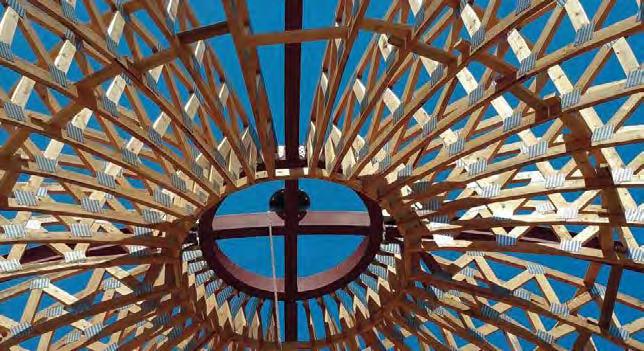


Saws
• Automated Component & Linear Saws (2010 & Newer)
• Monet DeSauw or TimberMill Manual Component Saws
• Floor Web Saws
• Spida (Apollo) Saws with Truss Automation
• Bunk Cutters
Truss Equipment
• Roller Gantry & Hydraulic Press Systems
• Finish Rollers
• Truss Stackers
• Floor Truss Machines
• Lumber Splicers
• Jack Tables
• C-Clamp Presses
Trucks & Trailers
• Stretch Roll-Off Trailers
• Go oseneck Roll-Off Trailers
Modular Equipment
• Pacific Automation or MiTek Mobile Home Press Contact Wasserman & Associates for a Fair Market Value Assessment of your Used Equipment
Operational, Needs Work, and Parts Only equipment will be considered!



The Single Beam Sheathing Station offers flexibility in fastener spacing both in the field, on seams, and while stitching the top and bottom plates. This Sheathing Station fastens sheathing to wood wall panels to ensure quality panels every time.
BENEFITS
• Ergonomic working height
• Flexibility with fastener spacing
• Fastens consistently and accurately
• Reduces the risk of “shiners”
Not producing the results you need or want – getting conflicting info about what to do and the equipment and the systems you may need? Before you Buy - Ask yourself –do I need a salesman or a guide?
If you want an Independent Guide that has your bottom-line results as the #1 priority, Call Me. If the salesman will do - we'll talk later...
Also, don't let Financing Deals influence your best solution. FitzGroup can arrange – Zero down & No payments for 90 Days!
Please be assured that your investment with any of our selected partners will not cost one penny more with the Fitzgerald Group as your purchasing contact. In addition, you will receive the full advantage of our Partner Relationships and Services NOT offered elsewhere.
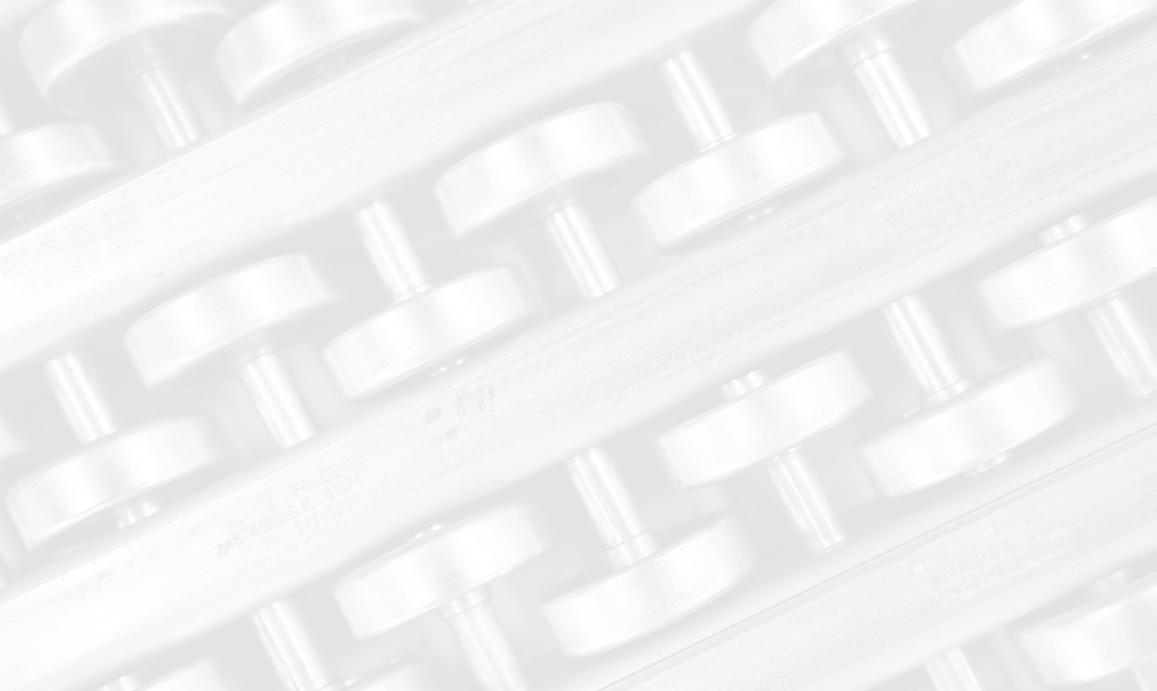





By Frank Woeste, Professor Emeritus, Virginia Tech
or the first time in U.S. model building code history, tornado design provisions for Risk Category III and IV buildings are given in the 2024 IBC. In fact, John ‘Buddy’ Showalter and Sandra Hyde have an excellent article on this, “2024 IBC Significant Structural Changes — Loads,” which was republished here in August 2024. The 2024 IBC Figure 1609.5 defines the tornado-prone region of the U.S. which is consistent with the NOAA map for the average annual number of tornadoes per state per year (Figure 1).

(https://www.spc.noaa.gov/wcm/)
The availability of the new codified tornado design provisions begs the question — when should the new provisions be implemented for larger occupancy public buildings?
Many states, known as “home rule states,” have municipalities that adopt and update their codes independently of the state. An estimate of the maximum number of years before the most recent IBC is adopted by a state is approximately 10 years (https://www.iccsafe.org/building-safety-journal/bsjtechnical/2024international-building-code-tornado-loads-and-community-based-implementation/#). The ordinary lag between the IBC edition and state adoption suggests many high occupancy or essential buildings (Category III and IV) will be built and placed in-service without the safety benefits stemming from tornado design load considerations over the next decade.

In the context of planning a new elementary school and occupancy greater than 250, a local registered design professional (RDP) and Component Manufacturer (CM) have an opportunity to provide community leadership by communicating the potential benefits of requiring tornado wind design per the 2024 IBC. Community input by an RDP and CM could be pivotable for the structural wind design, reducing the code-adoption gap (typically 3–10 years). A local General Contractor (GC) could provide leadership by serving on a planning committee and responding to constructionrelated questions. Through community leadership, relationships between RDP, CM, and GC may evolve and be beneficial for years.
The ubiquitous use of artificial intelligence (AI) in our lives prompted me to consider how it could be applied in this situation. Currently, AI can provide quick feedback on any subject, including ethical principles, in a constructive and friendly manner. Moreover, a question we pose can yield insight into issues that may not have occurred to us regarding our daily work, skills, and professional growth.
The key to a productive inquiry is a clear and limited question which forms the basis of internet research, interpretation, and compilation. Changing or adding one word can produce widely varying results, so questions must be stated concisely.
Based on the ASCE Code of Ethics and Virginia design professional regulations laws, I asked ChatGPT this question on October 14:
“What are the ethical implications of not disclosing or advising the Client as to availability of codified design provisions in the most recent IBC edition that improve building safety and resilience?”
The ChatGPT answer was:
“Short answer: failing to tell a client that newer, codified IBC provisions exist which would improve safety and resilience can violate core ethical duties — especially the duty to hold the public’s safety, health, and welfare paramount, to act competently, to disclose material information and alternatives, and to document informed client decisions. It can create ethical exposure under ASCE’s Code of Ethics and regulatory exposure under Virginia’s professional responsibility rules, and it increases legal and malpractice risk. (American Society of Civil Engineers+1)”
The ChatGPT response contained a staggering amount of information with weblinks for the sources.

A ChatGPT link to the entire response along with a checklist is available online, and it was divided into four major categories with bullets for each category. In the interest of space, only a select number of points are excerpted here as follows:
1. Documentation, seal, and responsibility.
In Virginia affixing a stamp/seal indicates the professional has exercised direct control and is responsible for the sealed documents. If an engineer seals documents while knowingly omitting available code-based safety improvements (or failing to advise the client), that raises both ethical and regulatory exposure. (Prince William County Government)
• Liability / malpractice risk — omission of known safer/code-compliant options can be evidence of negligent practice in civil suits.
When nondisclosure is especially problematic
• The newer IBC provisions materially increase life-safety or disaster resilience (e.g., seismic, flood, fire, egress) or change required design paths.
• The owner’s objectives include safety, resilience, or seeking code upgrades.
1. Proactively identify relevant code changes — compare the project’s governing edition with newer IBC editions for materially different provisions affecting safety/resilience.
2. Disclose to the client, in writing, the existence and effect of those provisions — explain benefits, performance differences, cost/schedule impacts, and whether the jurisdiction will accept or require the newer provisions. (See sample language [in full response].)
3. Document the client’s informed decision — get written direction (email or signed memo) if the client elects not to adopt newer provisions. This both protects the client and documents your professional advice.
4. Amend scope/contract if the client requests adoption — update fee/schedule and obtain a new authorization.
5. If public safety is at risk, escalate — if the client refuses to take a safety-improving action that you reasonably believe will cause imminent harm, follow the ASCE/NSPE guidance on withdrawal or notification of appropriate authorities (and document everything). (American Society of Civil Engineers+1)

Regarding the issue of an adopted building code in a jurisdiction versus an update that is included in a later IBC edition, a general practice might be to follow the advice of the acronym “ADD” — Advise the Client of relevant code updates, Discuss with the Client, and D ocument the Client’s decisions. By learning about the ethical and legal issues that were summarized from the AI inquiry, the RDP with input from their legal counsel should be better prepared to identify potential ethical and legal issues that could be involved for different project types in a specific state. (Note, the ChatGPT information here is specific to Virginia and analyses for other states will differ in the details and professional references.)

Of course, any information abstracted from an AI platform must be verified and/or validated before relying on it. In wood construction, information can be verified by codes and standards available from authoritative sources such as ANSI, APA, AWC, AWPA, ICC, NIST, and TPI. Validation is more complicated, requiring proof (concrete evidence) the information is correct using other trusted sources. For example, 50 years ago the Purdue Plane Structures Analyzer (PPSA) was relied on by the truss industry for verifying the correct truss member forces (axial, moment, and shear) and design analyses (TPI) when truss industry software was being updated. During the same time frame, metal-plated connections were tested in the laboratory to establish the axial stiffness and rotational behavior of the connections (model validation).
One way to explore the power of AI (or its limitations) is to ask a question when you already know the correct answer. For example, try: Has ANSI/TPI 1-2014 been updated to include new truss design loads? In doing so, the program should provide links that were used in arriving at the response. If you receive a nonsensical response, then reexamine your question and revise it accordingly.
The issue of tornado loads considered in this article provides an excellent example of the evolving nature of our code development process as well as how we can play a more substantial role in the implementation of pending code changes. Especially when considered in light of potential ethical consequences, embracing the ADD approach when interacting with a client could help build a lasting relationship while minimizing risk exposure to both the client and yourself.







Inspired by ten years of intensive field experience and the ample and detailed feedback of numerous customers, we’re pleased to introduce the most advanced, most enhanced and high-performance Terminailer yet - Terminailer V.8. Drawing on invaluable time in the trenches closely evaluating Terminailer’s performance under varying conditions, our engineers have incorporated critical learning and insight to enhance simplicity, performance and operator control. Just part of what V.8 offers includes:
•Vastly enhanced operator control for even greater productivity
•A redesigned nail-feed supplying EverWin PN90-PAL industrial nail guns
•Simplified pneumatics featuring direct air-supply to all six nail guns
•Even more sub-component profiles for wall design flexibility
•Rugged durability with pharmaceutical grade assembly


Developed by people who know well the mechanics, safety considerations and business aspects of wall panel production, Terminailer V.8 combines more enhancements & operator-friendly features than ever to take your productivity to the next level and beyond. Contact us to learn even more and to put the V.8 performance in motion at your facility.










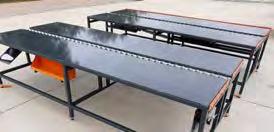
New Component Table with Skatewheel Conveyors
Lift & Extend Skatewheel Conveyors. 10' x 10' Work Area with Squaring Lip. Gun Holster & Nail Tray.
$13,900 FOB NE
Wasserman & Associates
800-382-0329
www.wasserman-associates.com

• 8' to 12' Wall
• 1,000 Lb Capacity
• Weight: 120 Lbs
• Excludes: Electric Hoist & Freestanding Bridge Crane
$1,950 FOB NE
Wasserman & Associates 800-382-0329
www.wasserman-associates.com





Consider Panels Plus wall panel assembly equipment for manufacturers of wood or steel wall panels, floor-panels, and related framing components. Panels Plus is an employee owned, ISO certified, manufacturing company that builds state-of-the-art equipment featuring durable construction, with fit and finish second to none in the structural building component industry. The referenced base framing table allows you to assemble from 7-12 foot wall heights, at industry standard 16 foot lengths, at a working height of 29 to 32 inches. This framer design includes controls at each end of table, squaring stops and pneumatic clamping for consistent wall panel quality. Frames 2x4 or 2 x 6 walls, with color-coded, steel stud locators at 16 and 24 inches O.C. spacing. Includes pop-up skate wheels for easy transfer of completed wall frame. Framing table can be configured to receive wall framing light bars, other options include custom buildable wall heights, lengths and auto-indexing of optional 2 or 3 tool carriages.
Additionally from Panels Plus are sheathing tables with features that include foot pedal control at squaring end of table, with squaring stops, roller conveyors at both sides, single pendant controls for bridge, tool spacing at 6 inch centers with 3 inch bridge shift for offset nailing. Tool bridges can accommodate from 2 x 4 to 2 x 8 walls, with seam tilt being standard equipment Panels Plus Tool Bridges are available with single beam or dual beam design for two different tool mounts on one bridge.
Squaring stations, sub-component tables, conveyors and panel lifts are also available to complete the configuration of the wall panel assembly line. Price includes factory installation and training. 50 CFM at 120 psi air. 120 or 230 volt, 1 phase electrical.
765-751-9990


Solving the problem of missed fasteners on exterior sheathing remains one of the primary reasons for call back charges and exceptions noted during jobsite building inspections. Clearly finding and resolving missed fasteners or “shiners” becomes mission critical before a sheathed wall panel leaves the production line. Our shop-proven, tilting conveyor makes the process safe, fast, and labor efficient. The ProStack tilt in-feed safely lifts wall segments to 45º in 5 seconds for inspection and on to 75º for easy to reach repairs. This tilt system is also excellent for installing blocking , windows, and other details in your wall panel segments. More information click here.
72,665 FOB ND


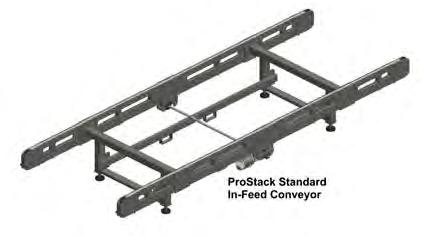
$37,525 FOB ND
ProStack powered in-feed conveyor was engineered to deliver wall panel segments at a matched speed and height into the ProStack automated wall panel stacker. Built for smooth operation and assembled with laser cut, powder-coated finish steel. Base model conveys wall panel segments up to 12’ in height and up to 16’ in length for wall segments up to 1,600 lbs. Extended length systems come in standard 20′ and 24’ length capacity. All models come with adjustable working heights and variable conveyor speeds.
Powered in-feed conveyor section, synchronized chain drive under top and bottom plate for open access, 5-HP, 208v, 3Ph power. Adjustable working height from 28” to 34”. 16′ length capacity.
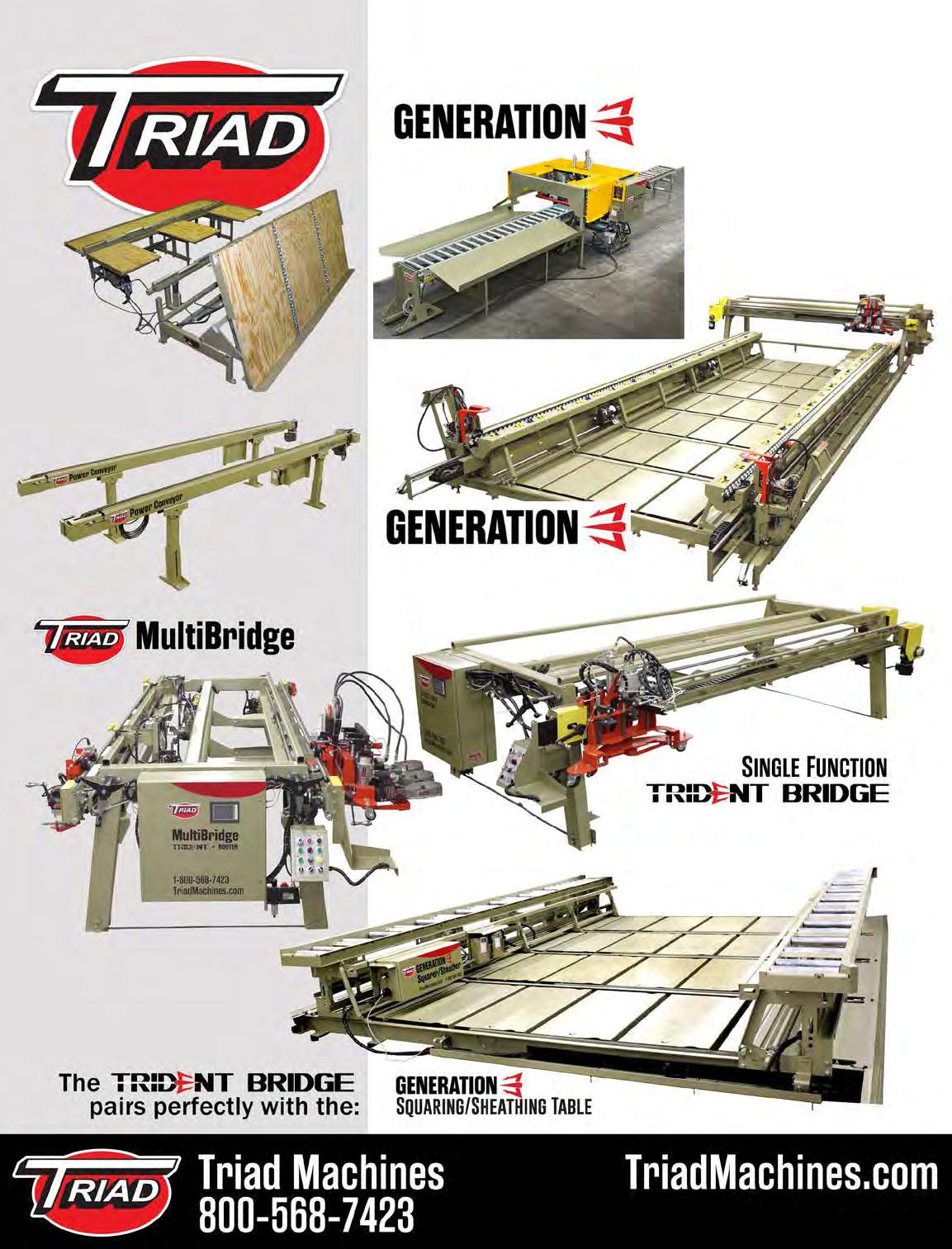










CT Darnell Construction’s design-build approach
• Integrated storage and optimized SKU management
With nearly 40 years of LBM experience and more than 4,500 completed projects, we build turnkey truss facilities designed to perform from day one.


By Jay P. Jones, P.E. Executive Director, TPI
In early November, the Truss Plate Institute (TPI) was proud to announce the launch of our two new ANSI standards projects: TPI 2 – National Standard for Testing Metal Plate Connected Wood Trusses and TPI 3 – National Design Standard for Bracing Metal Plate Connected Wood Trusses. These projects mark an important milestone in TPI’s ongoing mission to maintain the industry on a sound engineering basis.
The Truss Plate Institute (TPI) is the nationally recognized leader in MPC wood truss engineering standards, and we are pleased to expand our work for this industry. Both projects have been approved through the ANSI Project Initiation Notification System (PINS), and each committee has been carefully formed to ensure a balanced representation of Users, Producers, and General Interest members.
The new TPI 2 standard will establish procedures for testing and evaluating MPC wood trusses for four distinct objectives:
(1) determining truss stiffness,
(2) testing for design confirmation,
(3) establishing design capacities, and
(4) assessing deflection recovery performance.
The standard will outline methods for conducting each type of test and provide guidance on interpreting and applying the results to support design validation, product evaluation, and quality assurance.

The new TPI 3 standard will establish design requirements and methods for both permanent and temporary bracing of MPC wood trusses. It will build upon and ultimately replace the current industry standard known as DSB – National Design Standard for Bracing Metal Plate Connected Wood Trusses. The TPI 3 standard will focus on engineering-based bracing design practices applicable to building designers, truss engineers, and structural engineers of record.

Thank you to everyone who volunteered to serve! The committees consist of the following User, Producer, and General Interest members.
Chair: Paul Bove, PE, PhD – Simpson Strong-Tie
Members: Ken Watters, PE, SE; Norman Scheel, PE, SE; Junaidie Budiman, PE; Ed Robbins, PE; Ahmadi Mohammad, PE; Daniel Rybicki, EIT; Stuart Lewis, PE; Matt Vinson, PE; Mark Crawford, PE, SE; Thomas Craig, PE; David Baxter, PE, SE; Mathew Samuels, MBA; Andrew Johnson, PE; Levi Sorrill; Darren Conrad, PE; John Teems; Glenn Traylor; Greg Greenlee, PE; Kathleen Wills Rittenburg, PE; Michael Stoner, PhD.
Chair: Marvin Strzyzewski, PE – MiTek
Members: Ken Watters, PE, SE; Norman Scheel, PE, SE; Thomas Craig, PE; Ed Robbins, PE; John Gruber, PE, SE, PhD; Mohammad Ahmadi, PE; Roger Hayes, EIT; Howard Gauger; Tim Noonan; Art Hernandez, PE; Timothy Riegel, PE; Mathew Samuels, MBA; Andrew Johnson, PE; Darren Conrad, PE; John Teems; Matt Vinson, PE; Glenn Traylor; Greg Greenlee, PE; Stuart Lewis, PE; Michael Stoner, PhD.
The formation of these balanced committees ensures that key perspectives in the truss industry are represented throughout the standards development process, resulting in documents that reflect true industry consensus.
The development of ANSI consensus standards is a critical part of maintaining transparency and fairness in the creation of technical documents that affect the building industry. By adhering to ANSI’s rigorous process, TPI ensures that every standard is developed through an open, balanced, and consensus-based process where all viewpoints are considered and addressed. This not only strengthens industry confidence in the resulting standards but also facilitates their adoption into building codes, as ANSI-accredited standards are widely recognized and respected by code bodies, regulators, and design professionals alike.
Both committees kicked off their work the second week of November, initiating what is expected to be a 24-month development process for each standard. Upon completion, TPI anticipates publishing two new standards that will play a significant role in maintaining the industry on a sound engineering basis.


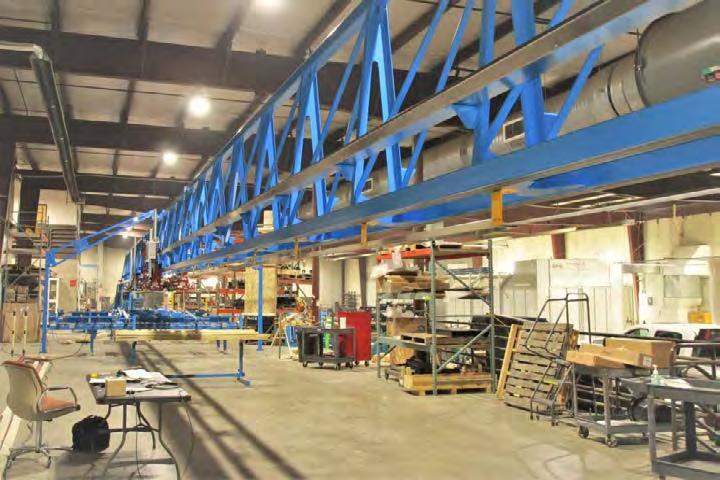




• Pop-up Skatewheel Conveyor
• Powered Height Adjustment (6'-11" to 12'-5" wall heights)
• Fixed Squaring Stops
• Excludes Tool Dollies
• 110 Volt / 20 Amps
• Add $6,600 for Stud Locators at 16" & 24" O.C.
• Add $3,500 for 1 Pair of 15' Skatewheel Conveyor with Stands
• Ad d $13,900 for Sub-Component Layup Tables with Pop-up Skatewheel Conveyors
• E QUIPMENT FINANCING available from SLS Financial Services
$38,750 FOB NE



Reduced labor, increased safety, the benefits just keep stacking up. Stacking wall panels at the end of your production line can be a real labor-intensive and safety-challenging task. But it doesn’t have to be now, thanks to ProStack. This innovative wall panel stacker literally stacks from the bottom up, reducing awkward overhead lifting & placement, and the risk of head injury. Plus, ProStack frees up at least one worker to return more productively to your core task—building wall panels. Enhanced worker safety and productivity is what ProStack is all about.
Developed for commercial wall panel production facilities this is the remarkable ProStack, fully automated wall panel stacker. The ProStackrelieves your build team from creating a stack of wall panels and keeps them building walls instead. Stacks 2×4 through 2×8 walls up to 20′ in length and up to 12′ in height (taller by special order). The ProStack will automatically center or left or right justify each layer including multiple wall segments on the same layer. For ease of loading in your yard or on the build site, fork pockets are created in two ways: The operator can attach blocking up to 5″ tall to the last wall of the stack prior to entering the stacker, or two shorter walls can be spread apart prior to the second to last row of the stacker. Designed without any overhead frame or apparatus, so no crane inspections are required. The ProStack is “event driven”, so there is no need to read a file. Setup and installation is easy too, without the need for complex training or disruption to workflow. So free up your team to do what they do best, and you need to do most, and let ProStack stack your wall panels instead. ProStack can even operate with your existing powered conveyors or select our optional matching conveyors (see the video shown below). 208 volt, 3 phase, 43 Amp base model electrical required. No air required. Footprint is 26′-5″L x 19′-3″W. For additional information Click Here

Wall Panel Lift
* 8’- 12’ Wall Height
* 1,000 LB Capacity
* Easy Adjustment
* Hoist and Crane Sold Separate
Handle Bar Router
* 8’ - 12’ Wall Height
* 2 Person Operation
* 3 ¼ hp Production Router
* 120 Volt /1 Phase/15 Amp
Lay-Up Tables
* 10’ x 10’ Working Area
* Lift & Extend Rollers
* Squaring Lip
* Nail Tray
Skate Rollers
* 15’ Standard Length
* Adjustable Height
* Sturdy Stands
* Custom Lengths Available

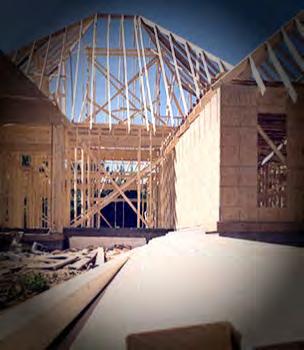
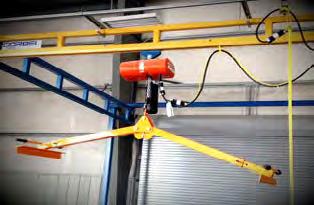




$13,900.00

$3,500.00 $3,000.00 $1,950.00








2022 Peterbilt 579 S/A Day Cab Truck #1
Paccar MX-13 / 12.9L / 405 HP Engine
249,300 Miles / 5,566 Engine Hours
Auto Transmission Engine Brake
12,000 Lb Front Axle / 22,700 Lb Rear Axle / 34,700 Lb GVWR
Air Trac Air Ride Suspension
148 Inch Wheelbase
Dual Fuel Tanks
Tires are Very Good
$35,000 FOB PA
Wasserman & Associates 800-382-0329
www.wasserman-associates.com

1997 Lakeside JDH Trussmaster
36-51 ft Stretch Trailer (OR-1)
1997 Lakeside JDH Trussmaster 36′51′ – Lakeside trailer features 5th-wheel connection, sliding tandem axle, locking rollers and hydraulic lift neck. Current DOT inspection September 2023. 50% brakes and 50% tire tread remains. 26,000 GVWR
$28,997 NOW $21,997 FOB MO Wood Tech Systems
765-751-9990
www.woodtechsystems.com

2005 Rayfab 32′ Roll Off Trailer
32′ Rayfab trailer features 5th wheel connection, locking rollers, straps, a 10,000 lb axle, electric brakes, spring suspension, and 2 speed landing gear. Manufacturer states the lightweight trailer is ideal for oneton trucks. Trailer weighs approximately 5,420 lbs. DOT expired February 2025.
$7,990 FOB OH Wood Tech Systems 765-751-9990 www.woodtechsystems.com

2021 Big John Extendable Pole Truss Trailer
Extendable pole trailer
Used for 60' span roof trusses, peak down
Retracted length - 35'. O.A.
Extended length - 45' O.A.
Adjustable 2' Increments
Outer tube frame - 8" square tube
Inner tube frame - 6" square tube
Axles - (2) 25,000 LB Capacity Each
Axle width -102"
Anti-lock brake system
Parking brakes on both axles
Wheels - 10 stud outboard drums
Tires - 11 R 22.5 radials
Rims - 22.5 steel unimount (8) alum wheels
Suspension - Watson air ride with dump valve
Landing gear - 2 speed
Bumper - standard
Lights - DOT Specs, LED Package (2) truss stands (4) winches with straps
$29,900 NOW $17,500 FOB SC
Wasserman & Associates
800-382-0329
www.wasserman-associates.com







2019 Landoll 48′ Roll-off Trailer with Anti-lock Brake System (ABS), sliding tandem axles, spring suspension, rollers: Galvanized 6″ x 95 5/8″ tube, Rear 15 rollers @ 24″ O.C., front 6 rollers @ 36″ O.C. Hydraulic Lift neck with a Honda 13 h.p generator and onboard battery, Roller Locks: 2-Zone (front and rear) Air-powered, Controls: Mounted roadside at landing gear, galvanized 15″ dia. ground rollers, LED lighting, Straps: Sliding winches complete with straps to curb-side “J-hooks”, Air-powered fold-away Galvanized under-ride bumper, Mud Flaps behind tandem. Black powder-coated finish. Current DOT inspection as of 24 June ’25.
By MiTek Staff

test lab is a building product manufacturer’s one-stop shop for engineering, manufacturing quality, and performance verification. Whether supporting new product development, regulatory submissions, or customer assurance testing, a test lab must have the right tools to get the job done. Test labs ensure that building products and equipment conform to industry standards and safety requirements. Virtually every product and component used in the industry undergoes extensive testing programs to ensure durability and reliability under real-world conditions. That is where the test lab operations truly excel.
Modern test labs are equipped with numerous test machines and devices to ensure quality, accurate, and repeatable test data is produced based on relevant codes and standards. This test equipment is a large investment for an organization, but a necessary one for industry success.
Universal Test Machines (UTMs) are the backbone for many test labs, as they can be equipped for a wide range of product testing. UTMs are the most common test machines in a test lab due to their ability to complete a variety of different tests, including tensile, compression, bend, and shear testing. UTMs can be tailored to fit many different applications, and fixturing can be purchased or custom-made to fit the specific requirements of the testin-g profile.
UTMs are very useful for smaller-scale tests, such as building product, componentlevel, or small assembly testing, but when larger components or systems need to be tested, a custom-built test frame may be the only option. Testing programs involving multiple actuators or complex geometry may require something that cannot be accommodated with a UTM.



Along with the different types of test frames, different transducers or instruments can be used to produce meaningful data for the test lab. Basic transducers for a typical structural component testing lab include:
● Load Cells: Measures the force or applied load of the desired component. Many times, a load cell converts an electrical signal from strain gauges into force through calibration.
● Displacement Transducers: Tracks the movement of the device or component (usually under load). A string potentiometer is a common displacement transducer that will extend or retract from a spring-loaded spool to measure linear position.
● Strain Gauges: Converts the specimen’s physical deformation or strain from the measurement of electrical resistance of the transducer.
All transducers must remain accurate to provide reliable test data. Each device has a specific certification period, and they must be calibrated at certain time intervals (usually every 1-2 years). The same is true for the UTMs, as the whole system must be calibrated for test results to be reliable.
Courtesy of Mohamed, Nayera & Farghaly, Ahmed & Benmokrane, Brahim & Neale, Kenneth. (2013). Flexure and Shear Deformation of GFRP-Reinforced Shear Walls. Journal of Composites for Construction. 18. 10.1061/(ASCE)CC.1943-5614.0000444.


In a test lab aiming to provide detailed test data for building product approvals, the relevant testing standard is the instruction manual or qualification roadmap. Test standards from ASTM, ANSI, ISO, etc., provide the necessary information that the test lab must follow to ensure all products are evaluated in a similar manner for the correct application.
ANSI/TPI 1 is the national design standard for metal plate-connected wood truss construction. This standard provides the guidelines for evaluating the lateral resistance, shear, and tensile strength of metal connector plates for wood truss construction. Not only does it provide standards for evaluating connector plate performance, but it also includes the quality control criteria for manufacturing trusses with metal plate connectors, design procedures and considerations, and manufacturing metal connector plates in general.

Another common acceptance criteria utilized in a structural component test laboratory is ICCES AC13 (Acceptance Criteria for Joist Hangers and Similar Devices) in conjunction with ASTM D7147 (Standard Specification for Testing and Establishing Allowable Loads of Joist Hangers). These documents contain the testing protocols for Joist Hangers, but also similar builder products such as post bases, hurricane ties, and framing angles. ICC-ES AC13 and ASTM D7147 also provide the loading protocol, specimen geometry, and even how to establish allowable loads through calculation based on test data.
In the test lab, consistency and reliability are paramount to performance evaluations. It is in the best interest of the laboratory to develop standardized sample building procedures to minimize variance. This includes creating build sheets that detail dimensions, materials, fastener information, and installation methods. The ability to create custom jigging or alignment fixtures is a great addition to any test lab capability that can decrease sample-to-sample variance. Lastly, detailed documentation is essential for both current and future project success. This includes details such as creating specimen IDs for traceability, storing test information in an organized database, and documenting any abnormalities during sample build and testing.


A testing environment that frequently conducts destructive tests of materials must have a detailed safety protocol in place. Basic safety procedures include Personal Protective Equipment (PPE) such as safety glasses, safety-toe shoes, and cut-resistant gloves in designated testing areas. Safety procedures during active tests involve marking out/blocking restricted zones and setting up fragmentation shields to protect against unplanned material or test specimen failure. Additionally, testing machines and programs are equipped with many safety features, such as limit switches, emergency stops, and routine maintenance to ensure smooth operation. A proactive approach to safety utilizes risk assessment that will evaluate the operation of each project to identify potential risks and streamline mitigation strategies.
The test lab plays a critical role in engineered product success, regulatory compliance, and satisfying customer requests. Daily operations involve detailed standard reviews, execution of engineered test plans, and the use of advanced testing equipment. Test engineers and lab technicians are skilled in mechanical testing and fixturing but also possess deep knowledge of applicable codes and standards. Through expertise and diligence, the test lab ensures building components remain safe, reliable, and effective.
For additional information, or if you have questions, please contact the MiTek Engineering department.




• Sources for MSR Lumber
Filter by species, grade and dimension to locate products from MSRLPC members.
• Educational Resources
Find helpful information for current and potential MSR lumber users.
• NEW! Design Values
Comparison Tool
Compare MSR lumber reference design values with visually graded dimensional lumber by species. The MSRLPC website is a

to make informed purchasing decisions as well as those exploring design optimization with MSR Lumber. Check it out!

1997 Lakeside JDH Trussmaster 48-ft rolloff trailer features 5th-wheel connection, sliding tandem axle, locking split rollers, and hydraulic lift neck. Current DOT inspection valid through 1 October 2025. 60% brakes remaining. Six tires at 50% tread remaining and two tires at 40% tread remaining. 68,000 GVWR. $11,997 NOW $8,9978 FOB IA As-is, Where-is Wood Tech Systems 765-751-9990 www.woodtechsystems.com

• GVWR: 40,000 Lbs
• Dual Axle, Dual Wheel
• Hydrauli c Tilt (New battery and hydraulic pump in 2025)
• 12,000 Lb Heavy Duty Winch
• Lighty used over the last 2 years $23,900 FOB UT Wasserman & Associates 800-382-0329 www.wasserman-associates.com



2014 Precision 48′ Roll Off Trailer (R157)
2014 Precision 48′ roll off trailer features tandem axle, fifth wheel connection, locking rollers, ABS brakes, and hydraulic lift neck. Estimated 50% tire tread remaining. $17,990 FOB WI Wood Tech Systems 765-751-9990
www.woodtechsystems.com

1990 Wabash 48' - 77' Roll off trailer
• Certified for highway
• 70% rubber
• New 5th wheel
• Newer undercarriage
• New rear bumper
• New wiring
• Annual inspection report completed on 9/19/24 - good for 1 year. Asking $19,500 NOW $14,500 M.P.B. Builders 920-748-2601 www.mpbbuilders.com

2021 Big John Extendable Truss Pole Trailer
2021 Big John peak down extendable pole trailer. Transports up to 60′ peak down trusses with a retracted length of 35 ft. O.A., and an extended length of 45 ft. O.A. Adjustable in up to 2 ft. increments. Outer tube frame is 8″ sq. tub and inner frame is 6″ sq. tub. Features 2 axles with anti-lock brake system and parking brakes on both axles. Trailer features air ride suspension with dump valve and 2 speed landing gear. $23,890 NOW $17,490 FOB NC Wood Tech Systems 765-751-9990
www.woodtechsystems.com






Component manufacturers have a duty to warn installers about the safety risks associated with the handling and installation of trusses and components.

To help component manufacturers in their duty to warn, SBCA has created the Component Warning Notice (CWN) and corresponding website: componentwarningnotice.com.
In addition to the Component Warning Notice Sheet being included in every standard SBCA Jobsite Package, SBCA has created a Component Warning Notice Tag to direct installers to the important information contained on the website.

Unlike other SBCA tags, which are typically applied to trusses and components under certain circumstances, the CWN Tag is intended for application on every truss and component sent to a jobsite. Learn more about the Component Warning Notice at sbcacomponents.com/CWN Visit pubs.sbcacomponents.com to order today.


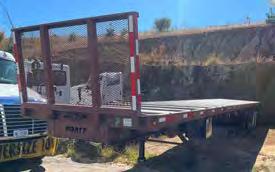
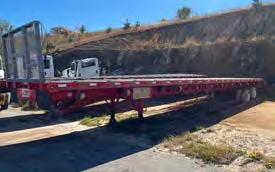
www.eidemachinery.com/equipment/




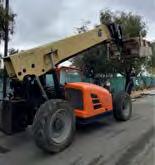
need to be replaced
$12,500 Each or $24,000 for Both Trailers Wasserman & Associates 800-382-0329 www.wasserman-associates.com

2017 Galvanized 48-70 Stretch Roll-Off
2017 A-Nu-Prospect 48’/70′ Roll-Off
Trailer: Fully galvanized chassis, with Antilock Brake System (ABS), sliding tandem axles, air-controlled suspension release for unloading, 11 gauge galvanized floor plate. Rollers: galvanized 5″ x 3/16″ x 98 3/4″ tube complete with 1/4″ axles and 2-bolt flange bearings, 24″ O.C., mounted 3/4″ above the outer rail, hydraulic lift neck with a 12 volt DC pump, onboard battery. Roller Locks: Air-powered, 8 position ratchet style for quick and hands-free release. Controls: Mounted roadside at landing gear. Ground Rollers: Two 14″ x 3/8″ wall complete with 1 1/2″ axles. Lights: LED, galvanized head rack. Straps: Sliding winches complete with straps and “D rings” to attach to curbside “J-hooks”. Fold-away fixed bumper, Mud flaps behind tandem. Current DOT inspection.
$62,534 FOB MD Wood Tech Systems 765-751-9990 www.woodtechsystems.com


2002 JDH Trussmaster 36'-51' Stretch Roll-Off Trailer
• Hydraulic Lift
• Sliding Tandems
• Spring Suspension
• Roller Locks & Roller Brakes
• Headache Rack
• Tires are 50% or Better $19,000 FOB CO Wasserman & Associates 800-382-0329 www.wasserman-associates.com


Lighting | 11.4 Ton Self Contained Power Unit | (1) Heachache Rack
$27,500 NOW $25,500 Eide Machinery Sales, Inc. 612-521-9193
www.eidemachinery.com/equipment/ trailers


1990 Wabash 48'-68' Stretch Roll-Off Trailer
• Slanted Profile
• Hydraulic D ovetail (No Hydraulic Front End)
• Fixed Tandems
• Roller Locks
• Painted, New Brakes and New Roller Bearings in 2019
• Last Used in 2020 $8,750 NOW $7,000 FOB ND Wasserman & Associates 800-382-0329
www.wasserman-associates.com



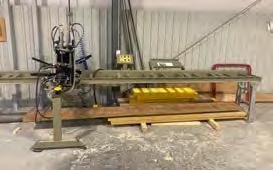
2023 Triad Flow Through Component Nailer
• Assembles Trimmers, Partition Leads, Corners, Headers, Ells, Jack Studs
• Length Capacity: 10'-2"
• Clamp Opening: 3" x 3" to 12" x 12"
• Vertical & Horizontal Clamping Pressure: 300 Lbs at 100 PSI
• Foot Pedal Control
• On/Off Switches for Each Nail Gun
• Pop-Up Stop
• Nail Trays
• 10' Infeed & 10' Outfeed Roller Conveyor with Stands
• Excludes Nail Guns
$19,900 FOB ON Wasserman & Associates 800-382-0329 www.wasserman-associates.com Price Reduction!

• Foot Pedal Control
• 2 Pairs available at $7,500 NOW $6,500 Each Wasserman & Associates 800-382-0329
www.wasserman-associates.com
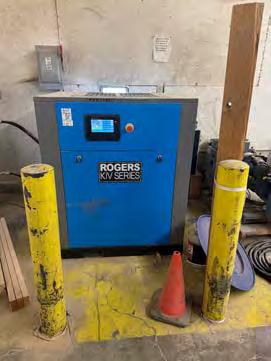
2006 Rogers 15 HP Compressor
2006 Rogers 15 HP rotary screw compressor model RMC-KIV-15-100, reconditioned in 2021. 125 PSI, 8,100 hours. 460 volt, 3 phase electrical required.
$16,997 FOB OR Wood Tech Systems
765-751-9990
www.woodtechsystems.com

Champion Valve Plus Compressor
Champion Valve Plus – Reciprocating twostage compressor, model 7.5–V80E, with Eaton controls, 7.5 HP motor, 80 gal vertical tank, rated for 22 cfm @ 175 PSI. 208/230/ 460 volt, 3 phase electrical required.
$2,495 FOB AZ Wood Tech Systems
765-751-9990
www.woodtechsystems.com

2023 Atlas Copco type G7FF rotary screw compressor with internal dryer and external tank. Compressor capacity is 145 PSI, has a 10 HP motor, external air tank includes bleed valve and manual output valve. System comes contained in a custom shipping container with locking entry door, thermostat controlled electric fans, throughwall induction vent grills, interior lighting, electrical panel and utilities for a second compressor. Container size is 8′ width x 10′-6″ long x 8′-8″ height. Hours as of 19 September ’24 were 986. 480 volt, 3 phase / 120VAC electrical required.
$34,490 FOB AZ Wood Tech Systems 765-751-9990 www.woodtechsystems.com

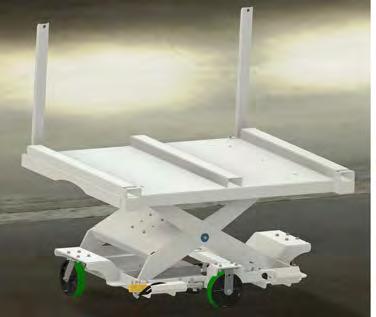
• 60" x 72" Base
• 10" Fixed & Swivel Casters
• 2 Vertical Standards and Cart Blocking for Fork Lift Loading
• EZ-Set Pneumatic Height Setting
• Auto Indexing (as material is removed)
• 6,000 Lb Capacity
• W hite Powder Coat Finish (Optional Custom Colors)
• Made in the USA with USA Steel
$9,520 FOB SD


• Assembles Trimmers, Jacks, L’s, Channels & Headers
• 2x4 and 2x6 Capacity
• Remote Fire & 3-Way Clamping
• Staggered or Straight Line Nail Pattern
• Squaring Stop
• Foot Pedal Control
• Reserve Air Tank
• 5’ Infeed & Outfeed Roller Conveyor $29,800 FOB NE


By Carolyn O’Hearn
ayout programs do a great job with truss-to-truss connectivity and load transfer. But the process is not foolproof and sometimes, loads need to be adjusted. Some applications don’t give you the freedom to make changes to loads after a truss has been analyzed. But Truss Studio does. With our software, you have the power to decide when and how loads are transferred. And if you need to adjust a load, it’s a simple process.
Load transfer takes the reaction information from a “child” component support location and applies that as a point load on a girder “parent” component, including all constituent parts for Roof Live, Dead, Live, Snow, Wind and Seismic values for correct factored application in required load combinations.
There are many ways you can control loads in Truss Studio.
You can do the following with Load Transfer point loads:
• Enable/disable individual, groups, or all loads.
• Disable an individual load by selecting the load, checking the Enable box, and saving the load.
• Disable a group of loads by selecting with Ctrl-click or Ctrlshift-click, checking the Enable box, and saving the load.
• When loads are disabled, they can easily be re-enabled simply by checking the Enable checkbox –no information is lost (just turned off), allowing loads to be turned back on quickly.


• To disable all loads at once, simply uncheck the Load Transfer check box on the main Component Loading dialog.
You can also easily select a load or group of loads and copy them with the Copy button. Copied loads allow you to:
• Edit the location of the load (TC, BC, or Web).
• Edit the x-location of the load (and y-location for web loads).
• Edit the attached face of the girder (front or back) and the applied angle.
• Delete a load with the Delete option.
With Truss Studio loading, you are always in control!


Contact your Simpson Strong-Tie Representative or email CSHelp@strongtie.com for more information. Copyright © 2025 Simpson Strong-Tie Company Inc. All Rights Reserved






Electrical Supply: 110 VAC
Motor: 1/4 HP, 110 VAC, Linear Actuator
Highly Accurate: +/- .010 Inches
Stop Rail: 2 x 4 x 1/4 Aluminum Extrusion
Stops: Jig Bored Steel
Stop Blocks: Machine Billet Aluminum

Internal Components: Hardened, Ground and Polished Steel and Billet Aluminum
Dimensions:
Length: 5 feet (60”) to 60 feet (720”)
Height: 12 inches
Depth: 12 inches
If you are looking for the fastest, mist consistent way to measure and cut your product, then the Hain Measuring System (MEA) is your answer. The MEA changes from one length t any length instantly, up to 60’, without changing the operator’s position on the line. It is also highly accurate (+- .010) and quickly moves from one length to the next in seconds. The MEA is designed for quick and easy setup and is simple to use. Even a first time user will be productive with little or no training required. It can adapt to any saw and can be mounted to any surface so that you can integrate the MEA with your existing setup. The MEA is versatile allowing “left” or “right” handed operation and measurement in “feet and inches” or “inches” depending on your preference. The MEA is also available in a “Skid Mounted” version.

6 Chain Live Deck
6 Chain Live Deck
20’ Long x 17’ Wide
Foot Pedal Control
240 Volt / 3 Phase
$9,900 FOB ND
Wasserman & Associates
800-382-0329
www.wasserman-associates.com

New Monet Power Deck Infeed Decks
Heavy-duty, 5-chain feed system to bring material to the infeed of the component saw.
16′ wide x 20′ long x 36″ high. Transfers 6′ to 20′ lumber lengths. Option for 6-arm Power Deck available at an additional cost.
Features auto-feed advance, foot pedal override forward and reverse, variable speed control, double bearing construction, softstart and soft-stop and e-stop cable. Base price shown. 480 volt, 3 phase, 15 Amp electrical required. (Prices start at $31,000.)
Wood Tech Systems 765-751-9990
www.woodtechsystems.com

New Handle Bar Router
• Metabo HPT M12XE Variable Speed Router
• Steel Handle Bar Frame with Makita Switches
• 3 1/4 HP / 120 Volt / 1 Phase / 15 Amp
• Includes 2 Router Bits $3,000 FOB NE. Wasserman & Associates 800-382-0329
www.wasserman-associates.com

SL-Laser Model ProDirector 7 Projection System
Improved model ProDirector 7, green-color laser projection system from SL-Laser. Projects roof truss, floor truss and wall panel design images accurately onto building surface for faster setup and fabrication times. New employees are productive more quickly, with less training required. Each laser head provides 21′ projection length (at 15-foot ceiling heights). New model PD7 projector heads are smaller in size than previous models, have diodes that are easier than ever to swap out and maintain, and project an even clearer line onto the building surface.
System includes projector heads, cables, mounting hardware for attachment to customer’s structure, factory installation, training, and options for computer controls. Works with each connector plate manufacturer’s design software. Modular nature of the laser heads allows for easy future expansion of system length. 120 volt, 1 phase.
FOB NC
Wood Tech Systems 765-751-9990
www.woodtechsystems.com

2005 NAPA 15 HP Compressor
2005 NAPA rotary screw compressor, 15 HP, reconditioned in 2021, 25,887 hours, model H80158. 460 volt, 3 phase, 20 Amp electrical required.
$8,991 FOB OR Wood Tech Systems 765-751-9990 www.woodtechsystems.com


• Automated Component & Linear Saws (2010 & Newer)
• Monet DeSauw or TimberMill Manual Component Saws
• Floor Web Saws
• Spida (Apollo) Saws with Truss Automation
• Bunk Cutters
Truss Equipment
• Roller Gantry & Hydraulic Press Systems
• Finish Rollers
• Truss Stackers
• Floor Truss Machines
• Lumber Splicers
• Jack Tables
• C-Clamp Presses
Trucks & Trailers
• Stretch Roll-Off Trailers
• Go oseneck Roll-Off Trailers
• Pacific Automation or MiTek Mobile Home Press Contact Wasserman & Associates for a Fair Market
Value Assessment of your Used Equipment
Operational, Needs Work, and Parts Only equipment will be considered!



Lead truss design teams in Central Florida. In-office role using MiTek software. Full-time with strong benefits, relocation assistance, and leadership opportunity. Two locations, two positions. One is in a trendy location, the other is in a great place for avid outdoor enthusiasts. I have worked with this client for years and they are expanding! In addition to another truss plant, they are adding a wall panel plant. We have additional job opportunities for Remote Truss and Wall Panel Designers. Please contact me for additional information.



• Automated Wall Panel Parts Cutting & Marking as directed by Wall Panel Design Software Output
• 20' Roller Conveyor with Servo Motor Controlled Length Stop/Plate Pusher
• 10' Infeed Roller Conveyor
• 24" Lenovo Touch Screen Computer (Windows 11 Pro OS)
• ASI Bas ic L Plate Cutting/Marking Operating Software
• 4 Head Ink Jet Plate Marker (marks 2 plates on edge)
• 110 Volt / 1 Phase
• Includes Onsite Installation & Training
• Excludes Saw & Dust Collector
• Add $2,250 for Dewalt Sliding Miter Saw with Saw Support Table
• Other Saw Options Include: Existing Saws, ASI Radial Arm Saw, Lauderdale Hamilton Up Cut Saw & Vista Angle Boss Saws
• Video available upon request






BAM Stair Wedge Saw
Builders Automation Machinery (BAM) model 2220, stair wedge saw station automatically produces wood wedges used to lock stair treads and risers into slots cut into the stair stringers…
Price based on configuration FOB FL
765-751-9990 www.woodtechsystems.com



BAM Pre-Hung Door Machine
Titan Series
Builders Automation
Machinery (BAM) Titan series pre-hung door machine. Designed to produce between 150 and 250 doors per day. Multi-function door machine capable of doors 1'-6″ to 4′-0″ in width, and both 6′-8″ or 8′-0″ door heights. Processes both 1 3/8″ and 1 3/4″ thick door slabs. Machines the door, hinge jamb and strike jamb all at the same time. Capable hinge sizes include 3 1/2″ x 3 1/2″, 4″ x 4″, 4 1/2″ x 4 1/2″ with 5/8″ radius. Cycle time with flush hinge routing is 45 seconds. 10′ long x 7′-6″ wide footprint. Shipping weight 4,000 lbs.
More information Click Here
Price based on configuration
765-751-9990
www.woodtechsystems.com


BAM Staircase
Assembly Clamp
Builders Automation
Machinery (BAM) staircase assembly clamp, model 2210, accommodates up to 20 foot long stringers with a maximum width of 54″…



$2,495 FOB AZ
3
$11,997 FOB OR Wood Tech Systems 765-751-9990 www.woodtechsystems.com

EMSI Teeter Cart
Width – 46” / Length – 73” / Load Capacity – 2850 pounds / Pneumatic tires – 14.5 inch / Maximum utility in truss plants, panel plants, and lumber yards / Quick Assembly by bolting parts together / All hardware is supplied / Upright 2 x 4’s not supplied / Medium duty tires rated at 1500 lbs each are included.
Call for Price
Eide Machinery Sales, Inc.
612-521-9193 www.eidemachinery.com
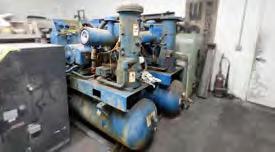
Used - Quincy 25 Horsepower Screw Compressors (2x) Taken from service | Optional: Refrigerated Air Dryer - $500 $3500 each
Eide Machinery Sales, Inc. 612-521-9193 www.eidemachinery.com

2018 Wasserman Sub-Component Nailer
• Assembles Trimmers, Jacks, Corners, Ells, Partition Leads, Channels & Headers
• 2x4 and 2x6 Capacity (double pass on headers to 2x10)
• Remote Fire & 3-Way Clamping
• Staggered or Straight Line Nail Pattern
• Squaring Stop
• Foot Pedal Control
• Reserve Air Tank
• 5' Infeed & Outfeed Roller Conveyor
• (2) Duo-Fast DF350S Strip Nailers
$19,900 NOW $18,900 FOB ND Wasserman & Associates 800-382-0329 www.wasserman-associates.com


NEW GALVANIZED STEEL STRAPPING
1 1/4" wide x .035 thick. $95 per coil. $1,900 per skid (21 coils). FOB PA. Wasserman & Associates 800-382-0329 www.wasserman-associates.com
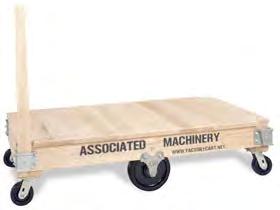
AMI's industrial floor trucks (material carts) are designed of hardwood construction, fitted with space-age phenolic, roller-bearing wheels, and ball bearing swivel casters for strength and durability. AMI's phenolic wheels resist shock without chipping. They are non-sparking, non-marking, and can be operated continuously between -50℉ and 260℉. They are unaffected by grease, oil or debris on your shop floor.
Series "B" AMI Industrial Floor Truck
Our swivel casters are precision built with perfectly aligned raceways. All cold-form parts are made to exacting tolerances from heavy-gauge steel, and are hardened for severe service and long wear. Series B-4 carts include four casters, one at each corner, to prevent "tri-cycling" of long lumber loads.
Standard Models Available Max Load Weight (lbs.)
2748 27" x 48" Series "B" & "C" 2500
3248 32" x 48" Series "B" & "C" 2500
3260 32" x 60" Series "B" & "C" 2800
3660 36" x 60" Series "B" & "C" 2800
3672 36" x 72" Series "B" 4000
4072 40"
3696
*Other models and sizes are available on request. FOB NC. Wood Tech Systems 765-751-9990
www.woodtechsystems.com
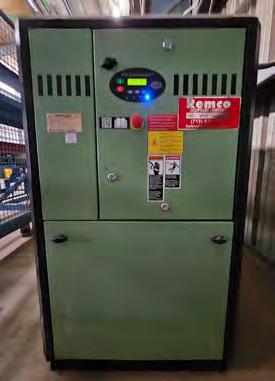
2022 Sullair Rotary Screw Air Compressor
• Model 1112E
• 43.7 CFM at 175 PSI
• 460 Volt / 3 Phase $4,900 FOB WA Wasserman & Associates 800-382-0329
www.wasserman-associates.com

Hain Vent Block Drill
Hain Company Vent Block Drill. From the OEM’s website, “The Vent Block Drill is designed to make lumber, truss and wall panel manufacturing yards more efficient by easily converting scrap wood into useable vent (frieze) blocks. By simply inserting a block, the VBD has one button to press and the rest is automatic. It can drill 1, 2, 3, or 4 holes and you can adjust the block size in 15 seconds or less. The VBD processes each job quickly and tests have shown that it will produce in excess of 360 vent blocks per hour. Operation is simple and even a first time user can begin drilling blocks in a matter of minutes. The machine is enclosed for safety and the back cover can easily be removed for maintenance.”
5 HP motor, block sizes 2×4 through 2×12 on center drill holes, or 2×14 off-center drill holes. Carbide tipped drill bits. 10 ga. aluminum construction. 60″ x 60″ x 33″ height. 100 PSI air required. 440 volt, 3 phase electrical required. Net weight 750 lbs.
$9,995 FOB OR Wood Tech Systems 765-751-9990 www.woodtechsystems.com

SL-Laser Truss Projection Heads
• September 2023 SL-ProDirector 7
Laser Projection Heads (3 Available)
• 9,900 - May 2019 SL-ProDirector 6 Laser Projection Head (1 Available)
$14,000 FOB OR Wasserman & Associates 800-382-0329
www.wasserman-associates.com

2020 Ranger RS Lumber Retrieval System
• Fully Automatic Laser Guided Lumber Retrieval System
• 5 Lumber Carts (6' to 20' Lumber)
• Vertical Dividers for Magazine Carts
• Vacuum Pick Head System
• Perimeter Safety System (Light Curtains, Fencing & Gate)
• 50' x 28' Footprint
• 5 Extra Custom Built Lumber Carts
• De signed to fit Monet Deasuw DeRobo Saw
• Available July 2024
• Video available upon request
$94,900 NOW $79,900 FOB NE Wasserman & Associates 800-382-0329 www.wasserman-associates.com
Reduction!

Hain 210" Powered Measuring System
• Powered (1 Phase) Measuring System
• Inches System (21 Stops at 10" Centers)
• 15' Roller Conveyor with Stands
$6,225 NOW $5,250 FOB CA Wasserman & Associates 800-382-0329
www.wasserman-associates.com



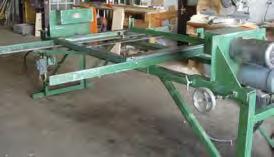

BAM “Ovation”
Door Machining Center (DMC)

New Builders Automation Machinery “Ovation” series, door machining center (DMC). Fully programmable, two-stage door machine featuring (27) axes of operation. Can be specified with either two or four front machining heads. Machine is side-eject, direct-drive with helical gear racks and gear protection from dust. The door loader is driven by an absolute encoder; no stepping motors, belts or exposed ball screws are used.
More information Click Here
Price based on configuration Wood Tech Systems 765-751-9990 www.woodtechsystems.com


Associates 800-382-0329 www.wasserman-associates.com Sweed Scrap (Band) Chopper with Stand 1/2 HP Motor (115/208-230 Volt)
$1,900 NOW $1,750 FOB NE. Wasserman & Associates



Since 2006, we've been helping businesses of all kinds build their online presence. We make websites and software for the construction industry to empower companies to reach a wider customer base and engage their audiences. Companies all around the world work with us to make websites and apps that people actually want to use. Reach out to Wolf X Machina if you're a business and you want a website that actually drives results.



Builders Automation
Machinery (BAM) door loader, model 2001. Allows you to stack door slabs horizontally and feeds them into a horizontal door machine like the BAM model 996E-TS. Mechanically adjusts door stack height vertically as slabs are fed into machine. Clamp automatically adjusts to type and size of door slab: steel, solid-core or hollowcore, from 6-ft to 8-ft heights. Electronic, programmed controller manages the loading process. Loader positions the door stacks adjacent to the door machine infeed to save effort of the operator. Pneumatic motor and heavy-duty drive train provide dependable continuous use. Cycle time approximately (30) seconds per


By Sean Shields, SBCA Director of Marketing
n today’s construction environment, direct collaboration between building designers and component manufacturers is largely nonexistent outside of the RFI process. The consequence of this is two-fold: one, building designers often don’t understand how structural components are designed and perform so they don’t specify them, and two, designers don’t include all the necessary information on their building plans before they go out for bid.
To bridge that gap in communication and information, SBCA has created a new event series: SBCA Component Craft.
Each SBCA Component Craft symposium is designed to begin addressing those common outcomes by bringing architects, engineers, residential building designers, and inspectors together under one roof to explore how structural components are designed, fabricated, and installed in the field.
SBCA Component Craft is a new regional education series created to bridge the gap between those who design, build, and regulate structural components and the manufacturers who make them. Through a combination of technical education, hands-on demonstrations, and meaningful dialogue, attendees will gain a deeper appreciation for the complexity and precision behind roof trusses, floor trusses, and wall panels.

For building designers, this event offers a rare opportunity to step inside the component design and manufacturing process and understand how design decisions translate to manufactured results. Ultimately, it will help designers understand how component specification can unlock new architectural and structural possibilities that are more material and cost-efficient.


For the structural building component industry, it’s a chance for the design community to understand our industry, allow them to exchange insights with other building designers who work with components, and give them insight into how to approach plan development to maximize the benefits inherent in component framing.
Based on past experience, SBCA has learned that events like SBCA Component Craft don’t just deliver education, they build meaningful relationships. By fostering understanding between design and inspection professionals, these events will help ensure that everyone involved in a project understands how vital the component manufacturer is in the process and utilizes their expertise in delivering the best structural framework possible.
SBCA encourages every component manufacturer to invite the building designers, engineers, code officials, and partners they work with to attend SBCA Component Craft. It’s an investment not just in education, but in collaboration, innovation, and the future success of their business and our industry.
To help get the word out, SBCA has created a Media Toolkit that includes ready-to-use materials and templates to make sharing easy: Access the Media Toolkit Here.
What: A new regional symposium series connecting the people who design and regulate the use of structural components.
Who: Architects, engineers, code officials, and residential building designers.
Why: To build confidence, clarity, and a better understanding of how roof trusses, floor trusses, and wall panels are designed and perform.
Where: The Brewtorium Brewery & Kitchen, Austin, TX
When: February 24–25, 2026
Learn more: https://sbcacomponentcraft.com/
Additional Locations in 2026: Boston, Nashville, Southwest U.S.

Each symposium presents a great opportunity to open these important lines of communication, and Austin is only the start. If you have any questions, please reach out to me at sshields@ sbcacomponents.com or 224-244-5204.

December 2 SBCA–Northeast Chapter Meeting online
December 3–5 The Buildings Show 2025 Toronto, ON
December 5 SBCA–New York Chapter Meeting online
December 7 Mountain States Lbr & Bldg Mat Dealers (MSLBMDA) BrewfestDenver, CO
December 8–9 SBCA Southwest Quality Bootcamp Sacramento, CA
December 9 BLD Connection Mid-America Connection Conference Olathe, KS
December 9–11
Structural Building Components Assoc (SBCA) & National Framers Council (NFC) Open Quarterly Meeting (OQM) Napa Valley, CA
December 10–11 LBM Expo 2025 Uncasville, CT
December 11 BLD Connection Nebraska Connection Conference La Vista, NE
December 12 WTCA Ohio Chapter Meeting online
January 3–5 BLD Connection 2026 BizCon South Altoona, IA
January 19–21 BLD Connection 2026 BizCon North St. Cloud, MN
February 5–7 Orgill 2026 Spring Dealer Market Orlando, FL
February 9–11 University of Texas Building Professional Institute (BPI) Houston, TX
February 11–12 BUILDEX 2026 Vancouver, BC
February 11–14 American Institute of Architects (AIA) Leadership Summit 2026 Washington, D.C.
February 11–12 Bldg Mat Suppliers Assoc (BMSA) Learning Exchange & LBM ExpoHickory, NC
February 17–19 Natl Assoc of Home Bldrs (NAHB) Intl Builders Show (IBS) Orlando, FL
February 23–27 EduCODE 2026 Las Vegas, NV
February 24 BLD Connection Wisconsin Connection Conference Wisconsin Dells, WI
February 24–25 SBCA Component Craft Austin, TX
March 1–4 MFE Leadership Summit Vail, CO
March 4–5 3rd Annual Mass Timber Construction Summit Toronto, ON
March 4–5 5th Annual Modular Construction & Prefab Symposium Toronto, ON

March
March
March
April
April

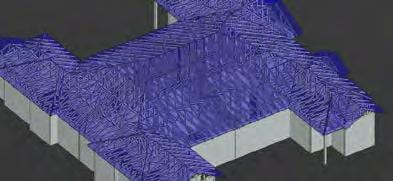




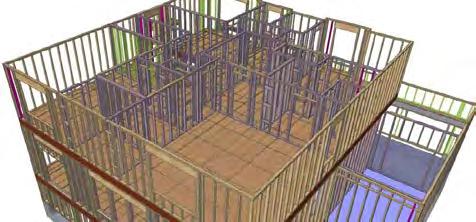




















Accidents can happen anywhere and at any time. Many workplace accidents and injuries can be prevented if workers know the causes of accidents and they are taught how to protect themselves to avoid injury. Although no one wants to get hurt at work, there are four major causes for injuries on the job.
The number one cause of on-the-job injuries is physical overload. These injuries are cause by lifting (too heavy a load or lifting improperly), straining, overreaching, bending, and twisting. To protect your back against injury, learn and use proper lifting techniques, never bend or twist while lifting or carrying, and whenever possible, use a mechanical aid or get help with the load from another worker.
Los accidentes pueden ocurrir dondequiera y en cualquier momento. Muchos accidentes de trabajo pueden prevenirse si los trabajadores conocen sus causas y se les enseña cómo protegerse para evitar lesiones. Aunque nadie desea sufrir una lesión en el lugar de trabajo, dichas lesiones se deben a cuatro causas primarias.

La causa número uno de lesiones en el lugar de trabajo es la sobrecarga física. Estas lesiones son ocasionadas al levantar objetos (cargas demasiado pesadas o levantamiento inadecuado), realizar un gran esfuerzo físico, intentar realizar demasiadas actividades, o al doblar o torcer la espalda. Para evitar lesiones de la espalda, aprenda y emplee técnicas adecuadas de levantamiento, nunca doble o tuerza la espalda al levantar o transportar objetos, haga uso de dispositivos mecánicos o pida ayuda a un compañero de trabajo.
The second most common cause of worker injury is being hit by or hitting against an object. The best way to protect against these accidents is to be alert to the potential hazards and to use appropriate protective equipment (hard hats, eye protection, gloves). Be aware of your body and the space around you. Give yourself enough clearance when passing by or ducking under equipment or going through a passageway.
To avoid injuries from falls, be sure that your footing is firm and wear slip-resistant soled shoes. Watch where youre walking. Dont walk backward to direct equipment or leap from one level to another. Make sure you can see over the load you carry and that walkways are well-lighted and clear of obstacles. Clean up spills or grease spots and use handrails when walking on stairs.
La segunda causa más común de lesiones en el lugar de trabajo son los golpes contra objetos. La mejor forma de protegerse contra estos accidentes consiste en mantenerse alerta en torno a los peligros potenciales y usar el equipo de protección apropiado (cascos protectores, protección para los ojos, guantes). Esté consciente de su cuerpo y del espacio libre alrededor suyo. Mantenga una distancia prudencial al agacharse o desplazarse por debajo de los equipos, o al pasar por pasillos de dimensiones reducidas.
Para evitar las lesiones debidas a caídas, apoye bien los pies sobre el suelo y use zapatos con suelas antirresbalones. Camine con cuidado. No camine de espaldas ni salte de un nivel a otro. Compruebe que lo que lleva cargado no le obstaculiza la visibilidad, y que el camino esté bien iluminado y sin obstáculos. Limpie los derrames o manchas de grasa y use los pasamanos al caminar por escaleras.

The fourth major cause of on-the-job injury is machine-related accidents, that is, getting caught by moving machine parts. When working around any moving equipment (a machine that rotates, slides, or presses) always use safety shields, guards, and lock-out procedures. Only work on a machine that you have been trained to use. Never wear jewelry or loose-fitting clothing that could get caught in the moving equipment. Be alert to the hazards you face on your job and learn what you should do to protect yourself against accidents and injuries and follow your companys established safety guidelines.
La cuarta causa más común de lesiones en el lugar de trabajo la constituyen los accidentes con máquinas, es decir, accidentes que se producen al ser atrapado por las piezas móviles de una máquina. Cuando trabaje cerca de cualquier equipo móvil (máquinas rotativas, cintas transportadoras o prensas) use siempre protectores de seguridad, cubiertas y procedimientos de bloqueo. Sólo use las máquinas para las cuales haya recibido capacitación. Nunca tenga puesto joyerías ni ropa holgada que puedan prenderse en un equipo en movimiento.
Manténgase alerta sobre los peligros a los que está expuesto en su trabajo, aprenda qué debe hacer para protegerse contra accidentes y lesiones, y siga las pautas de seguridad establecidas en su empresa.
The above evaluations and/or recommendations are for general guidance only and should not be relied upon for
compliance purposes. They are based solely on the information provided to us and relate only to those conditions specifically
or implied, that your workplace is safe or healthful or that it complies with all laws, regulations or





Remote EWP Designer New England ID: J15380
MiTek Multifamily Truss Designer Texas ID: J15378
Plant Manager - Wall Panels - J15375 Central Florida
Truss & EWP Design Manager - J15376 Central Ontario
Truss Design Manager - MiTek software J15370 Florida
Remote Truss Designer J15313 New England
Truss Designer J15339 New England
Outside Sales - Truss/Panel J15371 Northeast
Truss Design Manager - Apline J15366 Texas
Light Gauge Steel Truss Designer - Alpine Remote, Hybrid, or South J15374
Remote Truss Designer - MiTek J15361 Mid Atlantic
Remote Mega-Multifamily Truss Designer J15368 Mid-Atlantic
Sales Representative - J15355 Central Ontario
Sales Manager - J15373 Southern Alberta
In Office or Remote Truss Designer - MiTek Software J15369 Florida or remote in FL or GA
Truss Designer - Multifamily/MiTek J15362 TN
Truss Designer - Multifamily/MiTek J15363 TX
Remote Truss Designer - Alpine Software J15350 Remote
Truss Designer-J15365 Western Canada
Remote Multifamily Truss Designer J15356 Texas
Truss Designer J15357 East Texas
Implementation and Support Specialist J15306 100% Remote - Northeast
Truss & Wall Panel Designer J15226 Northeast
Remote Truss Designer J15307 Full Time Remote
Truss Production Manager-J15354 Greater Toronto Area
Remote Truss Designer - Alpine J15246 Midwest Candidate preferred
Senior Truss & Wall Panel Designer - MiTek J15352 Midwest
CFS Truss Designer | Wall Panel Designer J5323 Midwest
Outside Sales - Truss/Lumber J15345 Southeast
Truss Designer - On-site - MiTek J15346 Florida
Truss Designer J15348 South
Senior Truss Designer - J15342 Mountains
Project Coordinator J15272 TN
Remote Truss Designer - MiTek J15228 Florida
Truss Designer J14165 Carolinas
Senior Truss Designer-J15300 Eastern Ontario
Senior Truss & EWP Designer - J15320 AB, BC, ON
EWP Designer - J15314 BC
ID: C18378
Remote Truss Designer
Relocation: REMOTE, USA - Western
Experienced Roof Truss Designer with a strong foundation in the building industry, seeking a role where my skills can contribute to company growth and long-term success. I thrive in fast-paced, high-pressure environments and excel at understanding customer needs, communicating clearly, and motivating teams through effective delegation. I recognize the importance of company-wide financial performance and strive to support overall success through efficient operations.
My industry background is diverse, including truss design, hardware, lumber, equipment operation (small and heavy), construction, and home inspections. I began my career in the plant and advanced into design, gaining hands-on knowledge at every level.
I designed trusses using EdgeCad and Computrus to generate customer estimates and batch cutting reports for sawyers and builders. I prepared engineering packages for submission to Building and Safety Departments and use EdgeTrack for scheduling, delivery coordination, and billing. I’m now transitioning to MiTek SAPPHIRE Structure for advanced design and project management and have completed many training programs for MiTek SAPPHIRE and am ready for the next challenge.
ID: C18549
Remote Wall Panel Designer
Relocation: USA - ALL States Wall panel designer with 10 years' experience including production builders, single family custom and small to MegaMultifamily projects. MiTek Sapphire software experience.
ID: C18426
Remote Truss Designer
Offshore Truss Designer with MiTek experience. The candidate is a civil engineer with 6 years' truss design experience for companies in Texas and Florida. Prior work for BFS and smaller manufacturers. Bilingual Spanish/English with a company set up to make paying easy. Scored 89 on our truss design skills evaluation, which is near the senior designer level. He is also SBCA I & II certified. He is willing to go to work immediately.
Compensation: $65-75k as a subcontractor, no benefits or taxes.
We haven't represented offshore candidates in the past but feel this candidate is worth a shot. Please contact Thom for additional details.
ID: C10122
Designer/Design Manager - Truss
Relocation: Iowa
Senior Designer. - Advanced. Candidate has 24 years Truss Ddesigner experience and 5 years Truss Design Manager experience. Products include floor trusses, roof trusses, I-Joists, and hardware. Markets include single family, custom, high end, multi-family, light commercial, and agriculture. Primary duties include design, layout, optimization, cutting/production documents, and takeoff. Secondary duties include checking others work, repairs, customer service, inside sales, software maintenance, training, and filling in for the Design Manager as needed. Software experience includes MiTek and Keymark. Training received includes WTCA Level 2. Education: High School Graduate and Batchelors degree.
Motivating factors: advancement, compensation, benefits, work location, job security, and relocation.
ID: C18604
Truss Designer - Remote (MiTek)
Relocation: Alberta
I currently design & layout roof trusses, floor trusses, I-Joists and EWP from PDF plans and specifications for pricing. Also does engineering using MiTek, then uploads to Management or MBA in the past. Once sold, and field measurements are provided, I update the project and clean up the layouts, trusses and release them to the shop. I also answer questions from sales and the shop as needed as well as training newer designers. Most of my projects are single family, but I have also done several apartments, hotels, assisted living centers, and other commercial projects. I want to grow, learn, and become a better designer to be a valued team member.
ID: C10968
Senior Wood Truss Designer - Part Time Relocation: Florida, Alabama, Georgia, REMOTE
Candidate desires to use his career long industry experience to be the best Part Time Remote Designer you have. Prior truss plant owner for 10 years, strong production and operations management background, and JobLine Senior Designer rating in truss design using MiTek software. Also has FASTBeam experience. Products: floor & roof trusses. Markets: Single family custom, multi family, tract and light commercial. Was successful in creating strong teams in production, design and customer service, but the local economy and overwhelming competition was more than he could overcome from a small plant perspective. Degree: BSEE
Compensation: Based on employee or 1099 status.
Thom's Notes: I have worked with this
candidate as an employer for years. Very detail oriented. Fair, honest, and customer service oriented. Very design/liability conscious. Scored 98
ID: C10853
Remote Design Manager | Remote Offshore Design Project Manager
Relocation: Texas, Georgia, USA - South
Top level Engineering/Design Management candidate, 14+- years experience Truss, 4+- Panel experience. Has experience building and integrating offshore design resources with internal design departments and training design managers to better utilize offshore capabilities. Large volume manufacturer experience. MiTek Sapphire design/layout proficient. Too confidential to go into more detail.
Compensation: $120k+
ID: C11370
General | Plant Manager/Operations - Truss/ Panel/Framing Package
Relocation: Texas, Arizona
20 years' experience. Started in production, advanced to Saw Supervisor, Production Manager, Plant Manager, now General Manager. As General Manager operated a $125M truss plant. Tripled output and reduced errors and labor cost. Developed and implemented standards and procedures to manage quality and costs. As Plant Manager (4 years), manage all the operation of the manufacturing plant, such as Productivity, logistics, efficiencies, costs. As Production Manager (12 years), manage all the areas of the manufacturing across the plant. Safety, quality control, efficiencies, HR, etc... Software: MiTek, Word, Excel, OptiFrame. Products: R & F Truss, Panel, Framing package. Markets: Single Family, Multifamily, Custom Homes. Bilingual English/Spanish spoken and written. Degree in Industrial Engineering.
Compensation: $90's+ bonus ($100k min)
ID: C10897
Design Manager/Senior Designer/PE/ Optimizer - Truss/Panel/EWP Relocation: REMOTE
30 year industry veteran, started as a Truss Designer, earned his way to Design Manager over 20+ designers. MiTek - Advanced, AutoCAD proficient. BSCE - PE.
Compensation: Open??
Thom's Notes: PE with Mid Atlantic seals
ID: C18565
Designer: Truss/Panel, Wood/Steel, BIM Relocation: North Carolina Material take-offs, proposals, job-site meetings, Submittal Tracking, Excellent Problem-solving Skills, Material Ordering,


Field Measuring, 3-D Modeling Program (3-D and 4-D BIM in-house), Generated material take-offs from the BIM model, Coordinated RFI's thru the BIM model, Clash detection between wood trusses, structural steel and LVL's. 3-D Scan's of job-sites. Scheduled / Distributed work to 6 designers Cross-trained all designers in roof floor and wall panels for whole-house design.
ID: C18370
Plant | Location | General Manager - Truss/ Panel
Relocation: California, Nevada Highly experienced (20+ years) roof and floor truss, and wall panel manufacturing manager. Started in the plant as builder, then sawyer, supervisor, truck driver, maintenance manager, designer, outside sales, plant manager, operations manager, and general manager. OSHA trained, developed and implemented safety programs. Successful turn around experience, hands on ability to work with departments to combine individual strengths into one team effort, lower costs, and meet quality and volume expectations. Past experience negotiating better vendor programs to lower costs and improve inventory turns.
ID: C10507
Senior Management - Truss/Panel/Lumber/ Installed Services
Relocation: USA - Western
I am a Diverse driven individual seeking a position in the fast paced construction component industry where my professionalism in sales, business and leadership skills along with a strong proven background in, General Management, Operations, Sales Management, strategic alliances, business development, team building, P&L experience and Customer Satisfaction will play an integral part in growing new business, nurturing existing business or developing company operations to meet the highest level of efficiencies, standards and safety while having fun doing it!
Relocation: Maine, Massachusetts, New Hampshire, Ontario, Vermont
As District Manager: Responsible for the financial performance of three wood truss and wall panel plants, two Millwork and door assembly facilities and one installed labor location in multiple states. Group revenues increased from $50 million/year in to $70 million per year. Devised a “buy versus make” purchasing protocol in to ensure that internal truss and Millwork plants were operating at capacity before using outside vendors that supplied similar products. Spearheaded a “hub and spoke” organizational structure for three truss plants. This plan optimized scarce design talent, reduced clerical expenses, and synchronized output at each plant. Restructured the installed labor division to include material estimators, lumber salespeople and cost accounting methods in 2005. The changes resulted in a 400k gain in profits. Drafted corporate training material for fall protection and new hire safety orientation.
As General Manager: Won “Gold Store” award for exceeding company goals in profits, sales growth, and ROA. Served on a corporate manufacturing audit and operating performance team that made recommendations to under performing truss plants. Two of the facilities audited became “Gold Stores” the following year. When the sales of three district stores were allocated to the truss plant, the lost business ($1.5 million/year) was made up and organic sales grew by over 10%. Sales volume grew from $11 million per year to over $15 million per year.
ID: C18387
Division Manager, VP Operations, President - Truss | Panel | Building Materials | Pro Dealer
Relocation: Arizona, Colorado, Florida, Georgia, Hawaii, Maryland, Texas, USASouth, Virginia, Washington DC, Wisconsin
Executive level manager, VP, President with $1+B P&L responsibility. Lumber, building materials, trusses, wall panels, and CFS background. Inquire to discuss this candidate.
ID: C18449
Estimator | Designer - Truss, Panel | Prior carpenter
Relocation: Ohio, Pennsylvania
Prepare and distribute estimates to competing bidders. Calculate labor, time, and material estimated per individual job. Read, analyze, and interpret residential and commercial blueprints. Ensure projects meet the proper building codes and standards for the industry. Communicate with prospective bidders both over the phone and in person. Design and engineer roof trusses, floor trusses, pre-fabricated wall panels, and EWP. Gained first-hand experience setting
trusses in the field during prior construction job. Design roof systems to be most efficient and inexpensive when being constructed in the field. Design complete models in MiTek Sapphire. Design and engineer roof trusses and transfer loads throughout the structure as need. Also design and engineer beams and hangers when necessary.
ID: C12414
Truss Designer | Wall Panel Designer | All Hats Relocation: Arizona
Engineered panel and truss design, developed material take off for turnkey build up, worked in coordination with multiple plants and design teams, worked closely with material suppliers on take offs and estimating.
I've worked for decades in the construction industry. Not only in new construction, but additions and remodels as well using innovative designs for added value and to drive down cost. In addition to experience with MiTek, Wallbuilder and other design software packages, I have extensive manual trig/math skills. I use these to back check questionable loads as well to design from scratch in the field when needed. I have also written tutorials for the training of others and checked other designer's work as a Design Manager at a Panel Plant. All things being equal, I love working in components whether designing, cutting, building or setting components at the site.
ID: C18430
Truss Designer | Remote Truss Designer Relocation: USA - South, USA - Southwest, USA - ALL States
Extensive experience in truss estimating and design. Proficient in designing roof and floor trusses for a variety of projects including: custom homes, track homes, multi-family, mega-multifamily, and light commercial projects. I always get everyone involved with the project like architect, engineers, homeowners, and sales personnel Many times I go to the job site for the convenience of the framer and see what kind of condition or changes they might have; this way we will be working on the same page. Also included in my experience is purchasing material, negotiating contracts, setting up deliveries, steel and cmu detailing for steel columns and beams, with almost 25 years of experience in the construction business. MiTek Sapphire.
ID: C18412
Plant | Production | Operations ManagerTruss/Panel
Relocation: Georgia, South Carolina, Florida
Oversaw all aspects of the manufacturing and shipping of wood truss component systems for the building industry: roofs, floors and wall panels; 2 shift operation; 8 million in sales.
Managed the master schedule based on sales orders, plant volume, and lead time through the Mitek Management Business Application System.
Followed all orders through the process to insure OTD (on time delivery).
Handled all phone communications from the customer as it related to changes in the delivery schedule.
Batched jobs through the engineering software to the component saws and truss building tables
Quality Assurance – WTCA/TPI
ID: C18367
Wall Panel Designer | Remote Wall Panel
Designer | Mega-Multifamily Relocation: Utah
Remote wall panel design for medium to large scale MF. Remote estimating using MiTek Sapphire to get a more accurate material count. 100,000 - 500,000 sq ft MF projects primarily in the New England Market with the panel plant being in New Brunswick. Also worked on projects in the Arizona, Texas, and California markets.
Compensation: $70's+ (45+- hours)
ID: C18365
Intermediate Canadian Remote Truss Designer - Sapphire Relocation: Ontario
Remote Truss Designer available.. Currently provides technical support and designs to lumber distributors for roof systems for residential and commercial applications. Provides technical assistance and support to the distribution staff to meet client demands for engineered wood structural applications. Ensures that wood truss fabricators, lumber distributors and specifiers have adhered to established building standards, codes and practices. Maintains extensive knowledge of structural analysis programs such as MiTek SAPPHIRE Structure design software. Analyze/prepare engineered wood designs and details for Design Engineer review and approval. Generate manufacturing information and quotations for sales team and management. Prepares the job for production. Canadian codes and standards experienced.
ID: C15958
Operations/Plant Manager - Millwork | Doors | Ply | Flooring
Relocation: Colorado, Illinois, Indiana, Iowa, Kansas, Kentucky, Minnesota, Missouri, Montana, Nebraska, Nevada, North Carolina, South Dakota, Tennessee, Virginia, Wyoming
30 years' experience starting in production and advancing to multi-plant operations manager. Door experience includes managing three Production Managers and five Production Supervisors, consisting of 300 hourly employees producing 11,000
doors and 10,000 face frames per day. Responsible for the manufacturing functions of all mill operations, five frame component machining cells, three frame assembly operations, four door component machining cells, three door assembly clamps, three door profiling lines, two wide belt sanding lines and specialty machining and assembly cells.
Flooring experience: Responsible for all plant functions including budgeting and P&L. Managed six Department Managers: two Production Departments, Quality Assurance, Materials, Human Resources including SHE, and Plant Engineer/Maintenance Manager including the CI program. Their staffs consist of eleven Supervisors and 330 hourly employees. The door plant operation dries lumber, cuts dimension stock, assembles and sands the doors. The panel plant produces the veneered flat and raised center panels, by cutting engineered wood and veneer from flitch and pressing the veneer to the substrate. Both plants are equipped with finishing lines.
ID: C15995
Truss Designer - MiTek
Relocation: Florida
Truss Designer. Primary duties: design, layout, optimization, and cutting/production documents. Secondary duties: checking others work. Software used: MiTek and AutoCAD. Component experience includes floor trusses and roof trusses. Market experience includes single family, multifamily, light commercial, and agriculture. My volume was varied depending on projects. 2 years experience, MiTek software.
ID: C18277
Professional Engineer | Engineering Manager - Engineered Wood Products, Components Structural Hardware | Codes & Compliance
Relocation: Maryland, Minnesota, North Carolina, Pennsylvania, South Carolina, USA - Eastern, Virginia, Washington DC
Experienced and successful professional engineering manager with over 25 years experience in improving productivity and resolving structural problems for engineered wood product and truss manufacturers and developing innovative design software programs. Also skilled in building outstanding teams and relationships among sales, manufacturing, and engineering stakeholders. Highly educated with exceptional employment history & experience.
ID: C18250
Remote Senior Light Gage Steel Truss/ Panel Designer.
Relocation: Texas
Top level Light Gage Steel Senior Remote
Designer with Truss and Panel and well as metal frame commercial project experience. Alpine, Truswal and Keymark experience.
ID: C17230
Remote Wall Panel Designer - Sapphire
Relocation: Newfoundland
My objective is to be part of a team/company and prove I am reliable, show my ability and my willingness to learn! In addition to being a newer wall panel designer, I have learned software such as Mitek Sapphire, Revit 2017, Bluebeam Revu 2016. I have recently done jobs such as designing garages and adding on additions to homes. Jobs I have worked in wall paneling include a massive wall panel job for the US (500,000+ SFT) and designed units for a senior complex. In addition to wall panels...I also add in blocking, windows, doors, etc. I also do bundling and paperwork as well.
ID: C16152
Mega-Multifamily General Manager
Relocation: Florida
Mega-Multifamily General Manager. Apply to discuss this candidate. Highly confidential.
ID: C11781
Truss Design Manager
Relocation: New York
Worked on the most complicated custom projects, commercial buildings, and apartment complexes. Quickly became a team leader and was considered company wide as an expert in truss framing and computer applications. Provided training for a group of 30 experienced component designers in topics including load tracking, truss and layout optimization, and hardware specification. Optimization training helped to reduced material costs by 5%. Developed departmental procedures to increase consistency and accuracy of all designs and estimates. Reduced errors on repetitive projects by 25% by creating the master project file database, which organized and provided fast and easy access to project information. Streamlined estimating process for commercial construction projects. Analyzed the final cost of completed projects and applied results to new estimates. Reduced estimating time by 75% Managed up to 10 designers/sales reps. Software: MiTek, AutoCAD.
ID: C15999
Outside Sales - Truss | Wall Panel | EWP | Installed Sales
Relocation: Alabama, Georgia, Kentucky, North Carolina, South Carolina, Tennessee, Virginia
16 years' experience in outside sales of trusses, wall panels, engineered wood components, stairs and other building materials. Projects range from tract to high volume multifamily apartments. Has developed new territory, improved sales in lagging markets, and met or exceeded sales goals in most years. Has turn key
installed sales experience, and has limited design skills from the past. Please inquire for additional information. Easy relocate.
ID: C15857
Senior Truss Designer | Remote Truss Designer | Design Manager Relocation: California
Truss Designer. Primary duties: design, layout, optimization, cutting/production documents, and takeoff. Secondary duties: checking others work, scheduling, repairs, customer service, inside sales, and field measurements. Software used: MiTek and AutoCAD. Component experience includes floor trusses, roof trusses, I-Joists, EWP, and hardware. Market experience includes tract, single family, single family custom, multifamily, and light commercial. My volume was varied depending on projects. Has used MiTek, Alpine, AutoCAD, and Microsoft Office programs.
The candidate has been out of the industry, working in parallel jobs, and wants to return to a design position. Scored Senior Designer using an HP calculator, 8 years after his last truss design job. Speed was faster than average too. It may take a little time for him to get up to speed on the latest software. Ranked 5 out of 5 in our system.
ID: C10810
Designer/Inside Sales - Truss Relocation: Virginia
6 years design experience, 1 inside sales. Primary duties: design, layout, optimization, cutting/production documents, and takeoff. Secondary duties: scheduling, repairs, customer service, inside sales, and field measurements. Software used: MiTek, AutoCAD, and CAD - Other. Component experience includes floor trusses and roof trusses. Market experience includes tract, single family, single family custom, multifamily, light commercial, and agriculture. My volume was varied depending on projects. Past carpenter and framer. Has an engineering related associates degree/ drafting
Compensation: $45k+
ID: C15679
LGS Truss & Panel PE Relocation: USA - Eastern, USA - South
As Engineering Manager I was responsible for oversight of all technical and engineering engagements. Design of light gauge metal trusses, wall panels, shear walls, for hotels, retirement homes and other commercial and residential structures. Making jobs viable by replacing red-iron with light gauge metal was key to solidifying more projects. I was actively engaged in computer software development of truss design and coordinating overseas programming efforts into truss layout.
As Senior Technical Services Engineer, I held the nation-wide responsibility for all light gauge cold-formed steel truss engineering including field applied repair design. I provided technical advice and counsel to our staff and functioned as a subject matter expert (SME) for all three product divisions. As a result, I augmented my professional registrations to include 38 States, 1 District, and 1 Canadian Province.
ID: C14490
General Manager | Operations Manager | Turn Around Relocation: Colorado, Delaware, Illinois, Indiana, Iowa, Kentucky, Maryland, Michigan, New Jersey, New York, North Carolina, Ohio, Pennsylvania, Tennessee, Virginia, Washington DC, West Virginia, Arkansas, Massachusetts, Minnesota, Missouri, Montana, North Dakota, Rhode Island, South Carolina, South Dakota, Texas, Wisconsin, Florida, Georgia, Idaho, Kansas
Full P&L turnaround of a family owned light gage steel panel manufacturing company. Turned it form a mom and pop, into a large, functioning manufacturing company that had systems, KPI programs, personnel development, and a growing customer base. Ready to help take your company to the next level.
ID: C11976
Design/Estimating/Sales - Truss/LGS
Relocation: New York
Experienced wood & cold formed steel truss designer with 12 years experience using MiTek Industries and Aegis Metal Framing products and software. Seasoned sales professional with 8 years experience selling; wood roof & floor trusses and accessories, metal roof trusses and accessories, and the sale of component design and engineering services. A highly motivated designer and sales person with a proven track record for achieving excellence, building long term business relationships, and providing impeccable service to contractors, engineers, architects, and developers throughout New York and New England. Specialize in design build and defense contracting from early pre-bid/qualification stages through installation.
ID: C11895
Designer - Truss/I-Joists, EWP
Relocation: California, USA - ALL States, Texas, Alaska
Designer. Primary duties: design and cutting/production documents. Secondary duties: checking others work and field measurements. Software used: Alpine and MiTek. Component experience includes floor trusses, roof trusses, I-Joists, EWP, and hardware. Market experience includes single family, single family custom, multifamily, and light commercial. BS Civil Engineering. Software: Alpine, MiTek, AutoCAD, Word, Excel.
ID: C10324
Plant Manager/Designer/Design Manager/?? - Truss/Panel/Installed
Relocation: Georgia
As Location Manager, managed one estimator, four designers, a secretary/ data entry person, and a shop of 40 truss production employees. As Senior Designer, primary duties: design, layout, optimization, and takeoff. Secondary duties: checking others work, scheduling, repairs, customer service, and training. Software used: Alpine and AutoCAD. Component experience includes floor trusses, roof trusses, wall panels, framed openings, I-Joists, EWP, hardware, lumber, and complete framing package. Market experience includes tract, single family, single family custom, multifamily, and light commercial.
Thom's Notes: Very experienced, willing to wear many hats.

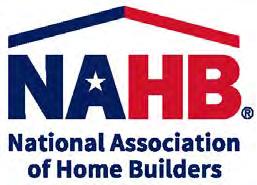
Posted November 5, 2025 on NAHB Now | The News Blog of the National Association of Home Builders Reprinted with permission.
Every year, NAHB and other industry experts and economists bring their latest insights to the NAHB International Builders’ Show® (IBS). For 2026, IBS offers an unparalleled lineup of IBS Education sessions that cover every sector of the housing industry: single-family, multifamily, remodeling, design trends, and building materials.
The Builders’ Show in 2026 is in Orlando, Feb. 17–19. This is the only event where you’ll find all these speakers and sessions at one conference:
The Outlook: 2026 Housing & Economic Forecast (Super Session) — This IBS Super Session is hosted by NAHB Chief Economist Dr. Robert Dietz, as well as Realtor.com Chief Economist Danielle Hale and Zonda Chief Economist Ali Wolf. This expert panel will explore shifts in housing inventory, buyer demographics, and regional differences across the country, plus provide forecasts for home prices, single-family and multifamily starts, and remodeling trends.
2026 Multifamily Market Outlook — NAHB AVP of Forecasting & Analysis Danushka Nanayakkara-Skillington and Cotality Chief Economist Selma Hempp will take a deep dive into multifamily housing, and explore the construction pipeline, financing challenges, shifting geographies of growth, and more.
Remodeling by the Numbers: Market Outlook & Business Benchmarks for 2026 — Featuring NAHB Economist Eric Lynch, as well as remodeling expert Alan Hanbury, this data-driven session combines insights from NAHB’s latest Remodeling Market Outlook with exclusive findings from the 2026 Remodelers’ Cost of Doing Business study. Explore the key economic and demographic trends shaping the industry and walk away with vital financial benchmarks for profit margins, operating costs and expenses.
Home Trends, Buyer Preferences & Most Likely Features for 2026 — Explore the latest research on the home and community features buyers want most in this session led by NAHB AVP of Survey Research Rose Quint and architect and industry thought-leader Donald Ruthroff. Discover what trends are shaping new home design, including how preferences shift by price-point. See these trends in action, illustrated through award-winning designs from recent Best in American Living Awards™ (BALA) winners.
Building Materials in Flux: Pricing Trends, Trade Dynamics & Supply Chain — Gain timely insights into the ever-evolving trending issue of building materials, hosted by NAHB Director of Tax and Trade Jesse Wade, custom builder and industry leader Don Dabbert, and industry expert and analyst Nishu Sood from John Burns Research and Consulting. Learn how key building materials like lumber, gypsum and cement are affected by shifting pricing trends, ongoing tariff disruptions and other international trade dynamics. Explore what’s driving material costs and availability, and how global and domestic supply chains are adapting.
Register today and secure your Expo+Education Pass to attend these and other valuable IBS Education sessions. Visit Eye on Housing to see more of the latest economic data.

Posted November 6, 2025 on NAHB Now | The News Blog of the National Association of Home Builders Reprinted with permission.
Confidence in the market for new multifamily housing increased year-over-year in the third quarter, according to the Multifamily Market Survey (MMS) released today by the National Association of Home Builders (NAHB). The MMS produces two separate indices. The Multifamily Production Index (MPI) had a reading of 46, up six points year-over-year, while the Multifamily Occupancy Index (MOI) had a reading of 74, down one point year-over-year.
The MPI measures builder and developer sentiment about current production conditions in the apartment and condo market on a scale of 0 to 100. The index and all its components are scaled so that a number below 50 indicates that more respondents report conditions are poor than report conditions are good. The MPI is a weighted average of four key market segments: three in the built-for-rent market (garden/low-rise, mid/high-rise and subsidized) and one in the built-for-sale (or condominium) market. The component measuring garden/low-rise increased three points to 51, the component measuring mid/high-rise units increased nine points to 37, the component measuring subsidized units rose nine points to 55, and the component measuring built-for-sale units posted a six-point gain to 35.
The MOI measures the multifamily housing industry’s perception of occupancies in existing apartments on a scale of 0 to 100. The index and all its components are scaled so that a number above 50 indicates more respondents report that occupancy is good than report it is poor. The reading of 74 indicates existing apartment owners are positive about occupancy overall, but this is the lowest reading recorded over the last 11 quarters on this measure. Sentiment for mid/high-rise apartments is noticeably weaker than it is for the other two rental market segments. The MOI is a weighted average of three built-for-rent market segments (garden/low-rise, mid/high-rise and subsidized). The component measuring garden/low-rise units dipped one point to 76, the component measuring mid/high-rise units held steady at 66 and the component measuring subsidized units dropped five points to 81.
“The MPI and MOI are giving us a mixed picture of the multifamily market, with strength in some market segments, but weakness concentrated in the mid-to-high-rise developments that tend to be common in high-density metro areas,” said NAHB Chief Economist Robert Dietz. “This is consistent with NAHB’s Home Building Geography Index, which shows multifamily construction activity growing in areas with low population densities but weakening in the larger metros.”
The MMS was re-designed in 2023 to produce results that are easier to interpret and consistent with the proven format of other NAHB industry sentiment surveys. Until there are enough data to seasonally adjust the indices, changes in the MPI and MOI should only be evaluated on a year-over-year basis. For more recent information about the market, the survey contains a separate question asking multifamily developers to compare current market conditions to conditions three months earlier. In the third quarter of 2025, 10% of respondents said the current market is better, and 22% said it is worse. However, the vast majority of developers—68%—said that the market is currently about the same as it was three months ago. For additional information on the MMS, visit nahb.org/mms For more information on the NAHB Multifamily program, please visit NAHB Multifamily.

Posted November 11, 2025 on NAHB Now | The News Blog of the National Association of Home Builders Reprinted with permission.
International trade remains a source of volatility across the building materials sector, particularly in the softwood lumber market. Recent adjustments to antidumping and countervailing duty (AD/CVD) rates, combined with the imposition of Section 232 tariffs, have increased the trade-related cost of Canadian imports. As a result, the average duty rate on Canadian softwood lumber entering the U.S. has tripled, now hovering around 45%. These elevated trade barriers pose additional challenges for home builders who rely on Canadian lumber to meet construction demand.
Canada remains the dominant supplier and a longstanding trade partner in the sector. In 2024, Canadian softwood lumber exports to the U.S. totaled $5.1 billion, accounting for approximately 74% of the total value of softwood lumber imports. But where in the U.S. are these imports headed?

Trade data from the U.S. Census Bureau enables tracking of import destinations at the state level. However, it is important to note a key limitation in the data. The “state of destination” reflects where the importer is located or where the shipment is initially received, not necessarily where the lumber is ultimately used. This means that although trade data can highlight logistical patterns, it does not fully capture the final point of consumption, especially in cases where materials are redistributed across state lines.
Jesse Wade, NAHB director of tax and trade policy, provides more details in this Eye on Housing post.

Posted November 18, 2025 on NAHB Now | The News Blog of the National Association of Home Builders Reprinted with permission.
Market uncertainty exacerbated by the government shutdown along with economic uncertainty stemming from tariffs and rising construction costs kept builder confidence firmly in negative territory in November.
Builder confidence in the market for newly built single-family homes rose one point to 38 in November, according to the National Association of Home Builders (NAHB)/Wells Fargo Housing Market Index (HMI) released today.
“While lower mortgage rates are a positive development for affordability conditions, many buyers remain hesitant because of the recent record-long government shutdown and concerns over job security and inflation,” said NAHB Chairman Buddy Hughes, a home builder and developer from Lexington, N.C. “More builders are using incentives to get deals closed, including lowering prices, but many potential buyers still remain on the fence.”

“We continue to see demand-side weakness as a softening labor market and stretched consumer finances are contributing to a difficult sales environment,” said NAHB Chief Economist Robert Dietz. “After a decline for singlefamily housing starts in 2025, NAHB is forecasting a slight gain in 2026 as builders continue to report future sales conditions in marginally positive territory.”
In a further sign of ongoing challenges for the housing market, the latest HMI survey also revealed that 41% of builders reported cutting prices in November, a record high in the post-Covid period and the first time this measure has passed 40%. Meanwhile, the average price reduction was 6% in November, the same rate as the previous month. The use of sales incentives was 65% in November, tying the share in September and October.
The HMI index gauging current sales conditions increased two points to 41, the index measuring future sales fell three points to 51 and the gauge charting traffic of prospective buyers posted a one-point gain to 26.
Looking at the three-month moving averages for regional HMI scores, the Northeast rose two points to 48, the Midwest fell one point to 41, the South increased three points to 34 and the West gained two points to 30.
HMI tables can be found at nahb.org/hmi. More information on housing statistics is also available at Housing Economics PLUS

High Point, NC (November 12, 2025) – Stiles Machinery successfully hosted its semiannual Manufacturing Solutions Seminar (MSS) on November 5–6 at its High Point, North Carolina facility. The two-day event reached full capacity on both days, making it one of the most well-attended seminars in the event’s 30-plusyear history. Woodworking manufacturers across North America participated in an in-depth exploration of the latest technologies, trends, and strategies shaping the future of wood manufacturing.
The seminar featured live work cell demonstrations, expert-led presentations, and interactive breakout sessions focused on key industry topics. Panel discussions featured a distinguished lineup of guest speakers, including Matthew Cathy (CFX Products), Winfried Dell (imos), Greg Easton (Woodgrain), Tyler Nay (Trim Art), and Brett Warriner (Powell Valley Millwork). Discussions focused on addressing current industry challenges, integrating automation, and exploring both the current state and future potential of AI technologies.

“It’s always a privilege to host so many engaged manufacturers at this event,” said Sylvain Dubuc, Southeast Regional Director at Stiles Machinery. “Coming together to share ideas, celebrate successes, and learn from one another reinforces the incredible opportunities within the woodworking industry and how Stiles can continue to support manufacturers in achieving their goals.”
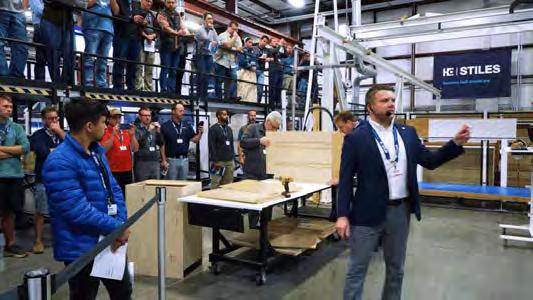
By fostering collaboration and knowledge-sharing, Stiles Machinery continues to support manufacturing and address the challenges facing the woodworking industry. Events such as MSS and Stiles’ regional workshops equip manufacturers with tools and strategies for long-term success.
The Manufacturing Solutions Seminar is free to attend, and registration for the upcoming spring event will open early 2026. For more information on MSS and other Stiles events, visit stilesmachinery.com/events.

November 6, 2025—West Fraser Timber Co. Ltd. announced that it will permanently close both its Augusta, Georgia and 100 Mile House, British Columbia lumber mills by the end of 2025 following an orderly wind-down. This decision is the result of timber supply challenges and soft lumber markets.
The 100 Mile House lumber mill is no longer able to reliably access an adequate volume of economically viable timber. Challenging softwood lumber demand, higher duties and additional tariffs have compounded this situation. The mill closure will impact approximately 165 employees at the site and reduce West Fraser’s capacity by 160 million board feet.
The closure of the Augusta lumber mill is a result of challenging lumber demand, and the loss of economically viable residual outlets, which combined has compromised the mill’s long-term viability. The closure will impact approximately 130 employees at the site and reduce West Fraser’s capacity by 140 million board feet.
West Fraser expects to mitigate the impact on affected employees by providing work opportunities at other company operations, where available.
West Fraser is also announcing that the 2024 indefinite curtailment of its lumber mills in Huttig, Arkansas and Lake Butler, Florida will now be permanent, and the mills will be dismantled and the sites sold. The Company also confirms its replacement Henderson, Texas mill has commenced start up and the adjacent mill has ceased operations.
The closure of these mills better positions West Fraser to compete in this challenging environment. The Company expects to record restructuring and impairment charges in the fourth quarter of 2025 associated with this announcement and the factors outlined herein.
West Fraser is a diversified wood products company with more than 60 facilities in Canada, the United States, the United Kingdom, and Europe, which promotes sustainable forest practices in its operations The Company produces lumber, engineered wood products (OSB, LVL, MDF, plywood, and particleboard), pulp, newsprint, wood chips, other residuals, and renewable energy. West Fraser’s products are used in home construction, repair and remodelling, industrial applications, papers, tissue, and box materials. For more information about West Fraser, visit www.westfraser.com.

October 30, 2025—Third Quarter 2025 Highlights, All Year-Over-Year Comparisons Unless Otherwise Noted:
• Net sales were $3.9 billion, a 6.9% decrease, driven by lower core organic net sales and commodity deflation, partially offset by growth from acquisitions.
• Gross profit margin decreased 240 basis points to 30.4%, primarily driven by a below-normal starts environment.
• Net income was $122.4 million, or diluted EPS of $1.10 compared to diluted EPS of $2.44 in the prior year period. Net income as a percent of net sales decreased by 360 basis points to 3.1%.
• Adjusted EBITDA decreased 30.8% to $433.7 million, primarily driven by lower gross profit.
• Adjusted EBITDA margin declined by 380 basis points to 11.0%, attributable to lower gross margin and reduced operating leverage.
• Cash provided by operating activities was $547.7 million, a decrease of $182.2 million compared to the prior year period. The Company’s free cash flow was $464.9 million, a decrease of 26.8%, compared to $634.7 million in the prior year period. The decrease was primarily driven by lower net income.
Peter Jackson, CEO of Builders FirstSource, commented: “Our third quarter results reflect the strength of our strategy and disciplined execution in a weak housing market. Over the past several years, we have transformed into a stronger organization powered by our leading network of value-added solutions, a relentless focus on operational excellence, and capital deployment. These pillars, combined with our scale and a team dedicated to exceptional customer service, reinforce our industry leadership position and our track record of success. By focusing on the factors within our control and leveraging our competitive advantages, we’re competing effectively today and are poised to accelerate growth in a normal starts environment and deliver sustainable, long-term value for our shareholders.”
Pete Beckmann, CFO of Builders FirstSource, added, “We continue to execute our strategy in a down market, responding to nearterm challenges by carefully managing costs while preserving our ability to invest for the future. Our financial agility, supported by a healthy balance sheet and strong free cash flow through the cycle, enables us to deploy capital prudently to fuel organic growth, pursue strategic M&A, and return capital to shareholders. These investments are bolstering our competitive position as we invest for the future.”
For 2025, the Company expects to achieve the financial performance highlighted below. Projected Net Sales and Adjusted EBITDA include the expected impact of price, commodities, and margins for 2025.
• Net Sales to be in a range of $15.1 billion to $15.4 billion.
• Gross Profit margin to be in a range of 30.1% to 30.5%.
• Adjusted EBITDA to be in a range of $1.625 billion to $1.675 billion.
• Adjusted EBITDA margin to be in a range of 10.6% to 11.1%.
• Free cash flow in the range of $0.8 to $1.0 billion, assuming average commodity prices in the range of $370 to $390 per thousand board foot (mbf).
Read the complete press release online

October 29, 2025—UFP Industries, Inc. a leading manufacturer focused on delivering value-added products across its Retail, Packaging, and Construction segments reported results for the third quarter 2025:
• Net Sales of $1.56 billion decreased by 5% due to a 1% decrease in price and a 4% decline in organic units.
• Diluted earnings per share of $1.29 compared to $1.64 a year ago.
• Net earnings attributable to controlling interest of $76 million compared to $100 million a year ago.
• Adjusted EBITDA was $140.0 million in the quarter, or 9% of net sales compared to 10% a year ago.
• New product sales were 7.6% of total sales.
• Repurchased approximately $350 million in company shares year to date in 2025.
• Reaffirming volume outlook across each business segment for the remainder of 2025.
Will Schwartz, President and CEO of UFP Industries commented, “Our third quarter played out largely as anticipated and reflective of the competitive environment we are seeing across our end markets. Visibility remains limited, particularly in markets tied to residential construction; however, trends across the majority of our business units have shown signs of stabilizing, demonstrating the benefits of our balanced portfolio and the team we have in place. I’m proud of how our team has navigated these challenging market conditions with our adjusted EBITDA margin approximately 200 basis points higher than 2019 levels despite competitive pricing and weaker demand, startup costs associated with growth investments and substantial investments to build our Surestone brand. We plan to gain market share, strengthen return on capital, and achieve margin improvements. As part of this plan, we will have reduced structural costs by $60 million from 2024 levels by the end of 2026.”
Schwartz continued, “Looking ahead, we are driving innovation across the product portfolio and making strategic investments to create shareholder value. Our long-term capital plans remain aggressive, with a bias toward driving growth through investment in our most attractive opportunities. M&A remains a key component to our capital allocation strategy, and we have identified targets across each of our business units that complement our core strengths. Our robust financial position remains a competitive advantage enabling us to repurchase approximately $350 million of our shares through the end of October, while increasing our cash dividend year over year. Grounded in the strength of our team and business model, we remain focused on the strategies to grow our core, higher margin businesses, develop innovative new products and drive operational efficiencies across our network of plants. We are confident in our ability to continue executing as we move into next year.”
• Site Built organic unit sales declined 15% in the quarter from year ago levels.
• Factory Built organic unit sales grew 4% in the quarter from year ago levels.
• Concrete Forming Solutions organic unit sales grew 12% in the quarter from year ago levels.
• Commercial organic sales grew 13% in the quarter from year ago levels.
• Construction gross profit and adjusted EBITDA each fell 18% respectively from year ago levels. Weaker volumes and competitive pricing in our Site Built business led the declines in the quarter as our other businesses reported profit growth in the quarter.

November 11, 2025—Big news from the ProTec team!
We’re proud to announce that Barry County Lumber/Brown’s Carpet One in Hastings, Michigan has officially joined the ProTec family.
Since 1945, Barry County Lumber has been a cornerstone in its community, known for quality products and trusted relationships. We’re excited to build on that legacy while expanding what both companies can do together.
Next week marks another milestone — our first trusses will roll off the line in Battle Creek, MI. This new capability allows us to serve the Hastings market with a fully integrated solution that combines local lumber supply with ProTec-built trusses, wall panels, and engineered wood.
With this addition, we’ll be able to:
• Serve builders directly in North-Central Indiana, Southwest Michigan, and the commercial market
• Continue our two-step partnership model with lumberyards across Northwest Indiana, the Lafayette area, and Eastern Michigan
• Strengthen purchasing, logistics, and service across every region we touch
The heart of Barry County Lumber will remain the same — same name, same people, same service — now backed by the manufacturing power and customer focus of ProTec.
Big things are happening, and we’re just getting started.
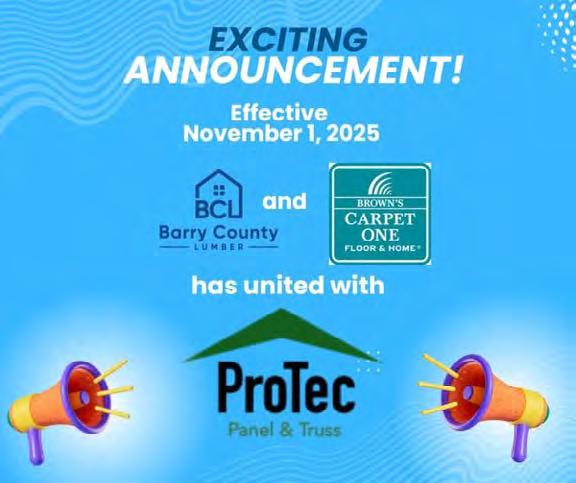

November 14, 2025—Mead Lumber is proud to announce the opening of its newest location, Mead Lumber of Sioux Falls, a fully operational lumber yard, serving professional builders, contractors, remodelers, and homeowners across the region. The company will celebrate the grand opening with a ribbon-cutting ceremony on Tuesday, December 2, 2025, featuring a luncheon, vendor demonstrations, and an after-work happy hour.
The Sioux Falls yard marks Mead Lumber’s 54th operating location across nine states, expanding the company’s reach and ability to serve the growing construction market of eastern South Dakota, western Minnesota, and northwest Iowa.
“We’re thrilled to grow our footprint in a community that continues to thrive,” said Dave Anderson, President and CEO of Mead Lumber. “This new location strengthens our ability to support builders with a full range of building materials and services, and it connects directly with our existing operations at Component Manufacturing Company and Reaves Buildings. It’s an exciting step forward for our team and our customers.”
Located at 1400 East Benson Road, Mead Lumber of Sioux Falls offers a comprehensive selection of contractor-grade materials including lumber, windows, siding, roofing, decking, and more. The new location complements Mead’s existing Sioux Falls operations: Component Manufacturing Company (CMC), which produces trusses, wall panels, and floor systems, and Reaves Buildings, which designs and builds engineered metal buildings. Together, the three operations now provide Sioux Falls area builders with a complete suite of building solutions, from structural components to finish materials, under one trusted local umbrella.
“Having a full-service lumber yard in Sioux Falls allows us to serve customers faster and more efficiently,” said J. Hoffman, Manager of Mead Lumber of Sioux Falls. “Contractors can now rely on one source for their projects. Our goal is to make every build simpler and more convenient for the pros who keep this community growing.”
The Grand Opening Celebration will take place from 11:30 a.m. to 6:30 p.m. on December 2, with the official ribbon cutting at 11:30 a.m. The event is open to all professional contractors, vendors, and community partners.
Mead Lumber is a 100% Employee Owned company that has become one of the leaders in the building materials industry, ranking in the top 10 nationally for companies serving Professional Builders. Mead Lumber now has 53 locations in Colorado, Kansas, Iowa, Missouri, Montana, Nebraska, Oklahoma, South Dakota, and Wyoming, including six truss and wall panel manufacturing plants and a countertop manufacturing facility. Mead Lumber specializes in providing a complete line of materials to builders and homeowners including lumber, building materials, trusses & wall panels, millwork, kitchen cabinets and countertops, siding, decking, windows, doors and hardware.

BRASELTON, Ga. — Oct. 27, 2025 — As America faces a growing shortage of skilled labor, power tool manufacturer Metabo HPT, a KOKI Group brand, is stepping up with “Bring Back Shop Class,” a purpose-driven campaign championing hands-on learning and career pathways in the skilled trades, supported by new data from a national survey. In partnership with the Shop Class Foundation, the initiative calls for restoring shop class as a core pillar of public education while providing training, mentorship, and tools to help prepare students for successful high-demand, skilled roles.
The “Bring Back Shop Class” Survey – conducted online in the U.S. by Ipsos on behalf of Metabo HPT with a nationally representative sample of 1,016 adults – underscores the need for skills-based education and career pathways in the trades.
• Hands-on learning needed in schools: 97% of respondents say it is important for high schools to bring back shop class or similar programs, with half (50%) saying it is extremely important, nearly one-third (31%) saying it is very important and 16% saying it is somewhat important.
• Majority would encourage skilled trades: If advising a high school student today, most (78%) would encourage a skilled trade career.
• Challenges remain for students: 62% cite pressure to attend a four-year college, 60% note social stigma, and 58% point to lack of exposure in high school as potential reasons young people avoid trades.
• Trades seen as AI-resistant: Nearly two-thirds (61%) believe careers such as electricians, plumbers, and carpenters are more secure from automation and AI disruption over the next decade than white-collar office careers (16%).
The campaign is powered by a new partnership with the Shop Class Foundation, a nonprofit that immerses students in framing, electrical, plumbing, and finishing as they collaborate on a fully functional tiny build each school year –gaining practical skills, confidence, and a pathway to the trades.
In high school, Shop Class Foundation co-founder Jeff Gibson knew college wasn’t the route for him. Fortunately, his school offered another path: shop class. Today, he runs a multi-state, high-end construction company and is working to give students the same opportunity he had. “Give students the right tools and guidance, and they can build anything,” said Gibson. “With Metabo HPT’s support, we’ve been able to expand our reach by 300% this year, giving more students access to real-world, hands-on learning. We’re not just teaching trade skills, we’re opening doors to meaningful careers and a future our students can be proud of.”
As part of the partnership, Metabo HPT will sponsor the build of a mobile shop class throughout the school year, providing materials, education, and professional-grade tools. Students meet for an hour each weekday for mentorship and hands-on instruction in construction techniques and tool safety, collaborating over 34 weeks to complete the project by May 2026.
Read the complete press release online

November 20, 2025—The softwood lumber industry has made major progress in codes and standards and in growing the market for lumber-based construction systems—but continuing investment is vital. Competitive material industries are eager to reclaim market share, and without continued industry support, hard-won gains could be lost.
To underscore the importance of this work, the SLB is spotlighting industry leaders, programs, and partners advancing market growth. This month, Nick Arkle, CEO of the Gorman Group, and Cade Warner, President and CEO of the Westervelt Company, highlight the importance of the SLB’s work to grow new markets for lumber by expanding wood construction in new building types.
“I’ve watched with great interest what the Softwood Lumber Board has achieved since its inception,” Arkle says. “Growing the demand for lumber through educating the designers and the builders, while also working on modernizing codes, has resulted in a huge positive shift in the use of wood for multiple construction solutions. It is very clear that the opportunities are boundless.”
“There’s an upward limit on how much lumber can be consumed in housing and industrial markets,” Warner says. “We need to add new demand by encouraging new uses of lumber and converting projects using other materials. The SLB accomplishes that work through the work of its programs, WoodWorks, the American Wood Council, Think Wood, and SLB Education. None of these programs are work that we could achieve on our own.”
Expect more insights from industry leaders and partners as the SLB continues to spotlight efforts to expand and protect lumber’s market share.
Watch Nick’s video
Watch Cade’s video
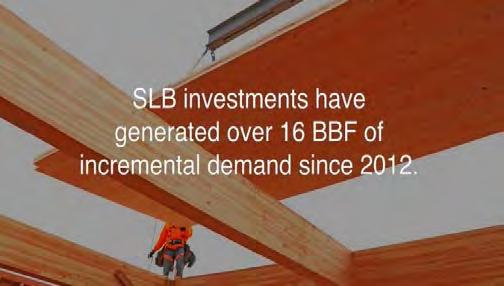


November 19, 2025—Overall, investment in building construction decreased 1.1% to $22.4 billion in September. Investment in the residential sector declined 1.7%, while that in the non-residential sector was virtually unchanged. Year over year, investment in building construction grew 6.0% in September. On a constant dollar basis (2023=100), the total value of investment in building construction in September decreased 1.4% from the previous month to $20.7 billion and was up 2.3% year over year.
Residential investment in building construction declines
Investment in residential building construction declined $263.1 million to $15.6 billion in September. This decrease was primarily attributed to the multi-unit component (-2.5%), followed by the single-family component (-0.6%).

Investment in multi-unit construction decreased $218.5 million to $8.4 billion in September. The decline was driven by Ontario (-$116.7 million), followed by Alberta (-$72.0 million) and British Columbia (-$32.7 million). In total, seven provinces and two territories contributed to this decrease.
In the single-family home construction sector, investment edged down $44.6 million to $7.3 billion in September. The decrease was largely attributed to Alberta (-$46.2 million), followed by Ontario (-$42.0 million). Quebec (+$22.5 million) and Saskatchewan (+$19.2 million) mitigated the decline.
Non-residential building investment edges up
In September, the value of non-residential investment in building construction increased slightly by $3.3 million to reach $6.8 billion. Moderate gains were observed in the institutional (+0.7%) and commercial (+0.1%) components, while the industrial component (-1.3%) continued to decline.
Investment in the institutional component rose $15.6 million to $2.1 billion in September. The increase was driven by Alberta (+$14.8 million) and supported by British Columbia (+$5.9 million). Ontario (-$6.7 million) moderated the national growth. Commercial construction investment increased $4.6 million to $3.3 billion in September. Gains in British Columbia (+$6.5 million), Manitoba (+$5.0 million) and Quebec (+$4.9 million) were tempered by a decline in Alberta (-$6.3 million). Meanwhile, investment in the industrial component decreased $17.0 million to $1.3 billion in September, marking the eighth consecutive monthly decrease. Ontario (-$5.8 million), Alberta (-$5.4 million) and British Columbia (-$4.0 million) led the declines among those recorded in eight provinces and one territory
In the third quarter, investment in building construction increased 0.6% (+$392.2 million) to $67.7 billion from the previous quarter and grew 7.5% on a year-over-year basis. Investment in the residential sector rose 0.9% to $47.5 billion in the third quarter. The single-family component (+5.0%) led this increase, while the multi-unit component (-2.3%) experienced a decline. Meanwhile, investment in non-residential building construction edged down 0.1% to $20.3 billion in the third quarter. A decline in the industrial component (-4.9%) was partially offset by gains in the institutional (+2.3%) and the commercial (+0.4%) components.
More information on construction, please visit the Construction statistics portal. For more information on housing, please visit the Housing statistics portal





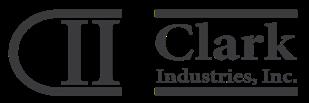















707-333-4507


















Designer-Truss and Wall Panel
HZ00018 | Arizona, USA
Under the direction of the Design Manager, the Structural Designer at FrameTec is responsible for creating structural designs and project estimating for Camp Verde, AZ Operations (FrameTec Alpha). You will be part of a team of Structural Designers responsible for the complete design of structural framing components (wall panels and trusses), lumber and hardware estimates and turnkey framing bids. You will be part of the team that creates the front-end design and quoting process for FrameTec Alpha, including estimating, preconstruction coordination, value engineering and quality control. This position requires both technical design and estimating
Designer-Truss HZ00004 | Florida, USA
A leading provider of building materials is seeking experienced Truss Designers to join its growing design team. This is a full-time position with remote, hybrid, or in-office flexibility. The ideal candidate will have strong MiTek software experience and a solid understanding of roof and floor truss design for residential and commercial projects.
HZ00019 | Texas, USA
We are seeking a seasoned Lumber Estimator with hands-on expertise in structural framing take-offs for both residential and light commercial projects. This role is highly specialized and requires experience in estimating complete framing packages for:
• Single-family residences
• Custom home projects
• Multi-family developments (apartments, duplexes, townhomes, condos)
• Light commercial or office structures requiring structural lumber
Outside Sales Representative
HZ00012 | New York, USA
We’re looking for a results-oriented
Outside Sales Representative to drive sales of engineered wood products (EWP) within a defined territory of Eastern and Central NY, and New England. This role involves working closely with building supply dealers and design professionals to promote and grow product usage.
The ideal candidate will bring a solid knowledge of structural framing systems and building materials, along with a proven ability to build strong customer relationships and close sales.
HZ00008 | Texas, USA
We have a client in Texas who needs Remote Multifamily Truss Designer(s) familiar with the Houston, San Antonio, Austin, and DFW areas. In addition to Texas, they sell to multiple other states. They have multiple plants and are bringing on another plant this year. If you inquire about this job, know that we will represent you to the best of our ability. With over 30 years of experience, The JobLine is your source for career moves that offer advancement and better-than-average compensation. Strictly Confidential!
Your compensation will include a base salary plus 1% of everything you produce over your threshold. They are looking for multiple designers, so bring your best co-workers. I can help them too and pay you for the referral!
HZ00002 | Florida, USA
We’re seeking an experienced Truss Design Manager to lead and mentor a team of truss designers for a wellestablished manufacturer in Central Florida. With two distinct opportunities available, you can choose the one that best fits your lifestyle.
The ideal candidate will have at least 10 years of experience using MiTek software and a minimum of 5 years in a leadership role, overseeing both in-office and remote design staff.
You’ll be responsible for scheduling and balancing design workloads, conducting training on new design processes, and ensuring adherence to code, specifications, and quality standards. This role includes reviewing architectural and structural plans, coordinating job releases to the plant, and communicating with customers to resolve design challenges
A growing building components manufacturer in Texas is hiring an experienced Truss Designer for an in-office role, with potential flexibility for remote work depending on qualifications. This is a privately owned operation where your contributions are recognized—no corporate layers or national chains.
In business since the 1960s, this company delivers roof and floor trusses, wall panels, and stocked lumber products to a loyal customer base of home builders and commercial contractors. Projects include tract homes, custom builds, light commercial structures, and multifamily developments.
HZ00023 | Wisconsin, USA
Our client is a small but growing truss and engineered wood product (EWP) manufacturer specializing in agricultural, single-family, and light commercial projects. They have consistently filled their production capacity during peak season and are now adding 40% more capacity. Much of this increase is dedicated to new sales efforts
# Job Description: We are seeking an experienced Outside Salesperson with Truss Design and Estimating Skills to join our client’s team. This hybrid role combines technical design expertise with sales leadership to build relationships, expand the client base, and drive revenue growth.
The company is expanding from $5M to $10M annual capacity within the next six months, and they need someone who can sell into that expanded capacity.






Missed the show? Catch up by reviewing our recap materials and exploring what’s new through downloadable content.

Thank you to all the building partners who made this event possible!

Joe Kannapell, P.E.

erseverance through tough times is what earns success, as proven again by two men in our industry named Ronnie. They logged a combined eight decades serving builders, surviving two severe recessions, enjoying several good years, and also facing tough transitions when their employers were bought out. Ronnie Schwartz took a straighter but still bumpy path, while Ronnie Gipson took a more circuitous and uncertain route, yet both demonstrate what can be achieved with commitment and hard work.
Both Ronnies started as teenagers in small rural towns in the South. Schwartz got into trusses in 1984 because he happened to live next door to a generous owner, Charles Meyers. Meyers had started his plant, Hanover Fabricators, near Richmond, VA, in 1963, backed by local contractors who sensed the potential of the new truss technology. Over the next 20 years, Meyers became a major supplier along the I-95 corridor between Richmond and Washington, D.C. and needed to delegate some of his design work. He had observed his young neighbor excelling in high school drafting and contractor-related summer work, but he hesitated to hire him at graduation because he felt that Schwartz’s parents wanted him to go to college. But several months after Schwartz went to work at a Ford dealership, Meyers lured him away by offering him a $1.50 raise to $4 per hour, and Schwartz did not look back.
As was often the case in early truss startups, Meyers was a minority owner who had free reign running a business that his partners knew nothing about, and who himself had to learn all aspects of the business from scratch. From his start until near his retirement, Meyers worked atop a stack of blueprints on his desk, never straying far from the nuts and bolts of the business. Even after Ronnie Schwartz became an accomplished take-off man and truss designer, Meyers continued to check his work, and, in the process, facilitated his protégé’s rewarding career.
Gipson got into trusses when he left his job building houses in Paducah, KY, in 1982, and followed an associate to a small truss plant in Chickasha, OK. After a short stint designing trusses there, he was hired to do the same for Pfeiffer Industries in northeast Atlanta but was quickly promoted to run their turnkey framing and eventually their truss plant. In 1988, Gipson took the opportunity to become General Manager of Warner Robins Supply’s truss plant, where he earned his management stripes over a ten-year period. Finally, in 1998, Gipson returned to the Atlanta market he knew well to serve as VP of Truss Manufacturing for Williams Brothers Lumber Co., one of the largest building supply dealers in one of the fastest-growing housing markets, where Gipson was responsible for four truss plants scattered around the Atlanta metro area.

Both Ronnies were well situated for the prosperous years of the late 1990s and early 2000s, but their companies also became too valuable for their owners. In 2003, in the 13th year of the housing expansion, Charles Meyers and his partners sold Hanover Fabricators to Steve Jones, owner of an EWP and gypcrete supplier. In 2005, Williams Brothers was sold to Home Depot Supply, adversely affecting Ronnie Gipson’s eight-year tenure.
Ronnie Gipson left Williams Brothers shortly after the acquisition and instead ran Wheeler’s Lumber’s truss plant. Unfortunately, Atlanta’s housing market collapsed from 70,000 units to 30,000 units during his one-year tenure, forcing Wheeler’s into bankruptcy. With no housing recovery in sight, and no one hiring, Ronnie Gipson doubled down on his confidence in the Atlanta market. Risking nearly a half million dollars, he joined with his wife Michele and daughter Stacy, along with sales pro Brandon Dyer, to form Georgia Truss in mid-2008 along Atlanta’s growth corridor. Gipson secured a lease on a 10,500 sq. ft. building, and made highly favorable deals on the truss equipment that was glutting the market. By mid-2009, housing starts had dropped to 7,000 units, one tenth of 2004’s high, and the Gipsons struggled to avert liquidation. But, as the housing market finally hit bottom, and, due to his strong relationships, the Gipsons gained enough commercial business to begin the path to prosperity. By 2015, Atlanta was back to 30,000 starts, and Georgia Truss was working three shifts and 24 hours per day.

By the time Ronnie Schwartz’s employer, Steve Jones, had moved and reequipped his truss plant, the recession had already kicked in along the entire Richmond to D.C. corridor. Fortunately, Jones had the ability to tap into the still-resilient multi-family sector from relationships he had established with his other businesses. With his newly acquired and more automated equipment, and the design resource that Ronnie Schwartz and others he mentored provided, Jones was able to grow his sales during this downturn.
Both Ronnies were fortunate to have a full decade of growth years as the economy rebounded. Ronnie Gipson grew his business to sales of over $3 Million per month from two facilities before selling to US LBM in 2022. Ronnie Schwartz grew his abilities and engineered a countless number of successful truss jobs before retiring after 41 years, while working at the same drafting board upon which he started.

This tale of two Ronnies is a tale of two routes to an accomplished career in the truss business. Both started in engineering, but soon their paths diverged. Ronnie Schwartz took a somewhat stable path using his technical talents and gained a well-deserved retirement, while Ronnie Gipson took a much more volatile path using his entrepreneurial abilities and also set himself up for a good retirement with the family who got him there. Both also can be proud of their life’s work, building great businesses.





The Industry-Leading Manufacturer of Panelized Wall Panel & Floor Cassette Equipment.


The Framing Station with Locators is designed to hold the plates, subcomponents, and studs squarely in place for fastening to ensure quality panels every time. This model is ideal for companies that manufacture wood wall panels, such as off-site building manufacturers, manufactured home builders, and modular builders.
The Panels Plus panelized wall panel systems are more ergonomic than traditional construction methods and are developed at an ergonomic working height. This eliminates the need to continually kneel or hunch over to build wall panels – improving employee health and safety.



